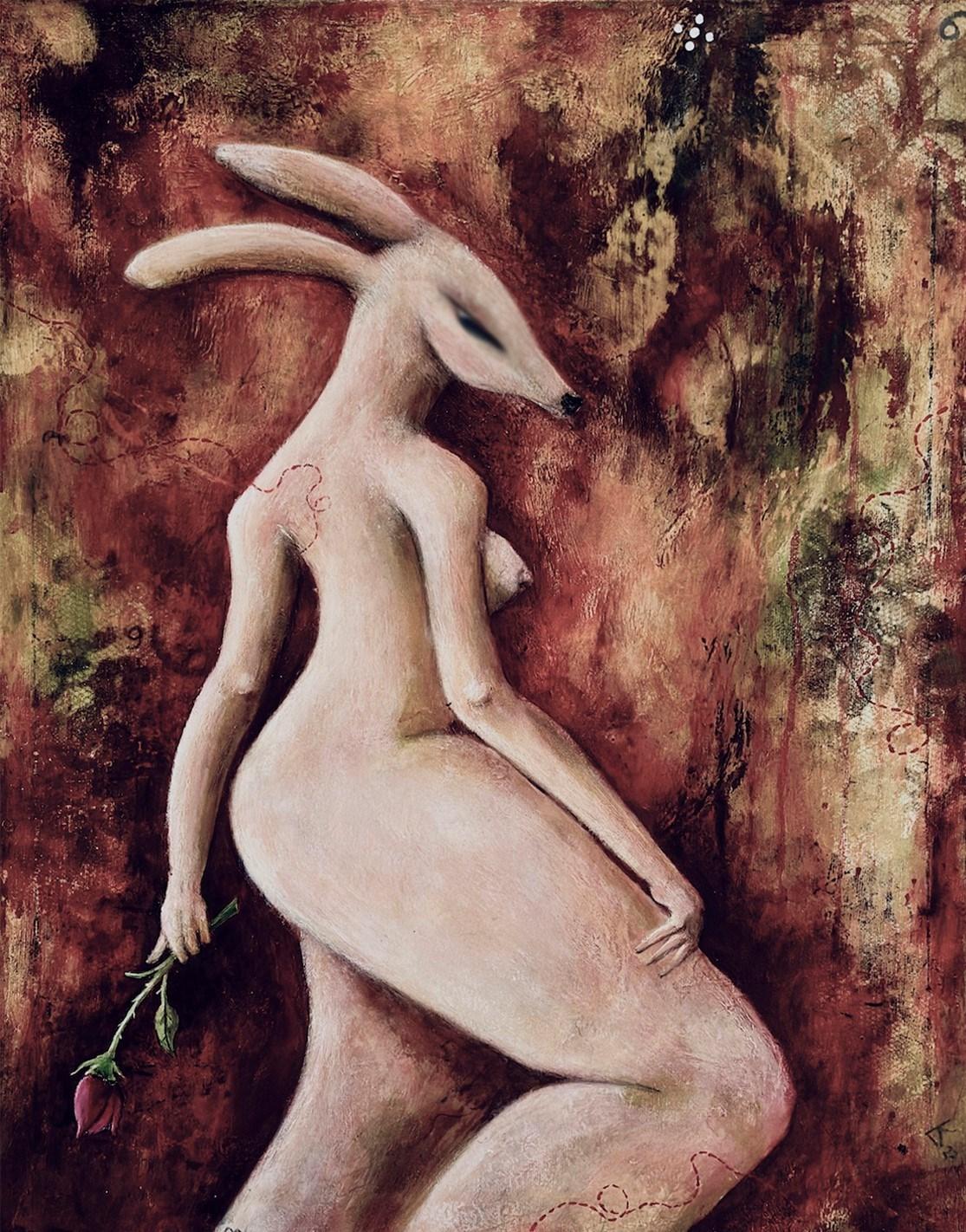s t u d i o











LORRAINE FILDES - PAGE 82

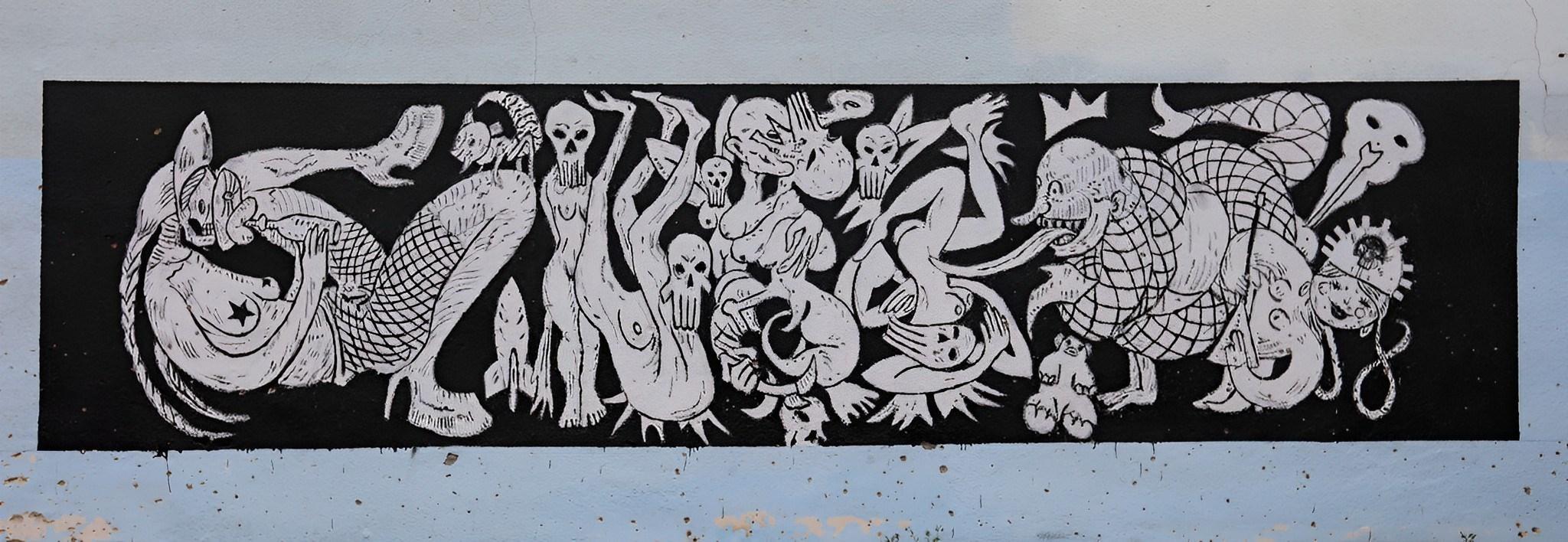
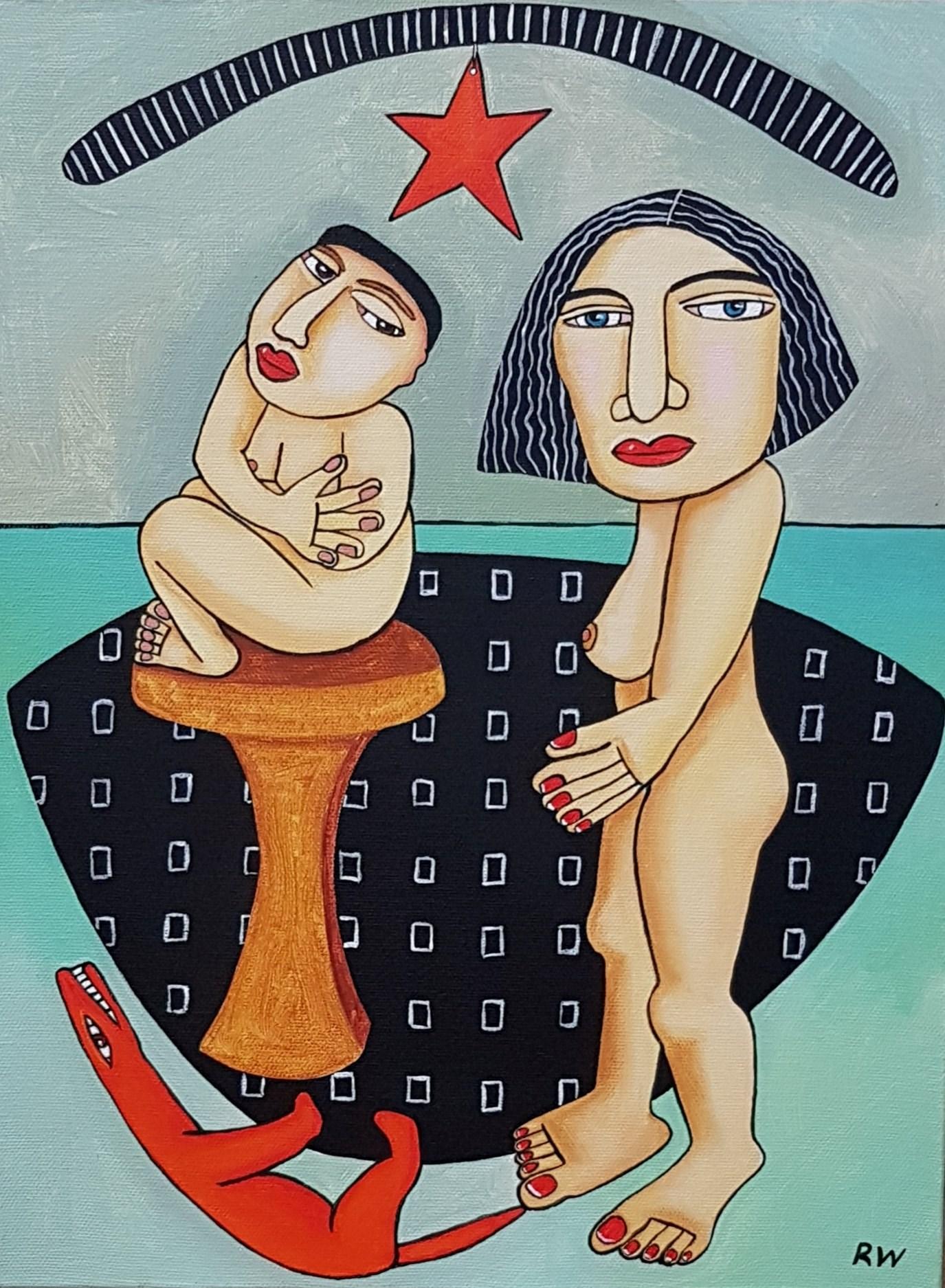
Jody Graham
Leise Knowles
Sasi Victoire
Hellen Rose
George Gittoes
Barbara Nanshe
Lorraine Fildes
SEIGAR
Maggie Hall
Margot Broug
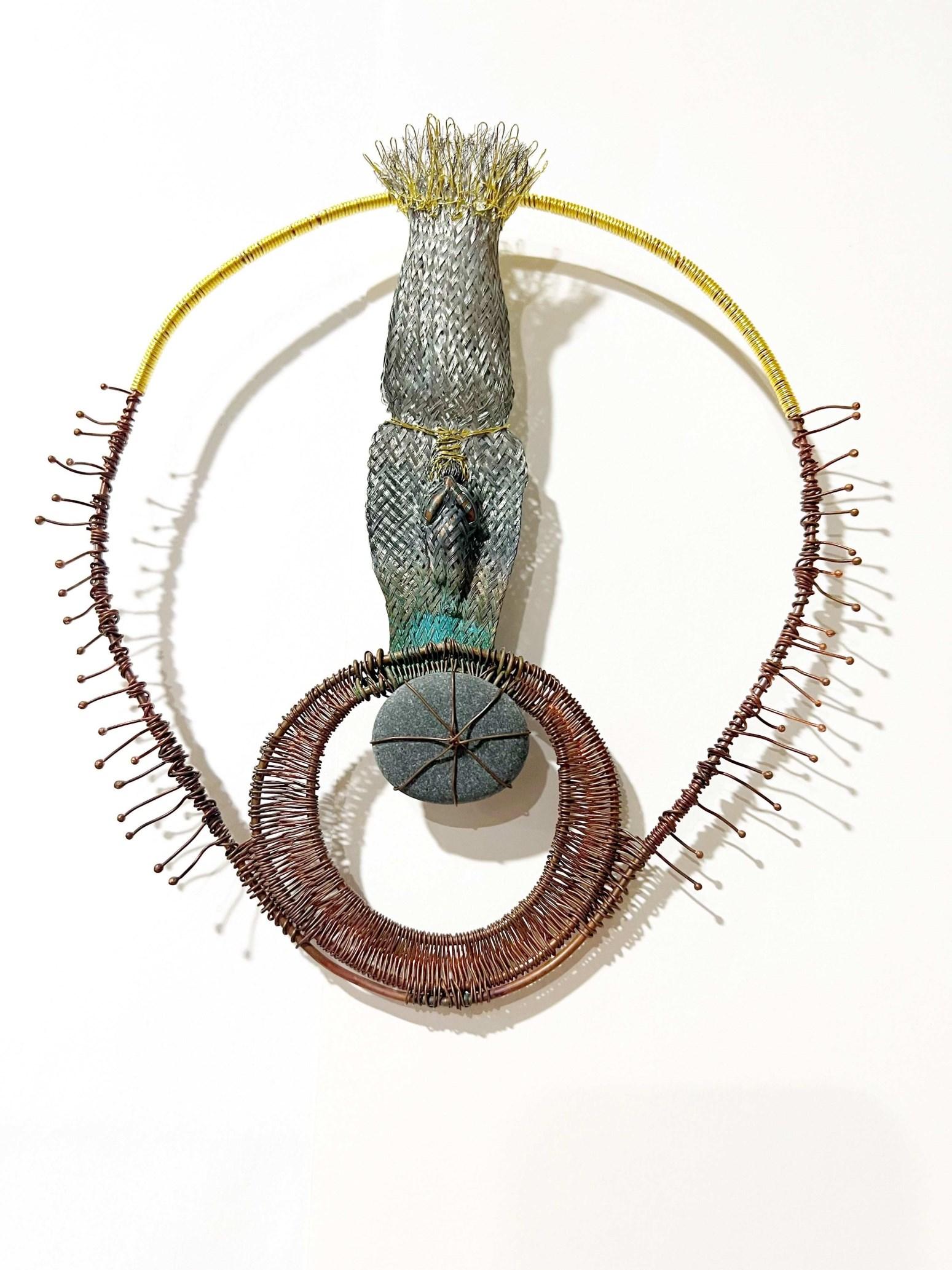
Brad Evans
Elizabeth Lish Skec
Peter J Brown
Reese North
Eric Werkhoven
Robyn Werkhoven
Monique Werkhoven
Helene Leane
Art Systems Wickham Gallery
Timeless Textiles
Newcastle Potters Gallery
Straitjacket Gallery
Dungog by Design
Studio La Primitive
Wall Sculpture : Earth Morphs Sun Copper, Zinc, Enamel, Patina, 2023, 200 x170mm.
Greetings to ARTS ZINE contributors and readers to our July issue 2023.
The July issue introduces a noteworthy and dynamic selection of artists and writers.
Sydney artist Jody Graham explores innovative drawing techniques -drawing is the nucleus throughout Graham’s multidisciplinary art practise. Graham also has a passion for collecting found items - to rescue and restore, with the objective of recycling and re-purposing both materials and techniques.
Leise Knowles, a surrealist artist, photographer, poet and teacher. Knowles has a deep knowledge and passion for the modernist genre of Surrealism, Post-colonial Australian art history, contemporary Indigenous art practices, & Postmodernism.
Sasi Victoire is a multi-media artist and author presently living and working in Dungog, NSW. Victoire uses a variety of art processes with a focus on community and cultural collaborations that are issues based to achieve quality exhibitions.
Internationally acclaimed artist and film maker George Gittoes this month presents a riveting overview of his Ukraine experience of art and war 2022-23.
Accomplished performer and film maker Hellen Rose writes about I Live in a Bombed Apartment Block in Borodyanka. (Written on second residency of filming in Ukraine 2023, with partner George Gittoes)
Newcastle artist and jewellery designer Barbara Nanshe previews her latest jewellery selected for the Romanian Jewellery Week 2023 in Bucharest.
Artist and poet Maggie Hall features a disquieting poem THE LAST SUPPER: Schindler’s Ark, with images - AI Artwork created through prompt engineer & creator Maggie Hall.
Lorraine Fildes, travel writer and art photographer presents Melbourne City of Art.
International Spanish artist and photographer SEIGAR includes a series of photos – Tales of Edinburgh.
Contemporary artists Eric, Robyn and Monique Werkhoven preview their forthcoming August exhibition Mad Moments, at Art Systems
Wickham Gallery, Newcastle, NSW.
Newcastle artist Margot Broug features her forthcoming July exhibition
- Growing Home, at the Creative Incubator Gallery, Newcastle, NSW.
Don’t miss out reading new works by resident poets Brad Evans, Reese North, Elizabeth Lish Skec, Peter J Brown and Eric Werkhoven. ART NEWS and information on forthcoming art exhibitions. Submissions welcomed, we would love to have your words and art works in future editions in 2023.
Deadline for articles 15th AUGUST for SEPTEMBER issue 53 2023.
Email: werkhovenr@bigpond.com
Regards - your editor Robyn Werkhoven

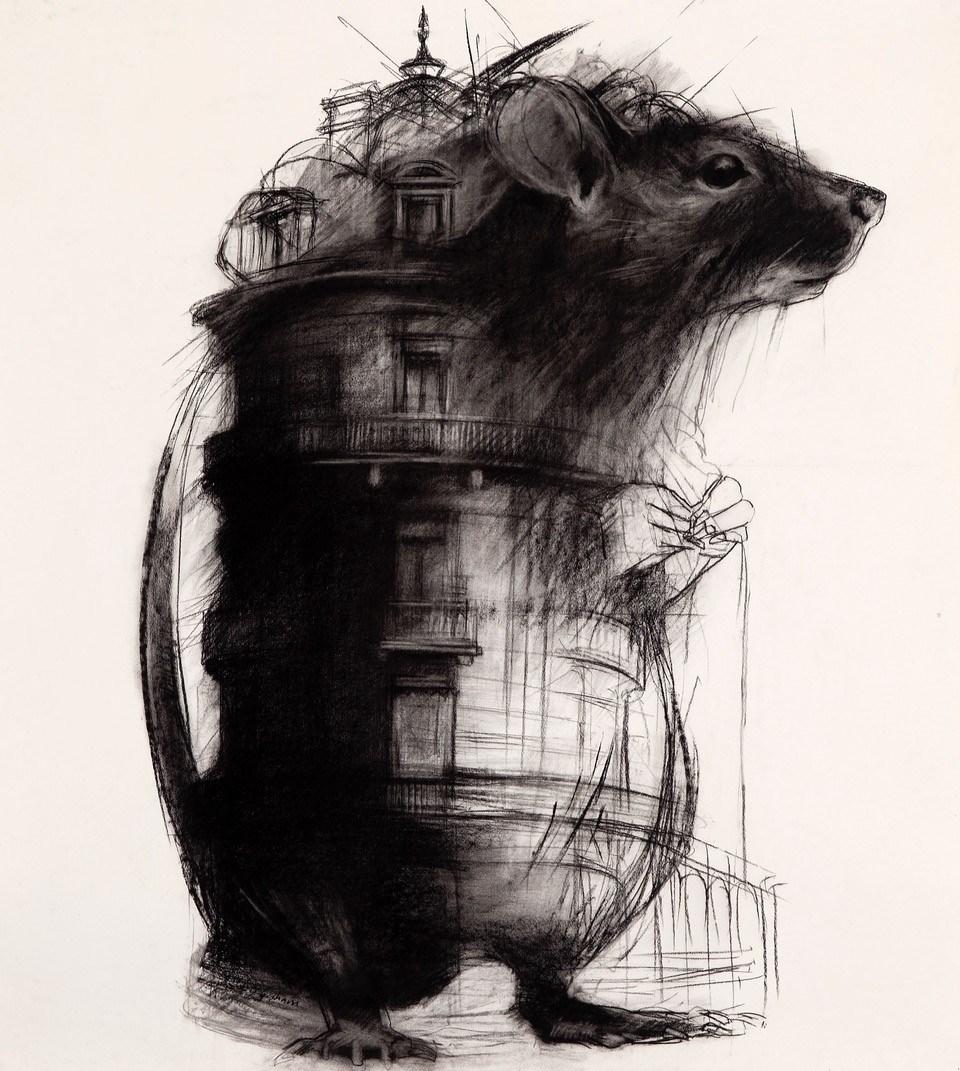
Australian artist Jody Graham presently lives and works in Sydney, NSW.
Drawing is at the core of Jody Graham’s multidisciplinary art. She relentlessly explores new techniques and investigates contemporary drawing practice. To do this she builds on and then moves beyond conventional drawing processes in search of new methods and tools that connect drawing with the fundamental need to make symbolic marks.
From the earliest days visiting scrap metal yards and her father’s factory in western Sydney – inspired by the action of machinery and the draftsmen’s tables where they drew designs for machinery by hand – the recurring themes in Graham’s work have centred on the broken, the displaced and the forgotten.
Whether expressed in drawing, sculpture, installation or performance, this speaks to her long-nurtured urge to rescue and restore, with the objective of recycling and re-purposing both materials and techniques. Graham has held over ten solo exhibitions. Graham won the Greenway Art Prize in 2017 and 2020, and has been a finalist in numerous major painting and drawing prizes including the Blake Prize, the Plein Air Painting Prize at the Parliament of NSW and the Dobell Drawing Prize. Graham’s works are held in many national and international public and private collections
 Page 12 : House Rat, Charcoal on paper, H92 x W92 cm. Jody Graham 2023.
Page 12 : House Rat, Charcoal on paper, H92 x W92 cm. Jody Graham 2023.

What attracted you to the world of Art?
Art and Artist attract me to the art-world!
I am drawn to the art-world because I want to see art. Looking and being with art does something special for me that I can’t get any other way. My mind is challenged, often transformed, and altered when I make or look at how other people express their ideas. Art is a language I like; I enjoy working out visually stimulating material, layered with ideas and concepts.
When did your artistic passion begin?
I am told I would sit and draw for hours when I was a child, absorbed in my imaginary world. Decades later, I am still that child completely at home in isolation, ruminating over ideas and creating, it’s my ultimate idea of a good time!
Have you always wanted to be an artist?
I grew up when it was preferred for children to be seen and not heard. As a result, I think drawing and art became my medium to be seen, my language to express myself. This was extremely important during my later high school years, helping me navigate a difficult home life. I had a brilliant high school art teacher, who would take students into the city to see art. On one of these excursions we went to Roslyn Oxley9 Gallery, and I saw Juan Davila’s multi-panel work Stupid as a Painter. Seeing this work, altered my life forever, I was excited by what I saw, Davila’s art opened possibilities in my young mind of what art could be, and making art could be something you did seriously for life.
I am a multidisciplinary artist, preferring to work across several types of creative disciplines, including drawing, painting, sculpture, installation, and performance. Being multidisciplinary has grown out of my desire to find materials and methods to express my ideas. I first noticed this happen in 2012 after a trip to South Africa. On this trip I became aware of my attraction to the makeshift and repulsed by consumerism, especially my own. I liked the creativity I saw on this trip that was born out of a desire to be resourceful and invent with what you have and find. The yearning to make is so great, there is no excuse about what materials you don’t have. Subsequently this trip motivated me to be innovative with found materials. I appreciate the challenge and mystery working in this way commands. When you can’t buy what you think you need, working with items you find dictates much of the creative direction.

Some of my artworks are inspired by sound. It’s obvious to me I am stimulated by what I see and continually amused to notice how much I am encouraged by what I hear. This is especially evident working with Mark Cauvin, who is an Avant-Garde Musician and Composer. When I work with Mark our aim is to find a collaborative ground which blurs the lines between sound and mark making, wanting to conceive a new artistic discipline, we call Sound Drawing. Sound has been the impetus behind many of my bird drawings. Bird calls I hear in the environment prompt my immediate attention. As a result, I am frequently rewarded with exquisite sightings of Australian native birds. These visions induce excitement and my need to capture what I see in drawings.
 Right : Sound Drawing Duo – Jody Graham and Mark Cauvin 2022
Right : Sound Drawing Duo – Jody Graham and Mark Cauvin 2022
The philosophy behind my work is to make visually interesting artworks that embody story. The story can be present in the imagery, with the materials I use or how the artwork is made, presented, or installed. Several reoccurring themes exist in my arts practice, these include the use of found materials and my constant search to find ways to reduce the power of my ego. I like using discarded resources and think this is linked to my brokenness in addiction and restoration into recovery, resulting in a desire to give new life and purpose to trash.

Using weird tools to draw with helps me sidestep my selfcritique and allows for exciting, expected marks to happen.
I get a real buzz out of this technique; it provides an enhanced experience with the symbolic act of mark making. Another recurring motif is my use of continuous handwriting to explore mark making and what’s under my conscious and subconscious thinking. Fragments and large portions of this technique which I call automatism can frequently be seen in many of my drawings.
A significant development over the last decade in my practice is my regard for making site-responsive artworks. I find it very rewarding creating new work that conveys my experience and perceptions connecting with new communities and locations. I enjoy the challenge of seeing and thinking about experiences for the first time. Similarly, this transcends into my drawing, as I am constantly seeking new innovative ways to explore the act of drawing that go beyond conventional approaches.

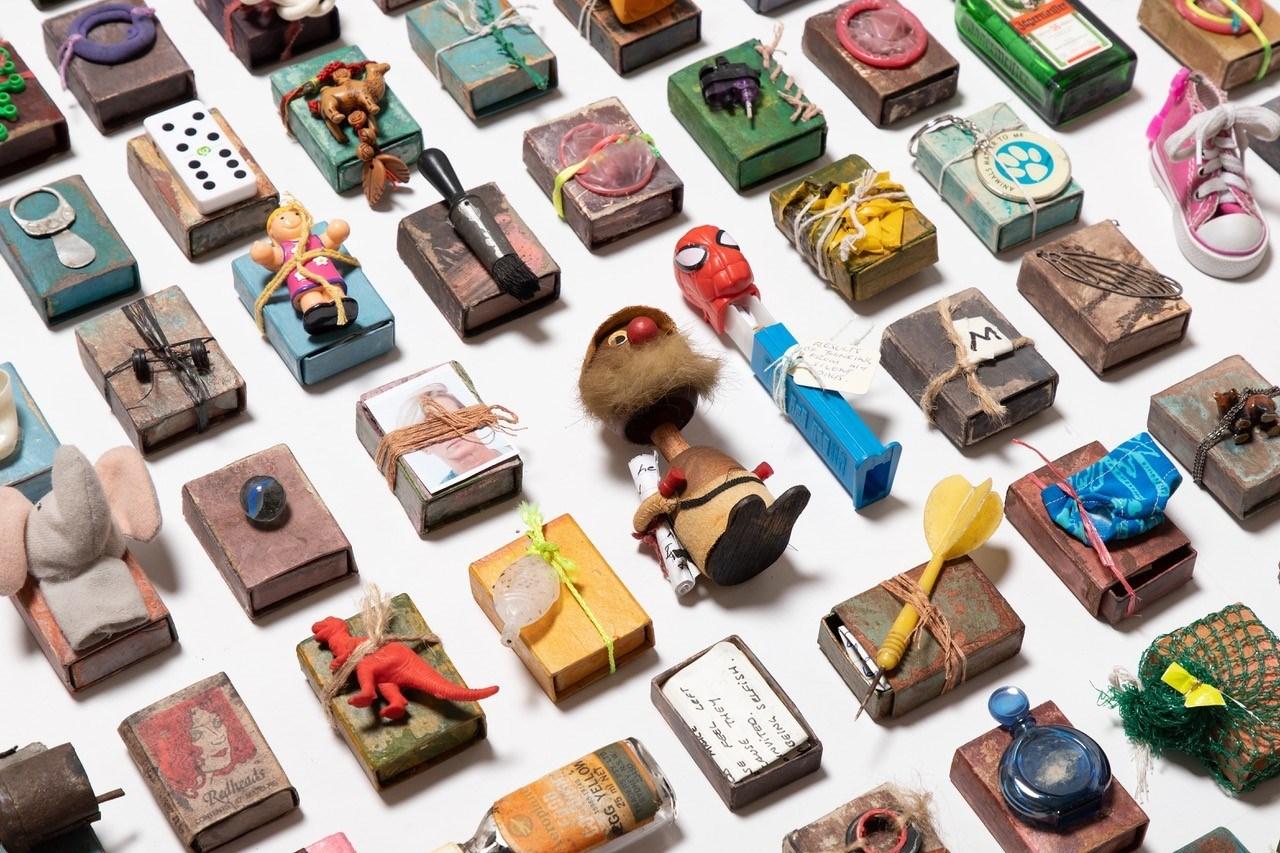
My whole life is focused on making art and creativity. I don’t have a separation between work and life. I see my life as an artist as a vocation. I create continually, at any time. I am fortunate to have family and loved ones that understand and support this and do not try to fit me into a conventional mode of working. Since 2018 I have maintained a weekly routine of writing a brief note about an inventory of my shortcomings and occasionally acknowledging positive actions. I put the note in a small box and add a little item I have found to each box which reflects the message inside. This weekly routine is called Treasures of Truth. It is an essential part of my life that I am deeply committed to. The practice of writing coupled with randomly selecting boxes weekly to open, read and act on the contents, fills me with gratitude and insight. Throughout this practice, I have discovered my own truths, fears, dreams, and actions, are common to many people. This awareness gives me greater compassion and empathy for all humanity and the struggles we face.
 Jody Graham opening and reading a box from Treasures of Truth collection 2022
Photo credit: Graeme Wienand
Jody Graham opening and reading a box from Treasures of Truth collection 2022
Photo credit: Graeme Wienand
How important is drawing as an element to your artwork?
Drawing is central to my work and life; it is how I learn and understand myself and my surroundings. When I draw something, I feel like I can figure it out. Strangely I think this also applies to people. When I draw random strangers in café or on public transport, I feel like I can get a good sense of a person by drawing them. Facial expressions and postures are so revealing. I think some artists can see more than what is optically apparent, to delve deeper, like a visual detective.
Drawing is my quintessential language; it’s how I express myself and how I read the world. It’s my daily companion, always with me.

My latest achievement?
In June 2023, I became an Artist Trustee of The Kedumba Collection of Australian Drawings.
This is extra special because of the story I have related to the Kedumba Drawing Prize. Twenty-three years ago, I wanted to try and be part of the prize, I had an appointment to go and meet the Director Jeffery Plummer, I started to drive there but got so nervous on the way, I turned around and went home to hide and have a strong drink. I didn’t make it back to try again for another three years. When I did, my interview was intense, I stacked up my best work to be viewed and sat quietly waiting while Jeffery walked around making all sorts of loaded comments. Many of which still drive me today. He asked, do you have more? I did, a car boot full!
A week later I received an invitation to enter the 2003 Kedumba Drawing Prize.
Once again, I was so nervous, I drew every day for 6 months and finally at the end of that period I had a drawing I thought would be acceptable to enter.
To my enormous surprise I was selected for the Kedumba collection by Artist Trustee John Olsen. This changed my life and gave me the confidence to believe one day I could be an artist.
Twenty years later, it is my absolute pleasure to be an Artist Trustee of the Kedumba Collection of Contemporary Australian Drawings. How has the COVID 19 Virus affected your art practise?
I leant new digital and video skills during covid. I became familiar with how to do online teaching and enjoyed discovering new ways to link with people. One of the biggest insights I gained during Covid was how important and rewarding social media and digital platforms can be. I enjoy the ease and reach of social media and the ability it has to unite with new people.

Drawing on paper will always be permanently etched into my life. However, for a few years I have been trying to paint more, along with embracing new supports. Finally, I am ready to fully commit to this task and shift to using canvas and boards more in my arts practice.
Another ongoing interest is my strong urge to learn more about digital media. I want to become proficient at this. Acquiring more skills in this area will support my ambition to showcase my drawing on a larger and moving scale. An improved digital skillset will also help make immersive experiences when collaborating with Mark Cauvin in Sound Drawing performances and exhibitions.
Your future aspirations with your art?
As I write this there are a few important things I want to accomplish before I die.
Have Treasures of Truth artwork acquired by a prominent public Art Collection
Have acquisition success with my drawings in numerous public collections.
Take Sound Drawing to a celebrated artistic level.
Publish a book about my arts practice.
Acquire a residence to leave an artistic legacy.
Inspire creativity in my art and teaching.
The constant driving force I am devoted to, is striving to make better art.
The more I learn the more I need to know. - Jody Graham 2023.


 Page
Page

 Top image : Drawing tools 1
Top image : Drawing tools 1
 Dark Queen
Charcoal on paper
H130 x W114 cm.
Dark Queen
Charcoal on paper
H130 x W114 cm.


Dionysus Frenzy 1
Charcoal on paper

130 x 114cm.
Voilà – French Collection
Jody Graham 2022.
Jody Graham’s forthcoming exhibition: Paris to Portland Lost Bear Gallery - 4th November to 10th December 2023. https://lostbeargallery.com.au
Jody Graham is also represented by Nanda/Hobbs Gallery https://nandahobbs.com/

https://jodygraham.com.au/ All
Jody Graham © 2023.
Just words thrown together, seemingly related. Mix and match, from our repertoire of serpent headed creatures. In the coolness of the early morning, we prepare ourselves for another long journey, even if it doesn’t happen.
To go through the preliminary (stages), gestures. Breathe in the memory of not forgetting.
To add another layer, a hundred fathoms deep, to the furthest regions of our ancestral lineage. Another stop sign along the way.
Don’t you feel like telling me where you have been and what prompted you?
All who want to hear, a repeat of the teachings that have travelled all this way, bordering along the edge of time.
Thus, we have also heard rumours, celebrating its own type of existence, to be a reflection, incised in our flesh.
- Eric Werkhoven © 2023.The dreaming rehabilitated, put back in its rightful place.
It’s hard to make it rhyme, to make it stick.
Is there such a clause that states it is compulsory, to be a vital part.
No, it is up to the individual person to seek all there is to find and remember the passages.
One section, one small corner, that says I am a structural heavy stone going twenty meters deep.
Hang on me your essential parts, I won’t crumble.
They, as in we have shaken the mountain deep in its core and only saw, a puff of dust rises from the top.
Did you need to see the gigantic mushroom shape rise up like an awesome reality, a symbol of our nations power?
The constructs of a mighty force of twenty thousand men marching in unison.
And it is written that we speak of combining the age of each person that they have been drilled and instructed. To follow the orders that lead to success and victory.
Superior hardware, superior intelligence gathering.
Under the name of conquer and rule, alas it’s we who march pass the rulers balcony where he stood and waved.
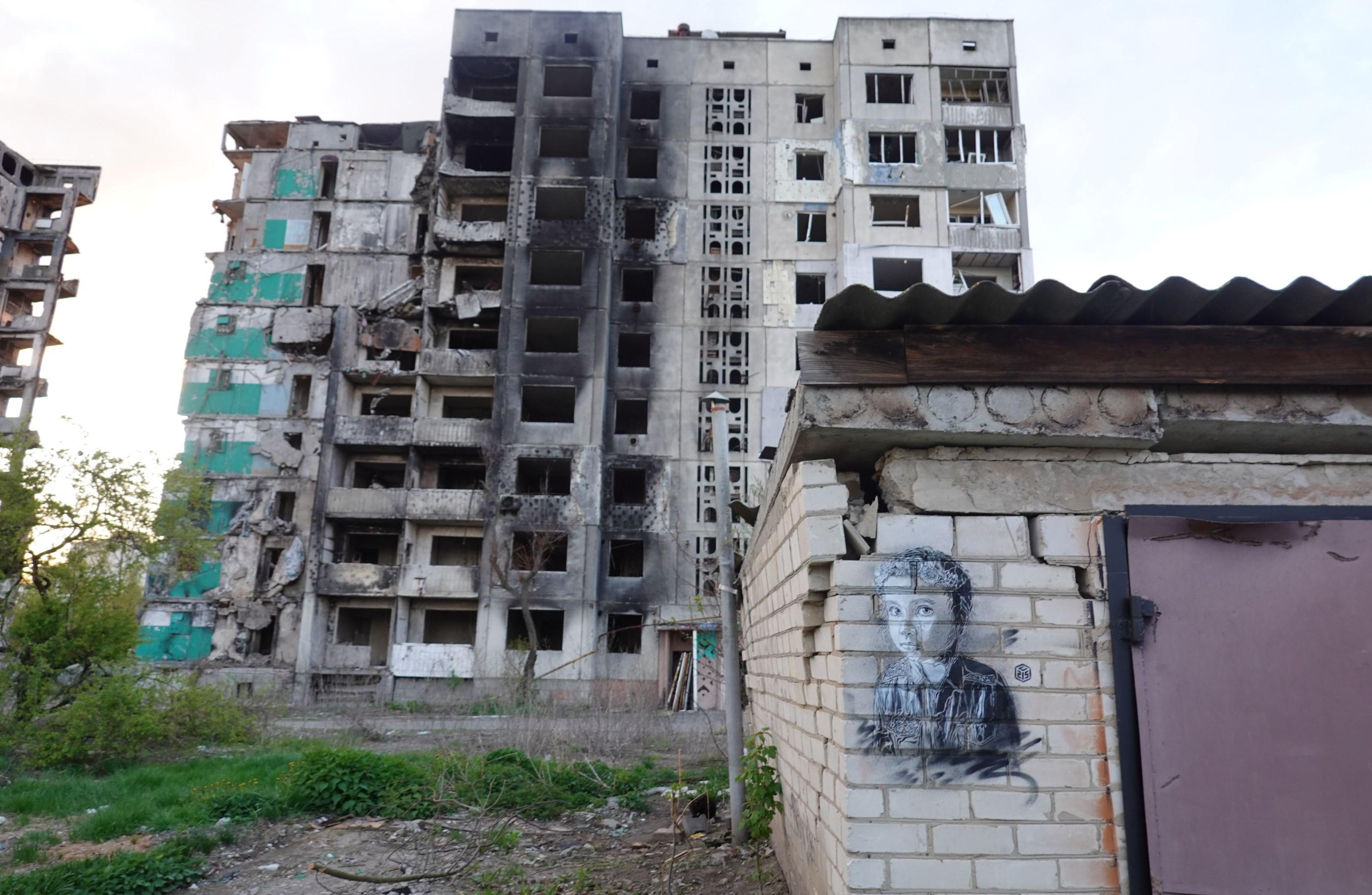
Spending time filming George painting on a wall of a destroyed apartment block in Borodyanka today was like sitting still in a forest and gradually creatures start emerging quietly everywhere. However, the spring flowers here are blooming in a tortured forest of burned monolithic giants, towering totems of torched horror, smattered with occasional blossoms, are now a place some people have had no choice but to return to.
A year on and slowly many of these apartment blocks that were too condemned to live in have been demolished and the hills of rubble around them carted away. The apartment that the little girls white party dress featured in several of George’s paintings, belonged to, has now been completely destroyed and entirely gone, leaving a flat bed of dirt. The little white dress had been desperately hung in the window by the mother, as a type of surrender flag, while the Russian soldiers roared in a terrifying screeching metallic attack with tanks firing into the high-rise blocks all around. The little white dress fluttered in the hope that the soldiers would realise children were in the apartment block and not fire rockets into them. The little dress was no deterrent and when we found it, it was covered in soot and dirt and flapping carelessly, wildly, in the elements, still hanging on the window, all alone, a month after the Russians retreated and the families and children were murdered in their homes. However, many buildings still remain in varied states of slow collapse, it is among these that we found ourselves surrounded by today.
The song I have been working on to accompany my new performance piece is Olim Lacus Colueram “Once I lived on Lakes” never seemed so appropriate. The song was actually originally a poem written by an unknown author and unearthed in 1803 at a Benedictine Monastery in Bavaria believed to be a window of the souls of the Medieval Goliard priesthood in the 12th/13th Century and turned into a song in the Opera Carmina Burana by Carl Orff. The song is in the voice of a beautiful white swan that has been killed, roasted, and devoured by greedy, callous, and thoughtless humanity. I translated the original Latin into English and the swan laments that she once lived on lakes and was beautiful, the chorus cries, “misery me, now I am burning and roasting furiously”, The last stanza; “Now I lie on a plate, I cannot fly anymore, I see bared teeth.” My performance is about the destruction of beauty because of greed, it is as if the grabbing hands of slavish greed choke the very thing, they coveted in the first place. This piece titled ‘Enlaced’, the costume for the piece is all lace purchased in Salem from instructions in a dream/nightmare before heading back to Kyiv.

Lace, Etymology:
 The word lace is from Middle English, from Old French las, noose, string, from Vulgar Latin *laceum, from Latin laqueus, noose; probably akin to lacere, to entice or ensnare.
The first trace of the use of lace in a liturgical context was found in the Egyptian sarcophagus. The Mummy was laced in gold
Bansky Mural, Borodyanka, Ukraine.
The word lace is from Middle English, from Old French las, noose, string, from Vulgar Latin *laceum, from Latin laqueus, noose; probably akin to lacere, to entice or ensnare.
The first trace of the use of lace in a liturgical context was found in the Egyptian sarcophagus. The Mummy was laced in gold
Bansky Mural, Borodyanka, Ukraine.
We set up to film and slowly I realised that the people around had not arrived on a visit to see the Banksy artwork or to see George paint his portrait of Putin as a monster. They were not stopping for a green moment in the park but were actually living back in these buildings, spending most of the day in the thin Spring sun, in the little remaining garden areas that had fought their way back to life, up out of the rubble in random areas missed by the scorched earth policy of putin and his henchmen, green shoots popping up along the edges of bomb craters and around rubble piles.
As I filmed one of the destroyed buildings a father and daughter walked casually, hand in hand into the blackened and blasted front entrance of one of the apartment blocks. I watched them ascend the central stairwell through the blown-out windows as they climbed the floors, casually in a daily routine. I realised that one of the apartments had plastic nailed to the windows, I saw the pair walk in with their shopping bags, the mothers’ arms reached out the doorway. These cavernous, cadaverous, colossi with incinerated gaping mouths and eyes now had a little flickering light of hope within their monstrous appearance, a little flame heart of faith illuminating from a kerosene lamp in the darkest nights, barely visible but undeniably there flickering through a hardy, packing plastic covered window. The father and daughter told me that they still spend many nights in the bomb shelters as the air raid sirens scream into the night and drones and bombs hit targets elsewhere around the town while the Ukraine Army fire defence missiles. A little family huddles.

Out the front near a giant crater blast in the ground two young boys patted a large woolly dog with thick black fur and little caramel-coloured ears, one flopped down in the cutest way and little caramel rings around searching black eyes. Suddenly it found a boot in the still remaining mounds of ejected human ‘personal belongings’ now decomposing under dirt a year on after the occupation. The dog trotted along with it purposefully, it pranced along around the parkland area as if trying to find his master to deliver his slippers. After covering most of the area around the children’s playground and the areas between the disintegrating buildings, gradually he abandoned the idea and lay down in the grass. The boys patted him again and then he jumped up and made his way towards me, he suddenly pushed himself into me like a cat, when I put my hand down to pat him he flinched, startled, like I have never experienced from a dog, I rubbed him and cooed as he pushed into me as if needing a full hugging embrace, he suddenly play bit me on the leg and I realised it seemed a little crazed, the boys saw this and came over to pull him away from me, patting him. The dog kept doing the rounds of the inhabitants of the garden, once pampered a beloved family pet. He was quite fat and I realised that although no one lay claim to him that everyone gave him food and everyone paid him a little attention but still his true owners were not to be found, he searched every face round and round the grounds everyday - alas.
The two little boys close to maybe 9 to 11 years old, were not like ordinary boys of that age, full of sly looks and mischief, yelling and riding bikes in daredevil tricks, they were quiet, pale as if they had both seen ghosts, in a permanent kind of resigned shock. They smiled when they saw George’s ugly monster version of Putin with his hideous foot in the mouth of its underling, representing the gagging of the Russian population. They got out iPhones and watched the steady progress of George’s brush strokes unnaturally quietly as if drugged. There is no electricity or TV, no Netflix and video games. Many friends of these boys were killed, burned alive or crushed under cement slabs, become permanent refugee’s, leaving everything behind including their dog or cat as they fled as the rockets fired and bullet’s ricochet all around them, as they saw their mothers screaming and their fathers go pale or go to the front line with their elder brothers, never to return or returned disfigured or with limbs missing or minds blown or healed somehow and ready to head back to the front line once more. They forbearingly contemplate their own destinies.

A group of women sat in the little park on a small children’s roundabout in the filtered sunshine. At first glance I somehow registered this sight as just people out getting some sun where they could, who decided to stop in a park, even if it’s under the shadow of the blasted bullet riddled apartments to warm themselves. A middle aged woman with a cream coloured wool beanie with some kind of appliqué flower on the front of it that was crumpled and old came marching over to us she looked up to us anxiously and rattled off a rant in Ukrainian, her icy blue eyes filled with disturbance, we smiled and I reached out to her and said English, sorry, our assistant Kate came running over and listened to her, she told us she was concerned that if George painted on the wall of the destroyed building that the Counsel wouldn’t rebuild their homes, that the counsel would instead memorialise the artworks. The idea that Counsel could rebuild is another cruelly broken dream, her home now sadly is totally hazardous, these apartments are at least 20 stories high with huge gaping wounds, refrigerator, dining tables and chairs, cupboards full of clothes on every floor upwards spilled like guts hanging out from a medieval etching of the Spanish inquisition. Now a year on since the initial bombing, the stink of leaking gasses, burned things putrefying, exposed, flapping in wind and rain, huge slabs of cement hanging from metal girders with clothes ensnared on ugly jags. Somehow this woman sees this as home, hopes to have her home back that has been so diabolically taken from her by Putin and his henchmen. The apartments will eventually be demolished completely and rebuilt. The woman looks like so many women from Russian novels, kind of burly but averaged height and wearing outmoded trousers and jumpers possibly from refugee handouts. She goes back to the roundabout, with her mind changed about the artworks going up, if they can keep the world thinking about her and her friends then that must be a good thing. She tromped back to the roundabout in a bustling kind of manner, ‘equal rights for workers’ airs about her in that particular way that anyone whose childhood was spent living under communism might have emitted through assertive gesture and upright, stout posture.




There is an understanding between the new and older generations of Ukraine, the older generation of ‘workers’ now realise they were duped, they know their minds were programmed and they want differently for their grandchildren and children. The Gen Y are almost aliens to them with their computers, bit coin fortunes of new money and tik Tok, Instagram realities. This new reality has brought them all out of poverty and although these destroyed apartments were always modest, they had private bathrooms and a kitchen that they didn’t have to share with 5 other families, they had new electric cars and iPads for the kids in school! She never wanted the clock turned back to Soviet times ever.
She sat with the other women, and they rotated slightly back and forth on the remaining round about. This was the centre where the small community of those who had moved back into these apartments gathered, a slightly buckled children’s carousel. Their demeanour now calmed as they chatted among each other watching on while George painted, and Kate and I filmed. A couple of hours went by and suddenly I noticed they had all moved to a worn looking rainbow painted park bench right at the side of the entrance ways that had somehow stayed intact where it has always been pre the destruction of their homes. They sat three in a row, without talking, with arms crossed as if defiantly refusing to budge, I realised they were there, as a matter of routine when the sun no longer shone on the children’s roundabout, they caught the last rays in that spot as they had done possibly for decades.
As the sun finally moved to an angle that couldn’t find its way around the shadow cast from the giant blackened carcass of a building, the women finally moved into the burned doorway and up through the carbonised stairwell, seeking out their only shelter, their once humble apartment homes now a double mockery of their lifetimes of personal sacrifices. The fumes of leaking refrigerators exposed, burned matter, rained on, snowed on, soaked, and then dried last summer, still rotting a year on started to make my eyes water and my throat seize. There was a refrigerator on every floor, unreachable, chord hanging and rattling in the wind, the plastic on the windows slamming and straining against their tethers as the wind started to howl and slap these plastic sheets like drum skins.

Most people who had returned to their homes if there was one room still with a roof over it they moved into that space. They sifted through the remains of their lives finding a saucepan or plate that wasn’t completely destroyed. One home we visited just out of Kyiv in Lukyanivka the father pulled out a bizarre, melted metal conglomerate of all their cooking pans, they had somehow melted together into one big blob, he laughed as he picked the entire lump up with a protruding pan handle to show me, it was the only way he could cope with the moment. I imagined the women alone in the singed and dilapidated remains of their apartments, little kerosine heaters, oil lamps, the fumes of the burning fossil fuels giving off a stream of acrid black smoke to add to the rest, huddled under too many blankets, at least they had some remnants of some of their life’s history around them, dreaming that their houses wouldn’t be knocked down, somewhere deep down knowing that they had to be, also knowing that their meagre insurance didn’t include ‘destruction by invasion’ on their policies. As they put their heads down on dusty pillows air raid sirens blare overhead, and new bombs hit other apartment blocks nearby.
For now they were huddled in a dark corner of their new realities they reach out with their work worn hands from under the blankets to turn off the little kerosine lamp and putin, the richest man in the world and his henchmen smile…
As all these people put their heads down on dusty pillows air raid sirens blare overhead, and new bombs hit other apartment blocks nearby.
I knew I had to revisit these areas from our first residency in March of 2022 under Russian occupation, these locations are the giant wounds inflicted upon the thing which putin covets, the beauty and wealth of Ukraine. The older people lived in these apartment blocks, but their children spent newfound money on freestanding houses in newly built villages of Irpin (Ukraine’s Silicone Valley) and Bucha (like Australia’s Bowral or Mosman) and new estates in Borodyanka. These were all pillaged and blown apart as well. Any land gained by the Russians is now a waste land a literal quagmire of destroyed buildings and forest habitats with completely decimated infrastructures and will be incredibly expensive to rebuild. Like a strangled swan, burned and cooked and served to Putin on a silver plate.


Singer and performer. Awarded BVA Hons, M Teach, Grad Cert Arts and NSW Premier's Award 2014. Manager / Co founder The Yellow House Jalalabad, Afghanistan.
Rose is Co Producer and Music Director at Gittoes Films Pty. Ltd.

George Gittoes and Hellen Rose make documentary films, often in and about war zones. Their film White Light deals with the gun violence that's rampant in the Englewood neighbourhood of South Side Chicago, USA. Their latest film UKRAINISTAN ARTIST WAR - winner of the Onirus Film Awards. New York 2023. Hellen Rose’s short film "Haunted Burqa," has been selected winner of the New York Arthouse Film Fest 2023 and a semi finalist for Best Short in the Berlin International Art Film Festival 2022 , the Indie Short Fest, Los Angeles International Film Festival 2022, San Diego Art Film Fest 2023.
www.hellenrose.com
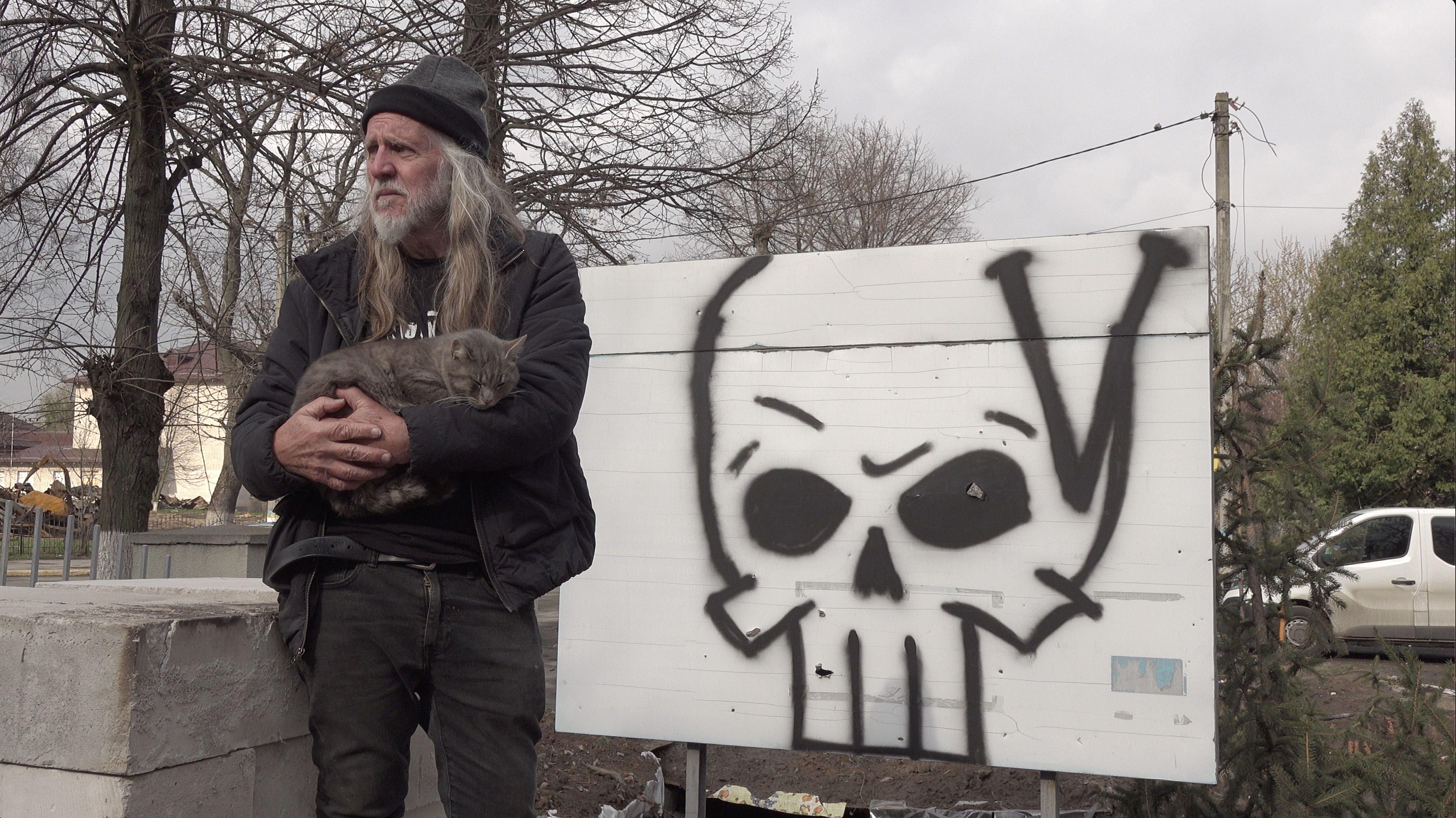
STARTING TO BE ABLE TO WRITE UP THE WHOLE UKRAINE EXPERIENCE INCLUDING THE MOST RECENT WORK JUST COMPLETED.
Photographers and filmmakers call the last hour of sunlight in the afternoon the ‘magic hour’ because colours glow with their fullest intensity and are no longer washed out by the intensity of reflected sunlight. It is the same in mid-winter when the sun is at a low angle all day.
People caught up in a war are like the flowers that glow brighter yellows and pinks in low light. There is a human warmth and brightness of spirit that emanates from all Ukrainians after suffering over a year of war, never knowing when days on Earth will be ended by a bullet, missile or a nuclear bomb. This insecurity is expressed by the artists. Putin has moved tactical nuclear weapons to Belarus. These are Doomsday weapons, some of which are one hundred kilotons, many times more destructive than the bomb dropped on Hiroshima in 1945 which was 15 Kilotons. Images of nuclear death now dominate the drawings of Ave and are made more urgent and fragile by her baby daughter, Penelope, born after twelve months of war. (see pics)
Hellen and I are committed to keep returning to Ukraine aware that a nuclear attack is firmly on the cards.
In late February 2022 we had just returned from Peshawar in Pakistan and were working on editing video footage from Afghan Yellow House Project when the news of the Russian Invasion came out. Our plan was to return to Afghanistan and make a film about the impact of the American withdrawal and our hope that the Yellow House could continue under their rule. We had been in Pakistan to established what we called a Yellow Submarine for our Yellow House Artists and filmmakers to be able to continue working during the early, turbulent days of the Taliban Takeover. A safe haven for artists who were feeling insecure about how they would be treated by the Taliban. We all worked together to shoot a film remake of Charlie Chaplin’s GREAT DICTATOR and were editing it. We were focused on the news of Afghanistan when the Russian invasion of Ukraine supplanted it as the dominant story. It seemed to us that the chaotic and disastrously poorly planned exodus of US Forces from Afghanistan, enabling the rapid retake of control by the Taliban, had emboldened Putin to make his move on Ukraine.
Putin judged the Biden administration and US military as weak and incapable of reacting to a Russian offensive. The world had hoped that after WW II and Bosnia, there would never be another major war on European soil. The nuclear deterrent was supposed to prevent this and the stand off between Russia and NATO throughout the cold war seemed to make this unlikely. Again humanity was on the brink of a world war. There was no question, I had to be there with the Ukraine people, on the ground facing whatever eventuated. Hellen and I made the instant decision to travel to Kyiv in the first week after the invasion. At the time the media were predicting the long convoys of Russian Tanks and soldiers would be able to take the city within days.
Photo on page 50: George Gittoes and cat, Ukraine.We got to the border at Przyemysl only to find out that trains into Ukraine had been cancelled. The station was filled with refugees, mainly women, children and seniors along with pets in carry cages. I made my first drawings showing the despair and fatigue on their faces. I had an instinct we could still travel and went exploring outside the station. I found a country train that was on a separate line to the main rail. We were able to board it, late at night . There was a moment as we bordered when we realised there was no turning back if we got on and we felt fear in the pit of our stomachs. This train was almost empty and took us to L’viv where we caught a bigger train into Kyiv. We knew nobody there.
Hellen had booked a hotel which was next to Maidan. We wanted to be near Maidan as we knew the history of how this is where the people’s revolution for Independence from Russia occurred in 2013. We were the only guests in the hotel and the city was deserted with no one moving outside and limited food supplies available from a small underground supermarket. There were tank traps on every corner and young soldier guarding them. We made friends with these soldiers who readily told us that they were not regular army but many other professions from IT programmers to civil engineers. It was mid-winter with some snow. Hellen would send me down to them with hot soup and coffee. We imagined that any day there would be Russian tanks and street fighting similar to what we have seen in old black and white archival footage from WW ll.
I have not previously been to Ukraine, nor has Hellen. I was in Sarajevo during the Bosnian war which had many similarities. We have just returned from our second period in Ukraine and intend to keep returning while ever the war continues.


Neither of us new much of Ukraine history or geography and had no contacts to assist us on arrival. We knew we would have to improvise every step of the way, at first.
The House of Culture in Irpin was one of the first cultural institutions to be targeted in the early days of the invasion. It was hit by multiple rocket attacks, tank rounds and mortars. Putin wants to deny that Ukraine has its own independent culture and is attempting to erase cultural centres throughout the country. We knew of this and made it our priority to go there as soon as the Russians began retreating and immediately began to contact our Ukrainian artist friends to prepare exhibitions and performances within the ruins. We aimed to prove the spirit of art cannot be suppressed by such barbarity.
For the two last decades I have been disappointed to see how little Australians know of art and cultural history. Graduates from Art Schools and Art and Media courses at University come out with little knowledge of art history. It makes it very difficult to talk to them about painting without going to my library and showing them examples like Otto Dix, Francis Bacon and Chaim Soutine - along with Modigliani, Klee and others. They eat these books up but have not been introduced to them when doing their studies. The opposite is the case in Ukraine - the knowledge of cultural history is universal there.
Taxi drivers and tradespeople know who I am referring to and often begin by looking at my work and then referencing Otto Dix and Kath Kollwitz and others without my prompting or contributing. Professional soldiers on the level of Commanders have a similar but more detailed knowledge of the arts than most others.
In Australia I would not even expect a General to have any knowledge of this kind. It is refreshing to be immersed in a culture that understands and appreciates arts.
I was expecting to have to explain our 'Kiss of Death' mural to the locals around Irpin and was both amazed and relieved when they immediately said "Guernica" and no further discussion was needed. They would say "Guernica" and then ask whether we needed anything like food or a cup of tea/coffee.




 Ave’s baby, Penelope, Urpin 2023. Photo courtesy George Gittoes.
George Gittoes painting outdoor, Party Dress, Borodyanka 2022.
George Gittoes and Ave working on mural Kiss of Death, Urpin, 2023.
Ave’s baby, Penelope, Urpin 2023. Photo courtesy George Gittoes.
George Gittoes painting outdoor, Party Dress, Borodyanka 2022.
George Gittoes and Ave working on mural Kiss of Death, Urpin, 2023.



 House of Culture, Urpin, Ukraine 2022.
Working on Mural, Urpin Bridge, Ukraine 2022.
Banksy’s mural The Dancer, Ukraine.
House of Culture, Urpin, Ukraine 2022.
Working on Mural, Urpin Bridge, Ukraine 2022.
Banksy’s mural The Dancer, Ukraine.
Every day since the moment of my first meeting with Ukraine artist Ave Libertateamor we have created a new drawing and shared them via the internet or in person. (Ave uses a false name like Banksy and hides her face from cameras in order not to reveal her true identity)
The ‘Kiss of Death’ mural was to be a high point in the collaboration with Ave. We wanted to take our series of drawings outside on a large scale so that the locals could feel that art was coming back like a phoenix out of the destruction.
Ave and I struggled for weeks to make an entirely new composition but could not arrive at anything we were happy with. One night I stayed up for many hours juggling works we had created together in our FLEXIBLE WOMAN series.
My WARHOUSE drawing worked in the centre with Ave’s ‘Flexible Woman’ drawings on either side plus a few added smaller elements to bind the images. The right-side image by Ave had to be flipped. I sent a photo of the result to Ave the following day and she replied that she was delighted with it. It was a relief to get something so intrinsic to our work together that melded, and we felt totally happy with it and titled it ‘Kiss of Death’. The young artist team of Sasha Kirikhov, Artem and Marycia Prus Rudenkko helped me to paint most of it onto the wall of House of Culture. It took a night and two long days using industrial quality enamel paint. People from the destroyed, surrounding houses came to watch and comment on our progress telling us that this was a good start to restoring things to the way they were. Ave joined us towards the end to improve the brush work and add detail on her sections.
‘Kiss of Death’ is in black and white, very graphic and similar in size and proportion to Guernica. The actual drawing, composition and figurative subject elements are nothing like Guernica, however, but we enjoy hearing the spontaneous reaction of viewers who saw the connection. Young people think it is very cool and the manufacturer of skateboards in Ukraine has asked for permission to put it on their decks. Recently Buses have begun bringing people to visit the most damaged war affected places. Since our murals and those by Banksy have been well publicised in Ukraine, the guides on the buses have made them a feature of the journey and stop off to see them including the others, we have done at Irpin Bridge, Borodyanka and Bear Mountain Park. It has become an extensive outdoor show of Gittoes, Ave and Banksy.
Unlike Guernica the subject is not explicitly showing distraught human and animals as the casualties of the bombardments. Since our painting is placed among the actual victims in the community of Irpin this would have been very disturbing and inappropriate. I doubt whether Picasso would have painted the same picture had he known it would be shown in Guernica and not the Spanish Pavilion of the World Fair. This war is the product of the megalomania and brutality of Putin. To normal people his actions are incomprehensible. His partnership with Alina Kabaeva is a soft point with Putin who has threatened journalists that they should never mention it. Alina is much younger than Putin and is referred to as the Most Flexible woman in Russia as she is an Olympic Medal Winning Rhythmic Gymnast and contortionist. The painting is a product of Ave and my meditation on his corrupt and twisted, psychopathic behaviour and his choice of a young contortionist as his sexual partner. And Alina is no innocent having been appointed by Putin to run the Kremlin’s suppressive media monopoly.



The Hobbit and Lord of the Rings were showing on Ukraine Cable television (I think it was Netflix) at the start of the war making everyone see the comparison. Tolkein wrote those books at the time of Hitler’s Nazi assault on Europe – the comparison has had renewed life now that Putin is behaving similarly as a Dark Lord.
The plan to show Putin and the Russian Forces in this way was the Odessa Poet , Viktor Solodchuk’s idea and the mural is a visual realisation of a poem he had written in the first weeks of the war. Since then I have become cautious about making the comparison, especially comparing the Russia Soldiers to Orcs as this seems tasteless when many of the soldiers are forced into service against their will and brainwashed by Putin’s propaganda.


Yes, I do see Putin as a ‘Dark Lord’ but all my years of contact with soldiers informs me that many of the Russian soldiers would be innocents unaware of the motives of their superiors, especially Putin , and not in control of their own destinies. My painting ‘Dead Russian’ is a meditation on this. What I did take from that mural and the discussions with Viktor was the concept of the needle which is a well-known evil defeating symbol in Ukraine folk stories. The search for the needle is the search to find a way to defeat the ‘Dark Lord’ . Viktor explains this in the film and the theme was taken up in the drawings of Ave and myself. We like to think that art can be the needle. The symbolism of the needle bridges and joins the collaborations with Ave and Viktor.
Hellen used one of Viktor’s poems in her performance piece.
Chance has placed me at the centre of some of the worst atrocities such as the Kibeho Massacre in Rwanda and the Hebron Massacre in Palestine. In Ukraine it was A) Borodyanka where we arrived as the Russians were retreating, the destroyed, B) Russian tanks at Bucha and C) the Bridge of Death in Irpin. The Russian soft toy bear, stuffed with explosives as a booby trap at Borodyanka, the small child’s party dress also at Borodyanka and the dead farmer and Punisher Palace on the outskirts of Borodyanka became a series of metaphors ….then the cars on the destroyed bridge at Irpin with families slaughtered, inside them. The destroyed interior of the House of Culture was, also, at Irpin and symbolised the barbarity of the Russian attack on and denial of Ukraine’s Independent Culture.
In the first period in Ukraine, it was Kate Purunova and Oleksandr Solodkyi. Both found me. Kate noticed Hellen’s posts on social media and contacted us wanting to be of assistance and Oleksandr (or Alex) met me when I was drawing the dead Russian in the tank at Bucha. He is an IT specialist, but his wife is an artist who fled with their daughter to Holland when the war started. Alex lives in Irpin and was keen to be part of the regeneration of the House of Culture. He assisted us with every aspect from the physical work of turning the place back into a workable environment to using the cameras for the film. He has been a great help in the second phase as well as the first.
Kate became our driver and second camera operator. She explains her role well in the film.
On the second phase we met Artem Rudenko and Marycia Prus (both are 26 year old artists and are girlfriend and boyfriend) at an art store when buying painting supplies. Artem volunteered to translate for me at the store and we immediately became friends. He wanted to introduce me to his closest friend and fellow artist Sasha Kirikhov. They immediately asked me to be a mentor and teacher and were invaluable in everything we did from camera operating to painting the big work at Irpin House of Art. They did not have a car, so we went everywhere together by Uber and Bolt. Kate was unable to work with us on the second lot of projects because she had found a full-time job. But, in her spare time she joined the team.
Artem, Sasha and Marysia were very critical of the fact that the only outdoor street art being done through the war was tagging with graffiti . Big spray paint names in different forms of bubble writing but nothing addressing the war. They wanted to get out and paint images about the war and how it feels but were too inhibited as fine artists to do this. By assisting me to do my wall paintings they lost this inhibition and were grateful for this. I worked beside them when they designed their first outdoor street paintings. Now they are out and about regularly doing more works like mine on walls in selected public places. They hope this will encourage more artists to come out and replace the Tagging Graffiti with relevant and powerful art.
I was, initially inhibited myself. One day I found a sheet of cardboard from a collapsed box in the garbage and took it to my apartment and cut out an angel stencil. I put the guardian angel between graffiti tags, on the street wall outside our apartment building. I did it at night and worried about the police catching me, but a police car went by, noticed me, but did not stop. I assumed that seeing someone doing spray work was a common spectacle that did not worry them. This freed me up. My first large wall painting one was at Borodyanka. When I walked up to the building I had decided to do it on I was surprised to find a Banksy in an enclosed structure, which had been built around it, to protect it. The locals were angry that this had been done when they were homeless and sleeping rough without shelter. There was a red line inside. When I crossed it a very shrill alarm went off. A security firm had been commissioned to protect the Banksy works after a crew of thieves had cut one from a wall and were caught trying to take it away. It is now in bubble wrap in the Police Station. The other Banksy works, now, have strong metal frames placed over them with bullet proof glass protecting them. One is controversial as it is of an acrobatic gymnast identified with Russian culture and not Ukraine culture. It is ridiculed as depicting Alina Kabaeva but I am sure Banksy is innocently ignorant of this connection. People do, however, like the Banksy of a small child in Judo cloths throwing a grown man, also in Judo clothes, down back first. This was made into a stamp which was soon sold out as people purchased it to be able to sell on eBay to stamp collectors world-wide. I tried to buy one but there were no more left at the post office. It was the judo Banksy that was in the glass enclosure at Borodyanka. Our works have been well publicised on TV and local media in Ukraine so people go searching for them at the same time as searching for Banksy. It has become like a joint outdoor exhibition of Banksy and Gittoes/Ave.
Kate is an animal lover and before she found us to work with, she was a volunteer in helping to save and feed the many pets that had been abandoned and were starving once their owners had fled as refugees. There were more homeless wandering dogs and cats in those early days, on the streets, than people. It was heart breaking. Organisations sprang up to help these pets survive and Kate was in contact with them. She heard that there were dogs in distress at a Dog Shelter in Borodyanka and got permission for us to join the group who were travelling there to see what help could be given. There was fighting still going on as we drove there, and it took over five hours to arrive in what is normally only a one hour trip. The rescuers belong to an organisation called STAR and were led by some British ex-soldiers who are dedicated to assisting animals. One of them, Tom, explained that animals were the best cure for the PTSD he suffered from fighting in Helmond Province of Afghanistan.
(There is a good interview with Tom in the film.) We were unaware that by joining the rescue we had travelled to Borodyanka before it has been totally liberated by Ukraine forces and ahead of the International Press. The devastation we witnessed in the city was heart-breaking. Being the first to arrive happened a lot while we were in Ukraine as we did not go to press conferences or seek the help of Ukrainian Official Press Organisers. Kate, being a local made this easy and possible. We stayed away from the International Journalist Press Core as we did not want to be influenced by their hype and agendas.



 George Gittoes painting Angel stencil, House of Culture, Urpin, Ukraine, 2022.
George Gittoes with Angel stencil, House of Culture, Urpin, Ukraine, 2022.
Goerge Gittoes beside Banksy Mural, Borodyanka, Ukraine.
George Gittoes painting Angel stencil, House of Culture, Urpin, Ukraine, 2022.
George Gittoes with Angel stencil, House of Culture, Urpin, Ukraine, 2022.
Goerge Gittoes beside Banksy Mural, Borodyanka, Ukraine.
Often, I would be in the car with Kate and I would have a dog or cat on my knee that needed saving and we would pull up at one of the many road blocks and not be asked for ID or passport because I looked like an eccentric old Ukrainian grandfather with his young niece or daughter saving a family pet. This enabled us to pass into areas where the press would not be allowed to enter. In the case of the Bridge of Death at Irpin we got there shortly after it had been destroyed and the people in the cars massacred, because Kate’s grandmother lived in Irpin and Kate and her mother had to help save her and get her out to Kyiv. Kate was assisting with the rescue of her grandmother; she heard about the massacre and took us to it. It was the first time Hellen had experienced wartime death on a large scale. It was particularly terrible seeing dead children and babies. I worried for her as it was such a traumatising experience. But Hellen came through it bravely and helped with the filming. My major painting ‘Bridge of Death’ which is on show at Queensland Art Gallery was based on this experience and I am still processing it in new art.
I always have the approach that art is difficult enough for people to understand without consciously making it more difficult. I use every means at my disposal to create bridges of understanding between the viewers and the art.
In Ukraine it was easy because my subjects, from the start, were of things that the people there were experiencing and sharing. The people of Irpin for example immediately understood the ‘Bridge of Death’ painting and the people of Borodyanka had all seen the Child’s Party Dress and knew how the parents had put it on the window to tell the Russians that children were inside and then a rocket was aimed, deliberately into their room. Same with the Russian Bear which was placed theatrically for everyone to see as a symbol of Russian Supremacy as they left the city in ruins. They boobytrapped the bear so that it would remain smirking defiantly until a squad of bomb disposal people could disarm it. People thanked me for doing the work and showing support from someone as far away as Australia. They did not feel forgotten or neglected by people in other countries due to our very visible presence and support. This is different to the way that people soon became annoyed and irritated by the international press who they began to see like vultures pecking at their wounds. We do not wear PRESS body armour or helmets and appear like any local civilian. This is highly appreciated. Plus, the act of creating, with me painting and Hellen singing opens people’s hearts to us.


 Studio scene, House of Culture, Urpin, Ukraine 2022.
Bridge of Death, Left panel from Victory Triptych, painted in the Ukraine, Gittoes 2022.
Studio scene, House of Culture, Urpin, Ukraine 2022.
Bridge of Death, Left panel from Victory Triptych, painted in the Ukraine, Gittoes 2022.
When we returned the second time, we felt a deeper empathy and needed to find new ways to express this. I had done a drawing titled ‘Small Island’ when working with Ave. It seemed out of place and not to fit with the others. It had popped out of my subconscious and although I did not understand it, it was everyone’s favourite, including Hellen. On the return I realized it represented the way families are forced to huddle together when there are air -raids and missile attacks. They become a small island of love – holding onto one another and waiting until the danger passes. Their brothers, fathers and sons, that are off fighting, are constantly on their minds. It did not worry anyone that the figures on the island are mermaids. I must have been stupid because everyone found this easy to read and ‘got it’ immediately. When I painted it on a wall, below some steps in a park, passers-by all came and thanked me and showed they loved it. It has become my most successful work in Ukraine in terms of local public reaction.

It takes time to come into tune with those living through a war. In the second period we could relate better to what it felt like to be caught up in a war when the next day could be the last, when everything you own can be taken from you in an instant and when the future is completely uncertain. No one can plan anything until war ends. Awareness of this drives Hellen and I to push ourselves past exhaustion when we are in Ukraine and use our abilities to the maximum.
The fact we did not have any contact with journalists and only mixed with locals meant that we did not have our thoughts moulded into a shared ‘outsiders’ perception of the place or events. Any journalist would agree that what we do is very different to what they do. But they admire and understand our contribution just as we do theirs.


I spend much more time watching films than reading about artists or visiting great art in museums. Francis Ford Coppola’s film ‘Apocalypse Now’ had a greater influence on the direction my art took than any contemporary painter.
The link to Goya’s late etchings and Black Paintings is always there and has been referenced by almost every writer on my work. Ave brought out the Surrealist in me with her insistence that we try to work as much as possible from the subconscious.
The German Expressionists like Kath Kollwitz, Max Beckmann, Otto Dix and George Groz were some of my earliest influences from as far back as High School. I knew a war in Europe would produce a new group of artists similar to these and hoped to find them and be able to collaborate. Going to Ukraine was like travelling back in a time machine to join with the German Expressionists.
As I point out in the film – Durer’s ‘Night Death and the Devil’ has always been a key influence. There are similarities to the way I draw to Phillip Guston’s drawings, especially the Nixon Series but I did not discover Guston until my own style of drawing had fully formed. My ‘Hotel Kennedy’ series of etchings (conceived in 1969) printed in 1971 demonstrate the early similarity to Guston’s drawings. I have drawn like that since I was a kid and continue to in my old age.
In my lifetime I have been privileged to work with Leon Golub and there are many similarities in our approach and subjects. Also, Nancy Spero and Carolee Schneemann have been significant collaborators sharing the same anti-war message.
Picasso is always a great inspiration and influence and I love the portraits of Modigliani. Whenever I draw in war zones I do it directly from life and Modigliani with his pure line is a great influence. The best example of this is my drawing of the little girl Eva with her cardboard box of memories. Eight year old Eva had her home destroyed and still lives in the ruins next to the House of Art.
Joe Delaney who was the African American artist who I worked with in New York in 1968-9 encouraged me to do street portraits with him of strangers willing to pay a few bucks for their likeness to be done. This was a great start to the spontaneous drawings I do in war zones. (See my drawings from Rwanda, in particular). Joe helped me to lose my inhibitions about asking people to pose and not worrying about their reactions to the way I depicted them.




I am greatly opposed to the ‘Jonny One Note’ syndrome of many artists who seek a signature style.
Works like ‘Dead Russian’ and ‘House of Culture’ (interior) are in my EXTERNALIST style developed in Nicaragua in 1986 under the influence of poet Ernesto Cardinale. My most recent painting ‘Wreck of Hope’ is a metaphor similar to the painting of the same name by David Casper Friedrich. They are taken from detailed drawings I make of the subject and in some cases painted on large canvases on the spot. The triptych at Queensland Art Gallery and other works like Party Dress were painted from life and in the living situation but even though subject was close, in a physical sense, I made compositions from the elements that did not fit the exact reality – like the columns in Bridge of Death and making the Party dress fly like a ghost.
Punisher Palace uses spray paint like the Russian Graffiti on its walls and is in a kind of Post Expressionist style unlike the others.
I believe my best painting is ‘Kiss of Death’ which is very Gittoes and I can not think of any similarities to the work of other artists or influences. The most direct input being the actual graffiti of the Punisher Scull (from Marvel Comics) used by the Russians.
I have a different approach to painting when painting outdoors with the subject and when painting in the studio. When outdoors my approach is more literal and reserved as I do not have the equipment to ‘let go’. In Ukraine, it was really inhibiting having to paint in acrylics. I dislike acrylics and have always worked with oils and lacquers. But when doing the outdoor paintings in Ukraine I had to be able to take the canvas on and off their wooden stretcher frames as they would not fit into Kate’s car and we did not have a truck. Oils stay wet and can not be rolled. I will never be completely happy with the finish on these paintings. I find acrylics dull and very inhibiting to work with. The three large paintings in QAG are all acrylic. I would like to repaint them in oils, covering the acrylic but they now have a historic purity having been painted in Ukraine, so, I have to resist going back to them.
I am a lot happier with the finish of the oil paintings I have done in the studio, like Dead Russian, Kiss of Death, Warhouse, House of Culture, Punisher Palace and Flexible – plus the new work in progress ‘Wreck of Hope’ . I made smaller acrylics of all of these in Ukraine along with a lot of drawings which have become my studio studies.



 Party Dress, 250 X 120. Acrylic on canvas, Borodyanka, George Gittoes 2022.
Kiss of Death, 184 x 250 cm. Acrylic on canvas, George Gittoes 2022.
Dead Russian, 184 x 250 cm. Acrylic on canvas, George Gittoes 2022.
Party Dress, 250 X 120. Acrylic on canvas, Borodyanka, George Gittoes 2022.
Kiss of Death, 184 x 250 cm. Acrylic on canvas, George Gittoes 2022.
Dead Russian, 184 x 250 cm. Acrylic on canvas, George Gittoes 2022.
When working in the studio I am like an abstract painter. Once I have put the drawing on the canvas and I then forget about it being figurative and apply the paint and varnishes in a fluid, dancer like way. My methods remind me of Soutine and the De Kooning’s Woman paintings. I get lost in the application of the paint with music playing in the background, my mind is a long way away from the origins of the subject. The application of paint onto the canvas and the subject source become separated. This is what makes my paintings very different to the way social realists painted during the communist eras in Russia and China. Also, very different to Diego Rivera and the Mexican muralists. This application of paint is very personal, textured and gestural. My mother was a ceramic sculptor and experimented with glazes the way I experiment with paint. Getting loose and free with paint brings my paintings closer to the painters I admire and helps me escape the danger of political art. Political art can be closer to illustration than fine art painting. I never want to be caught in that trap.
Abstract Painters appreciate seeing this and are attracted to my work for its ‘painterly’ qualities. They would not relate to it if it were purely illustrative.

Hellen is always there working nearby with her performance art. Our two art forms existing in a parallel universe. She regards my painting-in-the-open, available to passers-by, as a form of performance action. There is a strong conceptual element to what we do, especially, knowing our activities are being recorded, often self-recorded, on film/video.



The other important painting, which became incorporated into the large mural at House of Culture, is titled WARHOUSE and alludes to Picasso’s Demoiselles De Avignon. It is in yet another style similar to the Matisse cut outs of dancers.

I am presently painting ‘Wreck of Hope’ based on new drawings of the destroyed Irpin bridge (Bridge of Death). Returning to it I was reminded of David Casper Friedrich’s masterpiece ‘Wreck of Hope’. This destroyed bridge and the massacre that occurred on it, when the Russians killed those families waiting in cars to flee from Irpin to Kyiv, represents the end of the hope the world had that the United Nations could prevent another great war in Europe. When in Ukraine we feel we are in World War Three. The fighting and everything about it resembles old movies of WW2 Europe – it seems like a huge step backwards for humanity.
I have always kept visual diaries …. Most of my previous diaries are in the collection of the Mitchell Library (State Library) and a selection can be seen as scans on the Library site. The diaries are a combination of text and drawing along with clippings from newspapers and photographs. What is different this time is that after meeting Ave, I began to follow her practice of doing at least one black and white ink drawing on small paper 18 X 12.5cm. sheets, every day. I have continued this practice and exchange the images daily with Ave by scanning them and sending through email. Ave does the same. It has been the most intense and productive collaboration of my career.
Warhouse, Oil on canvas, H184 x W250 cm. George Gittoes 2023.Ave has reminded me of the importance of drawing in a small format. It gives a greater freedom for subconscious expression. When working on larger sheets of paper or canvas there is an inhibiting factor where the output is taken too seriously. Working small is like doing a doodle, there are no inhibitions as the amount of material (paper and ink) being expended is trivial. This may seem strange but it has freed me up to do more drawings that are like those I did when I was much younger and was less restricted by a formal approach to drawing. I regard the small sheets of paper like etching plates (copper or zinc) and it is interesting that with new digital technology they can be scanned and printed to look like etching prints. I am making the prints of our drawings larger than the originals and will be exhibiting them. Ave and I are planning to publish a Graphic Novel using our drawings without text as a subconscious history of the war. At some point we will feel we have a complete visual narrative and can take them to a printer. I discovered Ave by seeing prints made from her work and exhibited in Odessa. The Odessa curator, Uma, had discovered them on Facebook and gained Ave’s permission to show them. (This is explained in the film.) When I first saw Ave’s insect drawing I was startled by their connection to my own imagery and knew that I had to find and meet her. Ave’s insect was like my insect images from the Hotel Kennedy Suite which I created back in 1968-71.

I have continued to use the insect symbol throughout my career. The insect has come to represent people like Putin and Murdock that are so unlike the rest of humanity they are like alien insects.
 Pen drawing - Hive Series, Ave Libertatemaveamor 2022.
Pen drawing - Hive Series, Ave Libertatemaveamor 2022.







Hellen and I have found the best way to slow our brains down to be able to sleep when in war zones is to find a Netflix, Amazon or Disney series and watch an episode when we get back, with our wheels spinning, from an intense day. This is, even, possible in Afghanistan where Westworld helped us through a particularly difficult period.
This time in Kyiv, Ukraine, we stumbled on ‘The Patriot’ a 2015-7 series with Michael Doman playing John Tavner, a troubled unofficial, intelligence officer and folk singer posing as an Industrial engineer. His father runs a private intel company like Black Water and has bungled an operation to frustrate the Iranian development of nuclear weapons. John is given the responsibility to fix it. I have rarely empathised with a character as much as John and learnt something about myself while watching. While I am an artist and have no links to any agency like the CIA my character is disturbingly like John’s. John is able to override personal pain, can pull off physical challenges that others would find impossible, and is doggedly unable to give up on an objective regardless of the risks. John is, also an artist who can translate his experiences into poetic song lyrics.
Hellen, while watching the series in bed, in Kyiv as air, raid sirens blared, outside and rockets exploded in buildings nearby could see the parallel, especially as John’s injuries built, like having his fingers shot off and reattached, and damaging his legs when jumping from a high building but persisted. At one point John is about to enter an Embassy by climbing over 5 electrified fences designed to keep people out. He explains he has a mental strategy that it is all about reaching the step beyond halfway. Once that step is reached it is harder to go back than forward, so it becomes easy to finish. I use similar strategies. When things are really bad I make myself remember all the times I have boarded a plane after the extremes of places like Rwanda, when there were moments the chances of survival seemed slim, and realize that everything passes and what I am presently going through will, also, pass and become a memory. That works.
These days my collective memory of all my wars seems as unreal to me as a TV series. It is as hard for me to believe as it is for those I tell my stories to. New events trigger me to recall old episodes. I entertain my driver with whatever bubbles up as we pass check points and bombed out buildings. It is usually someone like Kate, on a rapid learning curve about who the person they have found themselves assisting. On the way to some horrific encounter like the Bridge of Death in Irpin and I will roll out stories of other front-line excursions. It prepares the mind. Like the John Tanner character, I recruit non-professionals to assist, who have no previous experience with war conditions.
Hellen and I returned from Ukraine fried, completely exhausted. Hellen found a series titled ‘The Old Man’ starring Jeff Bridges – an actor of about my age, who, people say, looks a bit like me. Jeff plays a former CIA soldier who joined with Afghans thirty years earlier during their war with Russia and has had to go into hiding because he did something that makes his former employers want to kill him. It is strange watching Jeff’s flashbacks to when he was in Afghanistan and comparing them to my real experiences there.
I have been meeting with Taliban and have gained a permit to film without minders or surveillance as well as getting their blessing to buy a house and set up a new Yellow House Creative Centre and school. The Taliban of 2023 are much more dangerous than the Afghans that were fighting the Russians that Jeff’s character is imbedded with. I am the person who made ‘Miscreants of Taliwood’, a film that could not be more critical of the Taliban, resulting in death threats being delivered to the Australian Embassy in Islamabad offering to ‘Remove my face from my body along with my head’. Recently, back in Jalalabad, I went to a meeting with the hard liners of Taliban Military High command. I am not sure if it was an intentional strategy to test me, but they included a notorious killer, whose aura was darkened by a history of inhuman violence. He was determined to provoke me. His hand was bandaged after doctors had tried to restore a few fingers from a bullet wound. He let me know he had a grudge against foreigners due to being imprisoned and tortured by the Americans for three years. He thought it would be easy to scare the shit out of me, but I made jokes and told him I needed someone like him by my side and that he should leave the Taliban and work with me. I would love to see Jeff Bridges play that scene.
Hellen and I have promised to keep returning to Ukraine until this war ends. This commitment means we are stretched between our sustaining Yellow House activities in Jalalabad, Afghanistan and Ukraine.
We have only just returned from Ukraine a second time and will be leaving in a few weeks for Afghanistan. We have purchased a house in a tribal area outside Jalalabad where we are building a safer Yellow House beyond the influence of Taliban and away from the threat of attack by ISIS. We have permission to hold classes, including those for girls and women at the new Yellow House. Also, permission to film anywhere without minders or surveillance. We have put both of these permits to the test successfully.
Afghanistan has a common history with Ukraine as it was invaded by Russia and two million people were killed by the Russians.
- George Gittoes © 2023.




George Gittoes is a celebrated Australian artist, an internationally acclaimed film producer, director and writer.

Gittoes’ work has consistently expressed his social, political and humanitarian concern and the effects of injustice and conflict -
"I believe there is a role for contemporary art to challenge, rather than entertain. My work is confronting humanity with the darker side of itself."
As an artist Gittoes has received critical acclaim including the Blake Prize for Religious Art (Twice) and Wynn Prize. He was awarded an honorary Doctor of Letters by the University of NSW. His films have won many International Awards and in 2015 he was bestowed the Sydney Peace Prize, in recognition of his life’s work in contributing to the peace-making process.
www.gittoes.com
1.
At night for weeks the birds shriek at reptile predators heated by day to blood heat, in the quiet hours of the morning when I wake to the chattered warning from the bird-families in our forest, rosellas and cockatoos, birds of prey, wrens and thornbills, firetails, magpies, kookaburras and galahs, lots and lots: whistling honey-eaters and on the unquiet ground the snake.
2.
On the first day, the fire looked remarkable, but containable.
3.
On the second day, the bush flamed like a red tornado, the fire brigade burning off until they lost it at a fire-trail; later fought that under control.
5. On the third night the blaze was cut with skill to size. This is not the wind from a burning woman, I thought, thinking of my dead mother; no, this is the burning earth. No, this is not the same wind, this is the bush alight, aflame, and around us the dense dark closed in, amid conversations on a firetruck about technology and war.
6. Day five. Two roos alive down Gams road, mother and child, l loping along all grey amid the ash, when I check on them. Third swim of the weekend and a few hours with tools; the fire gone and the rain massed.
7.
“The fire’s angry,” I told my daughter.
“Is it alive?” she asked.
“No. It’s personified. That’s poetry.”
4. At home that night I’d close my eyes and flames would dance in after-images of smoke and heat; odd quirks of thought about Joan of Arc strayed in.
8. The women bring the men lunches, as my mother did on blazing canefields sixty or seventy years ago in a community effort which does not quite invite a feminist critique.
9.
With a psychologist some talk of the troops massed in Kuwait turns to talk of psychopaths, dull and bright; the dull ones are in jail, the bright ones are in politics and you see them on TV at night.
you’d want a car like that if you drove a thousand k a week; Tom and Barry and Barbara: she in her black and white music-note printed pants; the Hellfire Trio, live from Bundabah, local kids like heroes from a high-school novel, their parents silent, marching to a different drum.
10.
At home for a week I’ve been reading Jack Kerouac, fireman and Buddhist, sailor for a week, friend to the dark and mysterious Doctor Sax.
11. 11. The faces fit into view: Ron, who must worship Smoky the Fireman, durrie in his mouth; John, always active, very efficient; Ron the mechanic who fixed the desperately dilapidated motor; Ross who went to Malaya with Ghurkas and told of the moment when Benny Murdani nearly met his death by the muddy riverside, snatched from the gunsights by a redheaded woman whom the assassins mistook for a spy; conversations on Barry Jones and altruism; a microchip that shorts out spastic muscles, giving a human being in a cage of flesh a chance at life; Brian with brown eyes, some ancestor nicknamed a Moor, And the handle stuck; Kevin, often called Einstein, Driving the truck, and latera deep grey Magna, very stylish;
12.
Here’s to the artist and a portrait of what she paints: great pelicans with muscled keels flashing white against the cold dark blue of the river at Tea Gardens; but this is superb: a baby kookaburra in her forest garden, feeding, and my daughter peering at it.
Sky cerulean blue, or something like it
(the Bible has two hundred words for the heavens); swifts in a dance, homeless, and the trees a moss sponge sprayed onto blue hills with a brush.
- Peter J Brown © 2023.
Kookas at Gwen’s.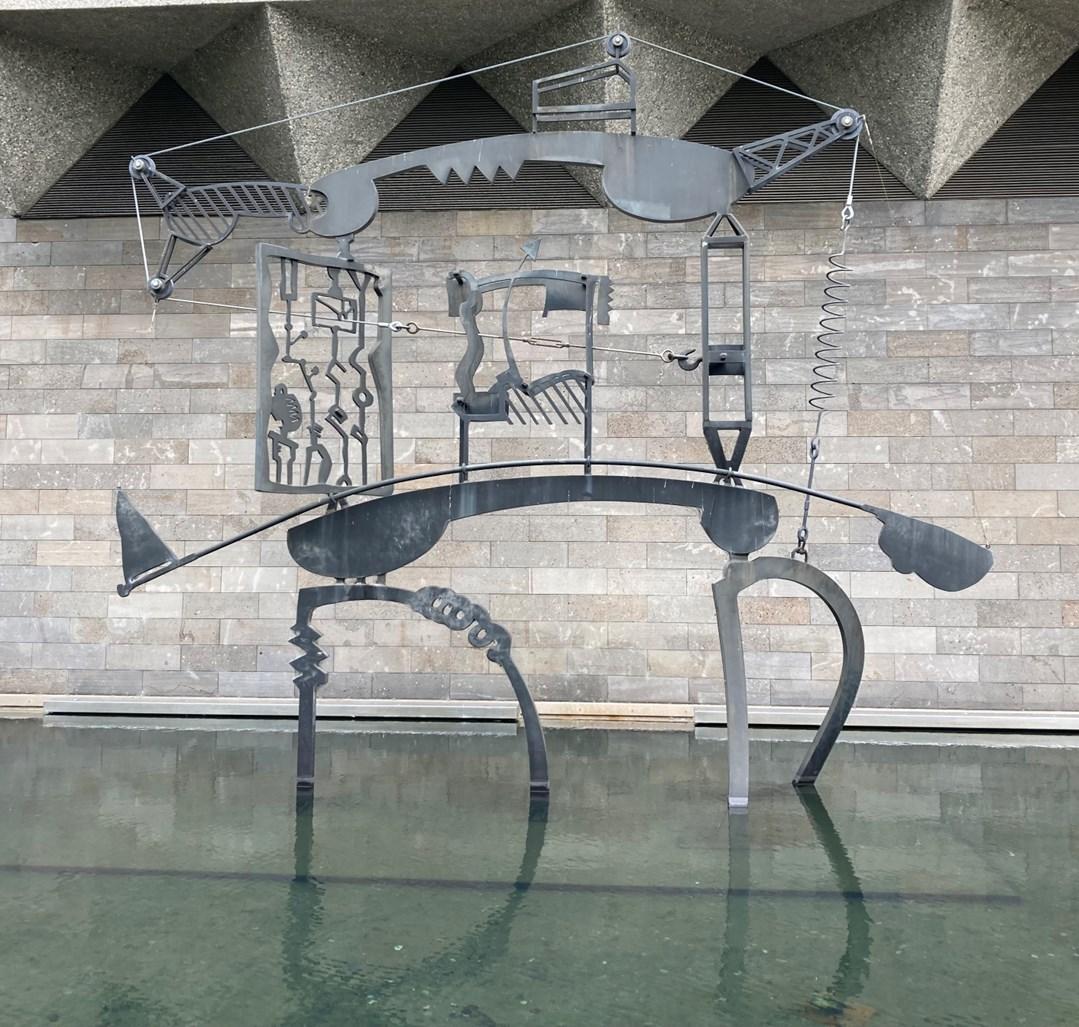
Melbourne is a city of art. Laneways are painted with highly creative work, the streets are lined with outstanding sculptures and now outside the National Art Gallery of Victoria I discovered another art exhibition. Along the nature strips I was entertained by dozens of moving images of birds walking along and pecking at the grass. It was just a delightful scene to watch.
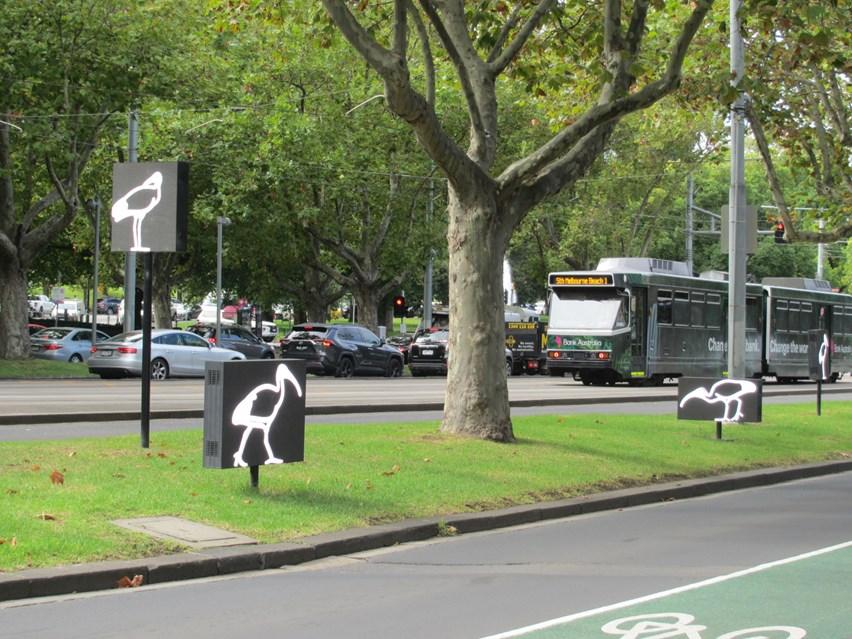



You enter the Grollo Equiset garden by walking through the ground floor of the National Gallery of Victoria.
There were 7 sculptures in the Grollo Equiset garden and a special architectural exhibit.
Each year the National Gallery of Victoria (NVG) invites Australian architects to create a work of site-specific, ephemeral architecture for the NGV Garden. This years winning entry was an evocative reimagining of The Parthenon on the Acropolis in Athens, Adam Newman and Kelvin Tsang’s Temple of Boom.
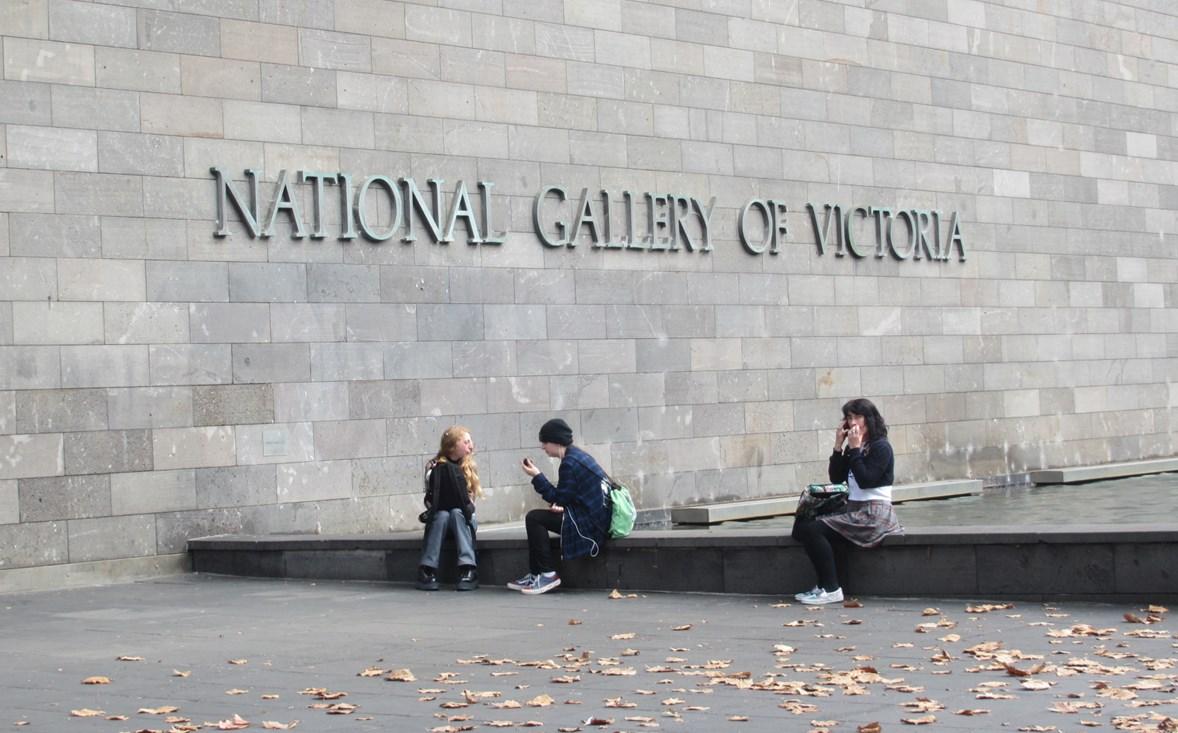
Willem de Kooning
Dutch/American 1904-97
Standing figure
1968, cast 1984
bronze
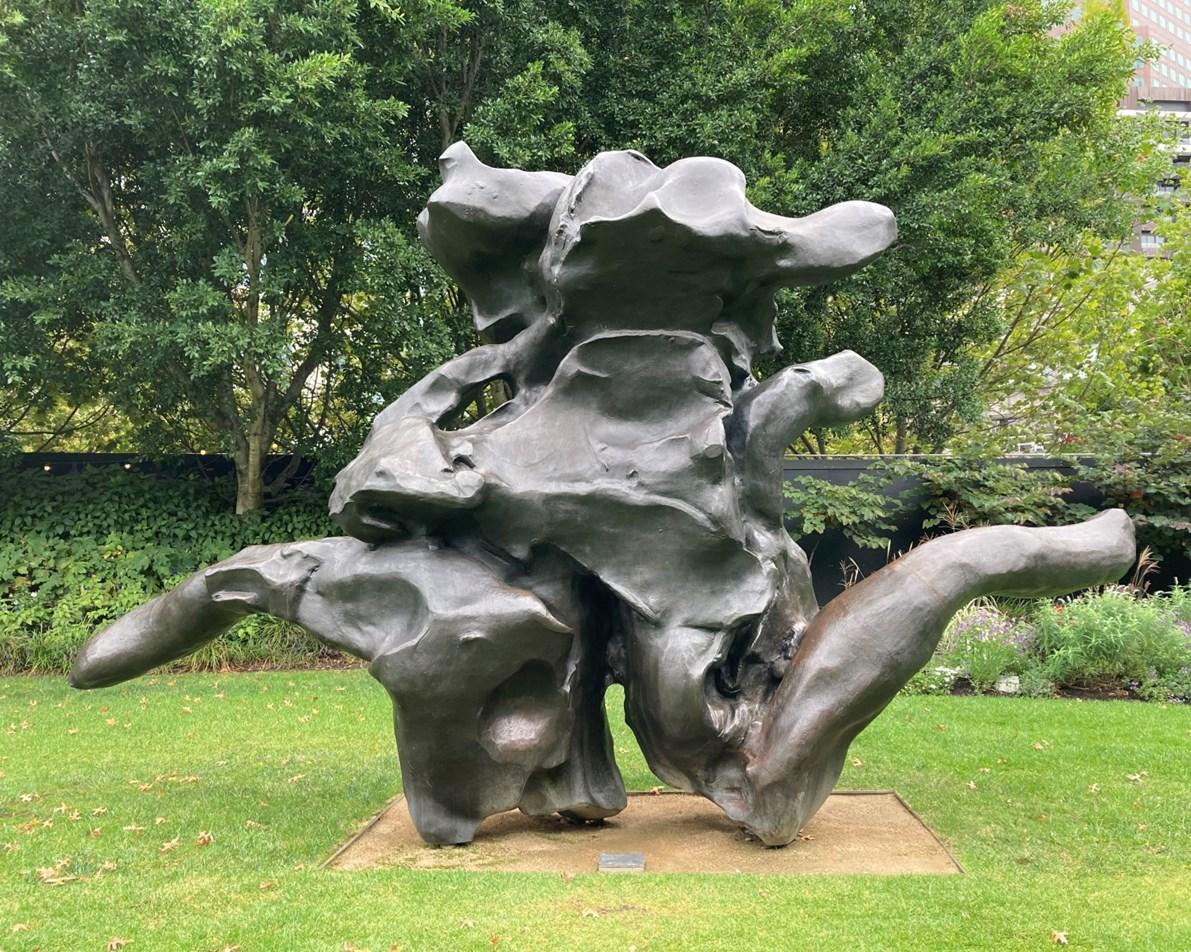
Australian 1952The messenger
1982 Aluminium, steel, emparite, metallic finish
 Geoffrey Bartlett
Geoffrey Bartlett
Louise Paramor
Born Australia 1964
Noble ape 2013
Fibreglass, plastic, steel

George Rickey, American 1907-2002
Three Ms and one W IV, gyratory,1990,Stainless steel, edition of 3
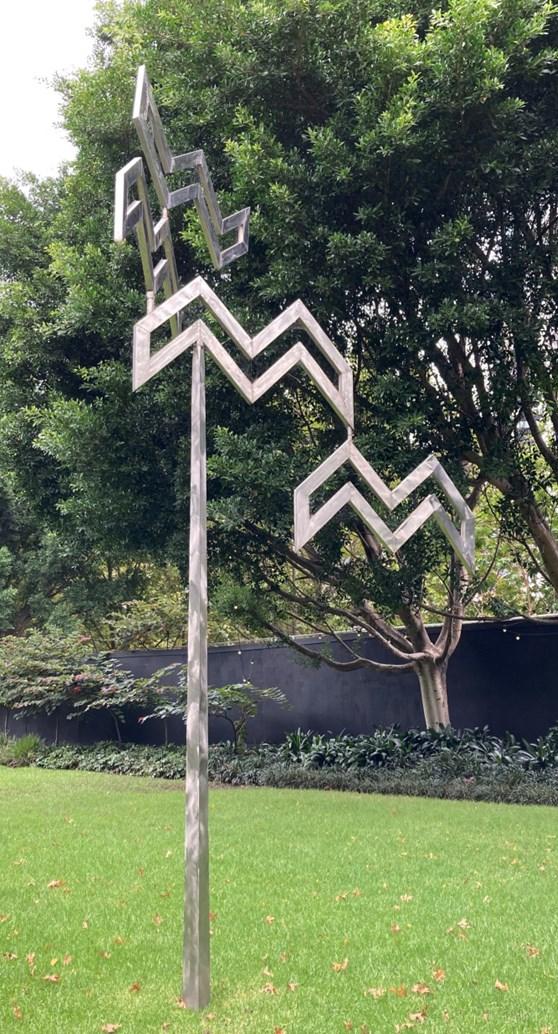
Nell, Australia born 1975, Happy Ending, 2017
Noble black granite Collection of the artist Proposed acquisition
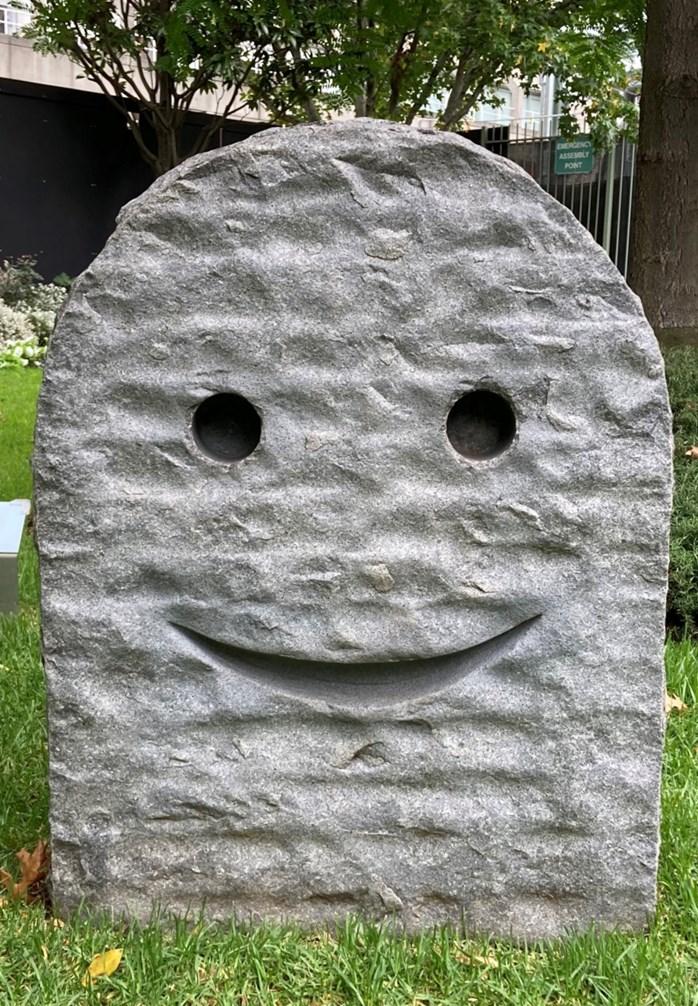

This garden chair certainly didn’t invite you to sit down and relax – luckily we found a more conventional chair.


Exhibition date: 16 November 2022 - August 2023
The 2022 NGV Architecture Commission is an evocative reimagining of the Parthenon on the Acropolis in Athens. Taking its name from the vibrations of music, Temple of Boom was brought to life over the summer months with live music, performances and events.
The likeness of the Parthenon was painted with large-scale artworks by Melbourne-based artists. These vibrant colours and artistic embellishments helped to define what the original building may have looked like over two-thousand years ago. This project aimed to show that buildings can evolve and change over time. The Temple of Boom celebrates the constant cultural flux, while also seeking to expand our understanding of the Parthenon as an enduring architectural and cultural beacon.
The Architects who Designed the Temple of Boom
Adam Newman and Kelvin Tsang designed the Temple of Boom. They work for NWMN Architecture Company which operates at the intersection of architecture, material recovery and local ecologies. Their aim is to promote conversations about how we may live, and how we may tackle the challenges of the immediate and distant future. NWMN was established by Adam Newman architect.
The Artists who painted the Temple of Boom
Temple of Boom was painted over the summer months by a list of Melbourne street and urban artists who were curated by Toby Benador.
Artists involved in the painting of the Temple of Boom: David Lee Pereira, Manda Lane, Drez, Creature Creature is an artist duo consisting of Chanel Tang and Ambrose Rehorek, Aretha Brown, Chuck Mayfield and Resio.

“The Parthenon was built as a temple dedicated to the goddess Athena. Famous for its harmonious proportions and the exquisite quality of its sculptural decoration, the Parthenon endures as a symbol of Hellenic identity, artistic excellence, beauty, democracy and civilisation.
The temple’s plans were drawn by the architects Iktinos and Kallikrates. The construction of the Parthenon involved an unprecedented number of artists and craftspeople of all specialties. Work began in 447 BC and was completed just fifteen years later. The careful placement of precisely cut masonry ensured that the Parthenon remained essentially intact for more than two millennia.
By the seventh century, alterations were made during the building’s transformation into a Roman Catholic cathedral. The Turks seized the Acropolis in 1458, and two years later they adopted the Parthenon as a mosque, raising a minaret at the south-west corner.
During the bombardment of the Acropolis in 1687 by Venetians fighting the Turks, a powder magazine located in the temple blew up, destroying the centre of the building. The Venetians then inadvertently smashed several sculptures.
In 1801–03 a large part of the sculpture that remained was removed, with Turkish permission, by the British nobleman Lord Elgin, and sold in 1816 to the British Museum. The Greek government continues to seek their return to be displayed in the new Acropolis Museum in Athens.
In 1975 a multi-decade restoration of the Parthenon began funded by the Greek government. Each salvageable piece of marble was returned to its original position, while gaps filled with new marble from the original quarry. This time-consuming project is ongoing.”






When the broken columns are painted in vibrant colours and decorated they become artworks in their own right and you no longer think of them as damaged.



 All Rights Reserved on article and photographs Lorraine Fildes © 2023.
Right : Auguste Rodin, France 1849-1917
All Rights Reserved on article and photographs Lorraine Fildes © 2023.
Right : Auguste Rodin, France 1849-1917
There was an old lady at work yesterday, who didn't show her face. Whenever she walked by all I could ever see was the back of her head - her hair was thick & neatly brushed. I couldn't tell if she was shy or if it was just one of those odd situations
that whenever I looked her face was somewhere else. I was on the verge of getting irritated when I caught her face finally while she was leaving the staff room. I only saw it briefly & it looked wise and gentle.
- Brad Evans © 2023
Voice Links to poems by Brad Evans:
it's sure nice to see you!
I saw Einstein on spice curled up in a fusion formulazombified face flickering in torchlight, a twitching scenario framed in grass. And there's Bruckner on ice grinning through rotten teeth lies on a cardboard bed, church organ sold for a buck. You don't see what they see, you don’t hear what they hear, you can ignore how they live, but can you ignore the approach of thunder? That suit looks freshly pressed and your face looks nicely tanned and the sun that scorched your skin, is a star of many.
It's sure nice to see you! and aren’t those dreams a little too bright for the dim minds of men but it's sure nice to see you, again! Not far from a bank a rose hangs in the airMarie C lines up with her pram, she waits an hour for a small box of food with foggy plates caught in her hair. That suit looks freshly pressed and your face looks nicely tanned and the sun that scorched your skin is a star of many. But it's sure nice to see you! and aren’t those dreams a little too bright for the dim minds of men and it's sure nice to see you, again!
across the threshold (or 'the house on the corner')
it was only in hindsight that the symptoms made it obvious: the vomiting, the desire to take a bath; and when the 2 women frantically knocked on my father's door - he came quickly and followed them to their home.
They showed him where the neighbour layface down and across the threshold between the bathroom & the hallway; and when he pressed his fingers to the man's neck, he was already gone; the ambulance arrived quietly and took him away. The home sold a while later, his family moved on...
4 years later
my father finally met the guy who'd bought the place and told him about strange noises that kept him awake at nights, of sounds in the unlit kitchen, of cutlery clanking in the drawer. He played a recording he'd made of one such night to my father and the sounds he heard were eerie. The young neighbour told my father how he dared not freak out his girlfriend with what he thought was going on. My father then told him about the guy who'd died there from an aneurysm those years before, but he didn't tell him where the neighbour layface down and across the threshold between the bathroom & the hallway.
on a bus ride, with Tanya
I remember, while on a bus ride with Tanya, she asking me in a loud, childlike way"Brad, why do old men have such big ears?"
I looked at the back of the old man's head, in front of us, and tried to think of an answer.
I told her something about how thin skin from old age
may have something to do with it. (My response didn't sound that convincing to either of us.) but, Tanya, if I ever reach old age with cognition and somebody sitting behind me on a bus asks the same question they will hear an old man with big ears laugh in a loud, childlike way.

Dr Sasi Victoire is a multi media artist and author presently living and working in Dungog, NSW. Previously a resident in Cairns, Queensland.
Victoire uses a variety of art processes with a focus on community and cultural collaborations that are issues based to achieve quality exhibitions.
She wrote, illustrated and self published two children's books in 2009 for Queensland's 150th birthday celebrations.
Sasi is also an art educator and speaker. Presently involved in the art community of Dungog Shire and Newcastle NSW.
Sasi has exhibited nationally and internationally and curated several international art exhibitions. Including theatre productions in 2019 Alice in the Antipathies, Damansara Performing Arts Centre, Kuala Lumpur Malaysia. Alice in the Antipathies, Cairns Performing Arts Centre, Cairns, Queensland.
Page 106 : Alice n Cat, 420 diameter, Print on arches paper, Sasi Victoire.
Right : Big Wet, 800 x 600 mm., Multi woodcuts on arches paper, Sasi Victoire.


When did your artistic passion begin?
Rubber and oil palm estates are often isolated micro villages away from the cities or friends. Being the manager’s daughter, I had no access to friends my own age and lived in the confines of a plantation compound.
The administration staff of rubber or oil palm estates, lived away from the manual workers. My life, although restricted and stratified under class and cultural expectations, was mainly a resultant hangover of colonial British dominance. It was the final remains of comfortable, upper middle-class lifestyle with servants and gardeners. During holidays, the children often sent away to boarding schools returned to be dislocated yet again with no friends or social outlets. Long interludes of afternoon siestas when the adults rested saw restless children seeking activities to keep them occupied. The boys could take off on bicycles, fishing in little rivers, unaccompanied.
I had to upkeep my family morals and expectations. This period of loneliness opened the need to create fantasy activity to find meaning in emptiness.
As far as I remember, I scribbled and drew on the backs of cupboards, under shelves and in any small crevices that I felt safe during those afternoon siestas. I was certainly unconfined in my imagination. I was found out one day, when my mother tipped the shelves to clean the mud wasps in the corner of the bookshelves. She then bought me some paint and colour pencils and an art block to scribble on, thus beginning a passion that has allowed my overactive imagination to seek an outlet.
Page 108 : Questioning Gaze, Print Image in Roundel diameter 250 mm., Sasi Victoire.
Have you always wanted to be an artist?
Art opened in me a certain curiosity to find answers to questions that arose and to escape life’s monotony in my confusing environment of constant change and transitions within my home. I lived in an era of change politically and socially in Malaysia’s reach for nationalism.
I lived under British imperialist conditions that provided benefits and comfort to access education but also confined us to see progress within Eurocentric models.
I was always an astute voyeur of my space whether by choice or by accident and was highly perceptive of power play in social and organisational situations. I felt compelled to reconcile the glaring social inequalities, find a way to thrive in disparate religious vacuum, and remain visibly unaffected. I also perceived the need to fit in within my environment where women, although vastly intelligent and educated, had to find a place in the social hierarchy that played out patriarchal dominance. I was drawn to power politics, feminism, racism, the glaring inequity of the social class and difference and this was carried out eventually in my doctorate thesis.
I am extremely fortunate in my different encounters with the art communities to find interesting people who propelled my interest in art and broaden my understanding to find my own trajectory.
 Alice & the Cassowary
150 mm. diameter
Drawing on arches
Alice & the Cassowary
150 mm. diameter
Drawing on arches
Describe your work?
My work changes with the issues, I pursue. I was described as a post media artist although I find labels an unnecessary weight on artists to conform.
A migrant already faces many challenges, to find a relevant position to speak from. The straddling of where you come from and where you intend to occupy are constantly oscillating positions to awakening the viewers’ social consciences of political and social struggles to explore.
I find text a very compatible medium with imagery to explore my narratives. I also love to animate my narratives and love the use of movement whether linear or circular to propel the narrative. I also try to reveal my culture through language, music, cultural memes, and colour to provide context to my work.
My understanding of concepts and meanings are researched before I take an informed position so that I may provide greater clarity and comfort to myself and the community, I am involved with. I do not move away from topics of stereotyping, racism, prejudice, and power inequities in my rhetoric.
My work deals with using multi-disciplinary processes that challenges the artist, the distributors / the gallery systems, and the audience. I began my art life among excellent mentors in Victoria although at the time I was quite naïve and oblivious to what I was exposed to. I was enjoying my newfound reliance on my own values, differentiating between cultural overlay, and finding my comfortable space in self.
My work in art began as an exploration of media, techniques and play but later moved to addressing social issues before a drawing of my grandmother began my steady exploration of my own Kerala culture, its diaspora. While I was really interested in printmaking, I was very technophobic and ill equipped to compete in a very aggressive male domain in art studios. I was still afraid to ask and challenge power positions. It took a lot of living to build my confidence in having a voice. I was still finding my feet and my place in a very Anglo- Saxon platform in the 70s. Australia was going through a renaissance of freedom and a surge of political change among student networks. There was a genuine interest in Asia with opportunities in friendships and social interaction through language and culture offered in university- based curriculum. Melbourne was a hot house of art explosion with the exploration of Modernism. All these terms assaulted my naïve sensibilities, and it was much later as a mature student I explored the print medium. In Lismore, a uniquely exciting cohort of students headed by the indomitable Jan Davis as lecturer.
My position is in fairness, equity, and respect for all kinds of knowledge. I champion women’s issues and believe that cultural structures and roles have impeded the progress of women for the benefit of patriarchy. I also believe that women have acquiesced to this position and acted as gatekeepers to harness the progress of women.
I uncover power structures covertly in various relationships and use Alice of Wonderland reputation (as a well-known British literary legacy) as a protagonist in my visual narratives. I work in the arts to create a community that I can be proud to belong to and always endeavour to carry them alongside as a way of broadening the scope for harmonious existence.

Do you have a set method / routine of working?
I am a concept -based artist and invigorated by ideas and challenged to find solutions. I like to work on several themes at the same time. I also love the expansion that emerges through collaborations in multidisciplinary adventures. I love to play and enjoy the freedom of expression and use the print medium to direct my journey.
My belief in art for community development is my underlying inspiration to challenge myself. I apply for grants to include and inspire other artists to collaborate and push them and myself beyond our boundaries. It is a strategy for inclusive participation in community and giving an opportunity for other artists to explore new ground. There is a greater potential when we carry others with us. Various challenges in life, has provided much fodder for exploration and growth. I love words, they provide the energy and impetus to explore new paths into visual exploration. My dreamscape is vital to move towards exploring magical realism where one can suspend time, truth, beauty to find my own narrative. I use magical realism to transport audiences beyond culture and place to find their own meanings in art works.
Why do you choose this material / medium to work with?
Although a printmaker, I do not confine my work to any medium. This gives me freedom to explore, transport my self to areas that give me voice without social and political censorship.
How important is drawing as an element to your artwork?
When challenged by sudden bursts of inspiration, I trust my dreamscape to prove direction and scope. I have always loved drawing to calm my mind, to escape, to find a path through challenges into the wilderness of imagination.

What inspires your work / creations?
To challenge the audience with my work I began to employ Alice as a device to reach Australian audiences at different levels to articulate issues like prejudice, racism, inequality, and uncovering patriarchal constraints for the role of women in culture. Lewis Carroll’s writings are filled with humorous nuances and pointed reflection of the world. It provides covert fodder to reinterpret on my own terms.
What have been the major influences on your work?
I am influenced by narratives and wordcraft and images that convey the mood or the hand of the artist.

What are some of your favourite artworks and artists?
I love the drawings of William Kentridge, Kathe Kollwitz, Brett Whitely, the fun pumpkins of Yayoi Kusama, the printmaking of Barbara Hanrahan, and the self-portraits and colour of Frida Kahlo, the flowers of Georgia O’Keefe and many more. Mark- making influences of De Kooning, Pollock and Joy Hester.
Any particular style or period that appeals?
All styles and periods have appeal, but they are chosen to reflect my current investigation. I also seek to include styles and periods of other cultures to be inclusive of global history and culture.
What are the challenges in becoming an exhibiting artist?
Lack of funds and eternally chasing grants for a project fuelled by passion that rarely translates into life’s needs. Justifying one’s choice, persuading organisations and networks to believe in your commitment to art and community. Living by your ethics and code that sometimes means one has to take up the challenge for it.

Name your greatest achievement, exhibitions?
My curation of artists and performers for exhibitions in Jaipur, Delhi and Tropics to Tropics Festival in Malaysia as an arts ambassador of Australian mainstream and indigenous work and culture.
https://vimeo.com/149619925?utm_source=email&utm_medium=vimeo-cliptranscode-201504&utm_campaign=28749
The mentorship of many artists and students from Far North Queensland and broadening their reach by international collaborations through my play Alice in the Antipathies.
How has the COVID 19 Virus affected your art practice?
My play had two seasons lasting ten days each in Malaysia and Cairns. All subsequent tours were cancelled.
What are you working on at present?
I am currently finishing the frames of imagery for a poem I wrote and include sound collaborations from local Dungog musicians, Donna Cavanaugh and Phil Watts. It is targeted for a ten-minute animation on water spray at Williams River jetty at Clarence Town, New South Wales. It targets the valuing of the waterways and the need to transform one’s personal and collective invasive behaviour towards land, water for climate change.
What do you hope viewers of your art works will feel and take with them?
It is a strategy to take personal responsibility and contribute with changes that would alter and integrate personal, real action to bring about change for the generations to come.
It is also a way to celebrate local artists and value their contribute towards community.
Forthcoming exhibitions?
Water sprite project where there are workshops to create water sculptures with agriculture feedbags. Artists and public will be called for in July Week 1 & 2 Saturday at At Creator Incubator in Newcastle Little Gallery, an exhibition “WITH ALICE”. (Early December 2023)
This body of work will uncover Alice as a conduit to access the audience in my rhetoric and also allow the showing of my play Alice in the Antipathies to Newcastle art lovers.
 - Sasi Victoire © 2023.
- Sasi Victoire © 2023.



 Nocturne 2, 500 mm. diameter, Relief print, Sasi Victoire.on bamboo paper
Nocturne 2, 500 mm. diameter, Relief print, Sasi Victoire.on bamboo paper


 Hibicus (dusk), 650 x 550 mm., Monoprint on arches, Sasi Victoire.
Hibicus (dusk), 650 x 550 mm., Monoprint on arches, Sasi Victoire.
 Cicada
180 x 200 mm.
Collograph on arches
Cicada
180 x 200 mm.
Collograph on arches


 Alice in the Antipathies by Sasi Victoire. Production photographs.
Alice in the Antipathies by Sasi Victoire. Production photographs.
Websites:
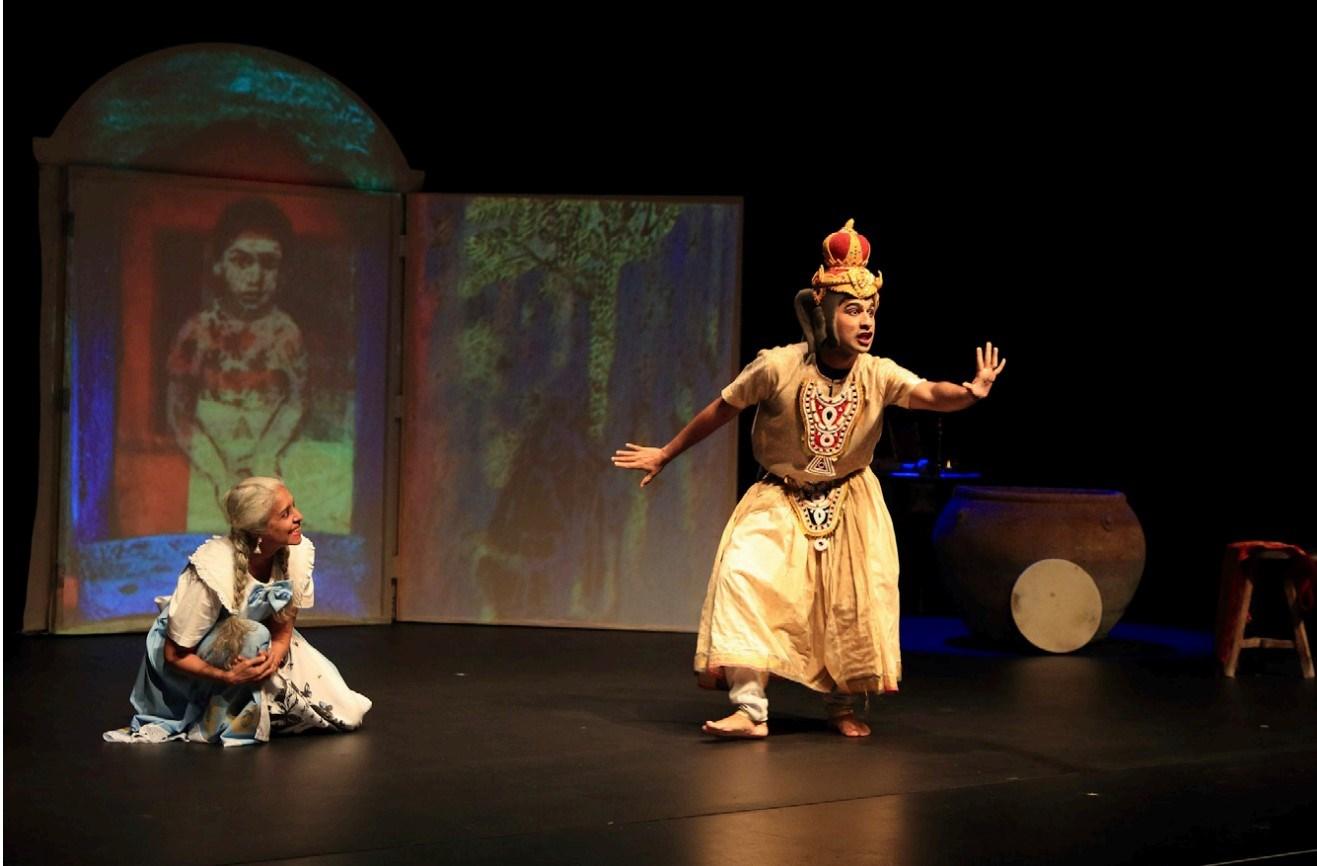


Metal containers lost on a street with money traded for skin. A fine time to die in the middle of chaos crossing a bridge. Playing with a white band of pure cotton, chandeliers turn a 6 into a 9. Number instead of a name.
This testimony of those who suffered, a stolen secret room hidden under the carpet. You might find the two lit candles that open this scene. Watch closely as the first glows dim. Their names were typed in black and red ink, put on a list with matching cufflinks. A green note sat next to the bible as the tango played along to black and white smoking fingers. A table sits reserved while the orchestra plays. $50 for a round, as Schindler speaks. On the table are two empty glasses, and a bottle of Masters.

She wears sequins that reflect his green suit with wings. They applaud as the clown begins to perform. The tango changes tune, and French champagne is poured. The flash of a camera sings to a reserved table, for the lady with pearls. Another flash as soldiers laugh outside while they cut off the Payos, on either side of his face.
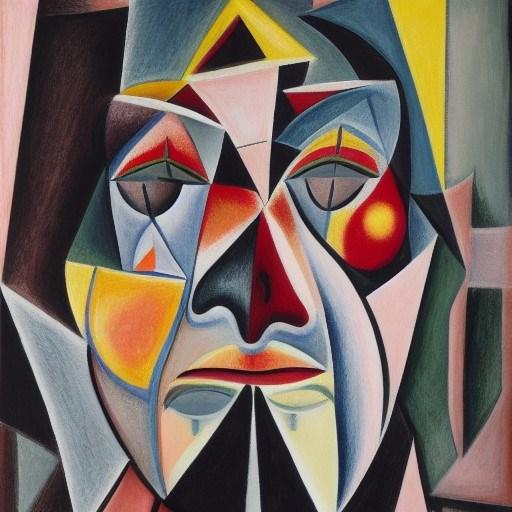
An Underwood typewriter stamps with a bullet and glue as they line up with documents meant to signal freedom. Paintings inside the house on a wall, look down to Joseph and his coat, part of a collection he ordered, of forged commissioned art. I was just the accountant for an army of ants. Given in a contract written behind each half hour of the clock. They are not permitted to own a business, but if the price is right can be part of the ordered presentation. March across to the church where Strychnine lemons are hung off each cross. The testimony resides in a library full of broken soldiers.
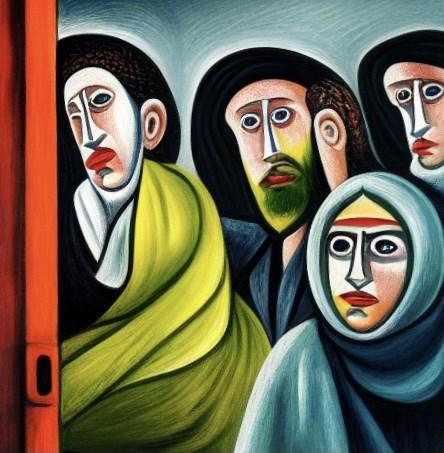
In a Holocaust cast of consecrated text there sits a man who plays an accordion, traded with an ear for music. Not a gambling man but a prisoner and a son. An Ark made more sense than the list. The imagery seemed to play better between each sub-text. And what of the symbology given to a handbag, left outside that shop for sale?
The forsaken empire of a pepper mountain that drew the writers mind to those fallen lights and tales. And what happened to the eagle without wings? It was the railway that carried them across false rails. Trapped in a journey to falsely understood camps.

A photocopy was made of each name that got turned into a number. Aircraft shells to lift a black market. The pretty one who made the cut ran a jewelry store full of gold and burnt silver. The Last Supper for a table of
12. Bread soaked in the color purple, above the cups of red wine, made to look white. There he sits above a cross the man who looks like a magical creature, the one wrote the book.

During the scout they found gold teeth behind rusted bars. Spirit of descendants in a fight and scream for the last seat on a laddered bus. Steam trains and three wise men in a destination to a businessman with abstractions of cash. The seduction would outlast each roll across chambers of glass. The man with a dolly moves from right of stage as the hand-picked extras dress up in a history ordered to play, before that scene in a pharmacy, the roll that held each wounded. And on the cut, a dying eagle grew its wings, and flew up.

Records of memorabilia were lost on her beautiful face. Features in a ghetto of timberyard dogs. A siren screams as the clock hand turns to each coatrack. They each left a story of memories lost. Touched by the seer in leftover shoes and false teeth. Come back into another body that is carried by a swallow from, The Guf, a treasury of souls. There is a fable written underneath the table of 12, a tale for each remembered grey face of a ghost.
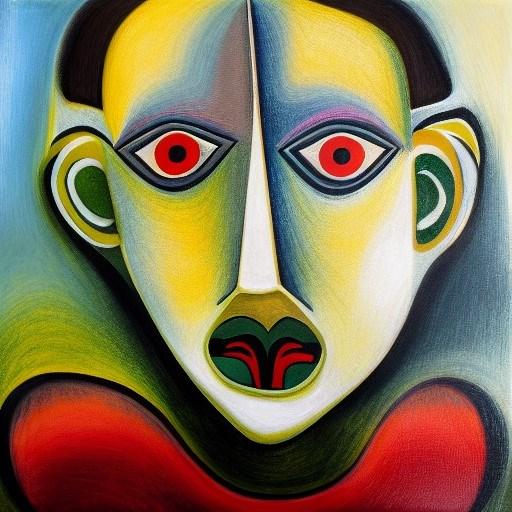
Sleepers recovered in the afterburn are left engraved with a future in the hope of their children. The haunting of a lost unread letter. Imagine an image of a sitter in that portrait. They open the door to a stable to find 46 faces. Caught in a field of skyscrapers and a tower made of vanilla ice. This is the future. The cream melts onto a rosewood violin case, she orates a mystery in a verse, a romance book turned into silent wonder. There are now 50 faces joined in a paper circle cut-out, they are surrounded by fire in a lost forest garden with sharpened scissors. The first note in a symphony of violin’s in a string orchestra play called shiver. She sings a solo while crossing railway tracks. Where wooden dolls are made of black and white feathers exposed in a dress made of salt and pepper.
- Maggie Hall © 2023.

Guf is a Hebrew word, meaning "body". In Jewish mysticism the Chamber of Guf, also called the Otzar " ,רָצוֹאָה(treasury"), is the Treasury of Souls
Pe'ot, anglicized as payot or payes, is the Hebrew term for sidelocks or sideburns. Payot are worn by some men and boys in the Orthodox Jewish community based on an interpretation of the Tanakh's injunction against shaving the "sides" of one's head.
Written by Maggie Hall AI Artwork created through prompt engineer & creator, Maggie Hall.
All Rights Reserved on article and photographs
Maggie Hall © 2023.
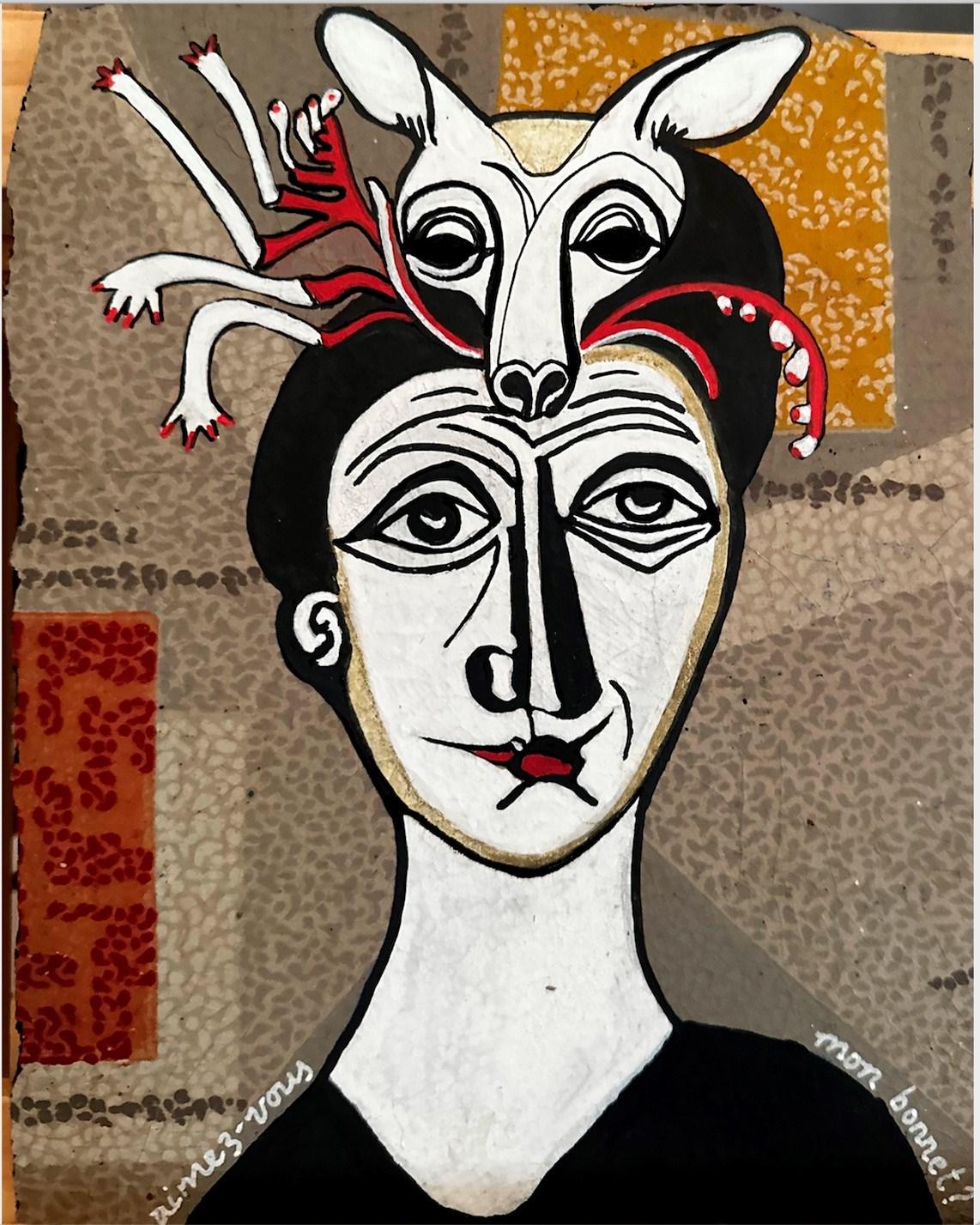
Leise Knowles presently living in Victoria, Australia, is a surrealist artist, photographer, poet and teacher.

Knowles has been a practicing artist and professional photographer for over twenty years. Exhibiting in Australia, Indonesia, Portugal, France and Italy since 1989. Her work being featured in art magazines, on CD covers, anthologies, textbooks and two self-published books. Knowles work is held in public and private collections. A selection of her photographs were included in the Indigenous research publication, Containers of Power: Women with Clever Hands by Louise Hamby in 2010 (Utber & Patullo Publishing, Australia).
Knowles lived and worked internationally in 2014-18 as a practising artist and photographer, Champagne-Ardenne, France and in 2018-20 practicing artist, Occitainie, France.
“My Visual Arts subject areas of expertise include practical applications in painting, printmaking, 3D installations, ceramics and sculpture. I have deep knowledge and passion for the modernist genre of Surrealism, Post-colonial Australian art history, contemporary Indigenous art practices, & Postmodernism.” -Leise Knowles.
PAGE 140 : Do you like my bonnet? Acrylic on vintage linoleum 2023, Leise Knowles.Birth of the Morning Star, 40 x 40
 cm.
cm.
When did your artistic passion begin?
I grew up in a very creative household. My father was a guitarist, writer of prose and song-writer when he wasn't working full time at the steelworks, and one of my mother’s many hobbies was oil painting. Mum's bookshelf had many art books from across her favourite art genres; from Van Gogh to Modigliani, Picasso to Monet. I still have the Van Gogh book, written and published in Italian in the 50s, full of removal plates. I remember seeing Watson and the Shark 1778 by John Singleton Copley in one of her books and asked if it was a photograph and giving me an early appreciation for the classics and realism. Passion was perhaps always there. Passion for art. Passion for life as an artist.
Have you always wanted to be an artist?
I bought my first Dali poster when I was 16. Swans Reflecting Elephants, 1937 adorned my bedroom walls beside a Picasso and a de Chirico. Whilst at high school I undertook extra evening art classes at the local TAFE, as I really was that serious about art even then. I still have many of my early drawings from my teens at the back of my filing cabinet. I didn’t actually think about being an artist. But upon reflection, I was already budding from that age.
After the birth of my son I left the rat race and started art school. I studied at TAFE then onto ECU for my under graduate degrees in fine art and creative industries, and later the ANU for post graduate studies.
I am an Aboriginal artist who was born and raised on Dharawal country. I have lived in WA on and off over the last two decades and was accepted as a member of the Wardandi people. I have ADHD and chronic PTSD, and I use my art to express my creative mind and for healing. I am now living on Bunurong Country.
My artworks definitely have a surrealist leaning albeit neo-surrealist as coined by some in the art-world. My paintings are an exploration of the fusion between my Aboriginal and European bloodlines and my innate connection to Country. Andre Breton (one of the founders of the Surrealist Manifesto, 1924), said that «Alcheringa», (the Time of Dreamings), was also the time of all metamorphoses*. In my work, my figures metamorphose and become the embodiment of my own cross-cultural translation. The nudes are inspired by classical European paintings and I juxtapose them with surrealist stylisation and Aboriginal motifs. The kangaroo appears most frequently as she symbolises adaptation and fertility, and has been used in Aboriginal art and Dreaming mythology for over 60,000 years. Her feet have four toes which provide firm connections to the earth. I imitate this in my paintings to further illustrate my own connection to Country, and the dashed stitches and dots used sparingly in my work, represent my bloodlines tying all the elements together.
Like many other artists I want to evoke an emotional response and experience, for the viewer to think about what the artworks represent, ie. the effects of post-colonialism and the impacts it has had on generations of Aboriginal people. Alone with the mix of surrealism and Aboriginal motifs and imagery, I usually hide 3 numbers in my work...I will let people figure that out themselves.
Birthstone 30 x 30 cm.
Acrylic, oil & wax on board
2020 (Private Collection)
Leise Knowles

Many of my ideas have come to me in my dreams, or as a reaction to my post-colonial research over the years. The backgrounds lay the foundations and are just as important as the foreground figures. I create many, (I mean many) rich layers, textures, patterns and patinas which help to reveal the complexity of my deeply interwoven heritage. I work with vintage embossed wallpapers and lace, modelling gels, acrylics, pigment inks, and spray paint, often scratching into the surface, sanding and scraping before the surface is ready for the figures to be added. I prefer to work on wooden panels as they lend themselves to my hands on approach...canvas cannot always take the treatment. After the figures are completed, I then add in the traditional Aboriginal motifs and finishing the artworks with oil paint and a wax medium to protect the work.
Why do you choose this material/medium to work with?
The variety of mediums and techniques and multiple layers echo the complexity of the subject matter I guess. The finished patinas and depth of each artwork help to tell the stories of my multicultural heritage. The same concepts are used in my digital and collage works too.
How important is drawing as an element to your artwork?
Sketching up the ideas in my diary or on anything available is part of my process. I imagine an image, or on waking from a dream I sketch and write about it as dreams fade so quickly as you know. These quick line sketches are then worked up as more complex drawings with charcoal or pencil to fine tune the pose and position of the figure before committing it to the painting. I draw directly onto the prepared surface before starting the painting process, and often draw back into the painting as I work. I like how the viewer can see the process marks and how the painting has developed.

The tireless seeking out of the traces of my heritage to construct an understanding of my identity and 'place' in the present, whilst examining the important narratives of my ancestors and Australia's convergence of cultures today; in particular women such as myself. My connection to the Dreaming and to Country is intrinsic in my work, and to the myriad of European histories that make the person I am.
The Surrealists of course (LOL). The philosophy of surrealism based on the works of Freud and later Jung would have to be the major influences which underpin my creativity. Modernism, including abstract and cubism from the early half of the 20th century have each made appearances in some form or another in my work over the years, especially as I build up the layers of the backgrounds. Classical 19th century European paintings and sculptures of the human figure both influence and inform my work also. Of course my Aboriginal heritage plays a major part of the stories behind each of my artworks. Recently I read an amazing paper about dreams and magic in surrealism and Aboriginal art by Darren Jorgensen (2011), that resonated with me and within my work. His concepts deal with the association of the unconscious (from where surrealism stems) and the Dreaming cosmology of my ancestors. I am always open to theories and research that could inform or help to construct new ideas my work. It never ends really does it?
Chained
30 x 30 cm .
Acrylic, pigment ink, oil & wax on board
Leise Knowles 2023

What are some of your favourite artworks and artists?
I lived, created art and took photographs in France for several years. I was surrounded by a plethora of art history, museums, galleries, and famous artworks are literally everywhere. I saw the most wonderful artists' exhibitions in Paris such as Klimt, Kahlo, and Monet etc., and visit so many museums and artist's homes. Salvador Dali's home and Joan Miro Museum in Spain, or the Van Gogh museum in Amsterdam. I was overwhelmed with emotion as I walked through that one. A few favourite contemporary Australian artists and Aboriginal artists whose work I love and collect include Melbourne based abstract artist Luke Jackson, Lismore based Lisa Bristow's stunning marine and floral oils, or Gloria Petyarre's incredible canvases of which I have two in my collection. I also studied the work of Nym Bunduk at the ANU and am lucky enough to own one of his bark paintings. I also admire and am influenced by the the classic and modernist masters' nudes. What are the challenges in becoming an exhibiting artist?
Fear and lack of confidence. Being an artist, we create from a place deep within our psyche, or subconsciously bring forth ideas to create images (and words) to share with the world. When we exhibit, especially early in our careers we are exposing those parts of ourselves to others to not only view, but often examine and critique. We fear the criticism or rejection I believe. My philosophy to help generate more understanding of art in social learning, has helped me find a level of confidence and overcome some of the fear surrounding exhibitions. There will always be certain feedback to navigate, but at the end of the day, its the conversations and positive responses from viewers and buyers who make this art life so worth while.
Name your greatest achievement, exhibitions?
In 2015 whilst living in France, I was part of an incredible touring Australian group show called Kangaroos Bounce Into Rome. It was the brainchild of my friend and art colleague Steve McLaren and opened by the then Ambassador of Australia in Italy, Mike Rann. It really was an experience that I will never forget. Later my four textile collages from the show, where toured along with others' works to Assisi and Soriano nel Cimino.
In 2021 I won an award for my painting Convergence in the City of Busselton Art Awards Exhibition. Really honoured as I had lived there for many years in the early 2000s.

How has the COVID 19 virus affected your art practice?
I had planned my 4th exhibition in France, a solo show, for April 2020 in Narbonne, Occitania. I worked for months finishing paintings of my Genesis series, designing promotional material etc. including a date for an interview on a radio art program in Carcassone. The lockdowns in March and April saw the event postponed, but I left France in November of that year before the exhibition was realised. Bit of a disappointment, but I must say I was not at all disappointed about the cancellation of the on air interview speaking in French with my Australian accent, in fact I was relieved.
I am still painting my kangaroo women, and cubist style drawings on vintage linoleum. I am also a photographer specialising in black and white landscapes so that’s always a go to if I am not painting and dreaming.
Forthcoming exhibitions?
I have just had a duo exhibition in Melbourne with Luke Jackson, after relocating in early June from WA to Southern Gippsland, Victoria. We may have another duo or group exhibition in the future. Mid June this year I had two works in the Expo Metro Exhibition in Barcelona, Convergence and Birth of the Birth of Morning Star (panel 35). I was pretty chuffed about that as a few friends from France went to see them. Maybe a photo exhibition too of the Nullabor crossing in April, that friends keep suggesting. On verra mes amis!!!!
 - Leise Knowles © 2023.
*Breton, A. In Kupka, K (1965) The Dawn of Art. pp.6. Angus & Robertson.
- Leise Knowles © 2023.
*Breton, A. In Kupka, K (1965) The Dawn of Art. pp.6. Angus & Robertson.
 Lindsay's Lover 30 x 30 cm .
Acrylic, gold leaf, ink oil & wax on board
Lindsay's Lover 30 x 30 cm .
Acrylic, gold leaf, ink oil & wax on board
S E K N O W L E S

 Page 154 : Re-birth of Venus – (detail)
1m x 1m
Acrylic on canvas Leise Knowles 2020.
Left : Crinoline Cage 30 x 30 cm.
Page 154 : Re-birth of Venus – (detail)
1m x 1m
Acrylic on canvas Leise Knowles 2020.
Left : Crinoline Cage 30 x 30 cm.
 Wand of Venus 30 x 30 cm.
Wand of Venus 30 x 30 cm.
 Emerging from Alcheringa
30 x 30 cm.
Acrylic, oil & wax on board
Emerging from Alcheringa
30 x 30 cm.
Acrylic, oil & wax on board
L E I S E K N O W L E S

 Page 158 and left : Kangaroo and Emu Diptych – 15 x 15 cm.
Page 158 and left : Kangaroo and Emu Diptych – 15 x 15 cm.

 Punish the Natives 1, Digital art, Leise Knowles 2019.
Punish the Natives 1, Digital art, Leise Knowles 2019.
Seven Sisters
Mixed media on canvas 40 x 40 cm. (one of four exhibited in Italy) Leise Knowles 2015.




https://theoneiric.org
All Rights Reserved on article and photographs
Leise Knowles © 2023.

You could be my new baby. My new baby that doesn’t need changing. We can cuddle with less responsibility. Little Grogu that my son stuffed for me. I check myself when I think it- Crazy! You could be my new baby. The choice taken away had me mourning the monthly bloodletting, the possibility. I didn’t want more children I said. Now I cry when I hold real babies.
I dream of having them but they are taken away and you’re so cute! We could travel alternate universes together, love each other without the hurt. You would never age or answer back and I would no longer mourn the part of me that is a black hole. My new baby, alien soft toy- Crazy! A purr would make you prefect.
- Elizabeth Lish ŠkecIf I fall asleep they’ll get me the two men in white suits with white hats, yellow ties shot guns clutched to their chests. Lovers of the kill chasing me through deserted streets to the train station old gates always locked. If I don’t jump the gates they’ll get me barrel to chest with a burst of flowers and a flag that says BANG!
A banging flag that will hit my chest so hard
I’ll have a hole in it look down, up again, say ‘You killed me you bastards!’ I’ll be able to put my fist through it. How am I supposed to drive a truck like this?
I’ll be thinking.
If I don’t keep running, the train station will morph into the Footscray high street. I’ll be running for the truck with a gaping hole In my chest the wind howling through me. The men in white Will be red suits with red hats and black ties always 25 metres behind then an arm length away when I open the door, throw myself into the drivers seat next to an old mate I don’t see any more. It will be someone I miss.
If I drive the truck the men in red will don their black suits, hats and white ties run me down like terminator hosts of the old west never breaking a sweat chase me into the trades hall building and up the stairs.
If I don’t climb into the dumbwaiter they’ll find me the two men in black with white ties and hats. They will have friends with them. The old mate I don’t see any more but miss, the people from the train station I didn’t notice.
If I pull the ropes inside the dumbwaiter they’ll break.
I will have to climb out, hear their assurance
‘We just want to be your friend’ before their weapons are unleashed and I start running again.
If I stop running they’ll get me laughing clowns from a crazy kid carnival pacing in circle, pointing their oversized gloved fingers at the gaping hole in my chest I’ll look down and realise I can see right through myself.



Eric and Robyn Werkhoven have lived and worked as professional contemporary artists in the Hunter Valley since 1988. Both are award winning artists and have been Finalists in major Australian art prizes.
Their work has been selected for exhibitions nationally and internationally. In 2013 they established the successful Arts and Literary online magazine – Studio La Primitive Arts Zine. Their collaborative works are a celebration of everyday life “exploring the world of human caprice, with sheer delight and a touch of irony”. The artist’s individual styles are evident in these works; Robyn’s passion for portraiture and figuration, and Eric’s stylised mythical beasts and human creatures, as is their shared attraction to bold colour. Their styles come together complementing each other, creating energetic and powerful work – Two artists’ forty three-year journey is enriched by each other’s thoughts, dreams, desires, hopes and fears.
A perpetual intrigue with the mysteries and absurdities of man’s existence.
Mad Moment drawings and paintings – an inundation of thoughts that pass through and around us.
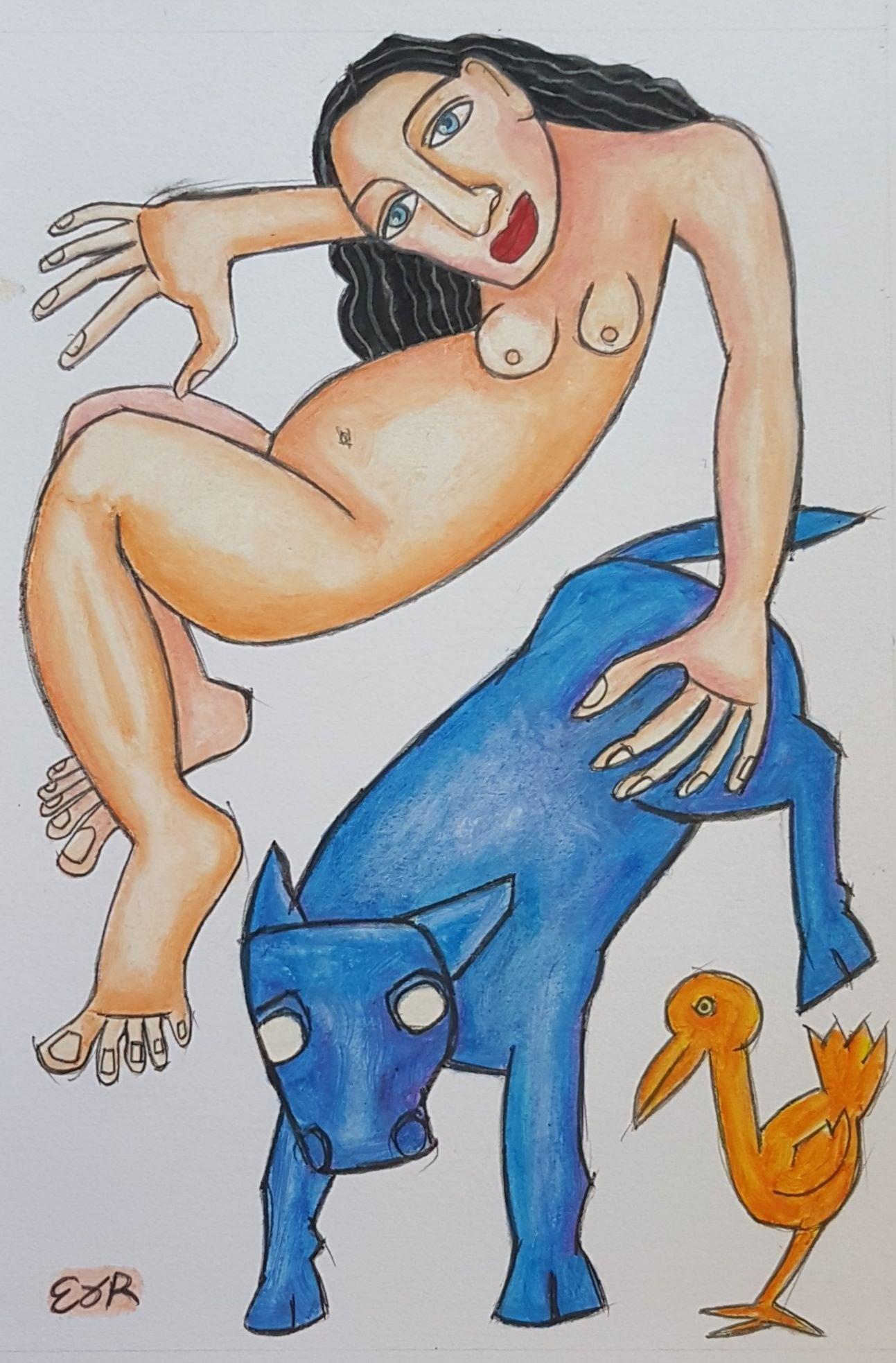
Sometimes sharp and penetrating missiles, exuding the tragic drama of humanity or fleeting feelings of whimsical and fantastic performances concerning the ritual of our daily existence.
The drawings, dictated by the subconscious are created with haste, capturing the mad moments, as the thoughts are on the move – a chaotic newsreel or a glimpse from a surreal ballet, staged with exotic creatures.

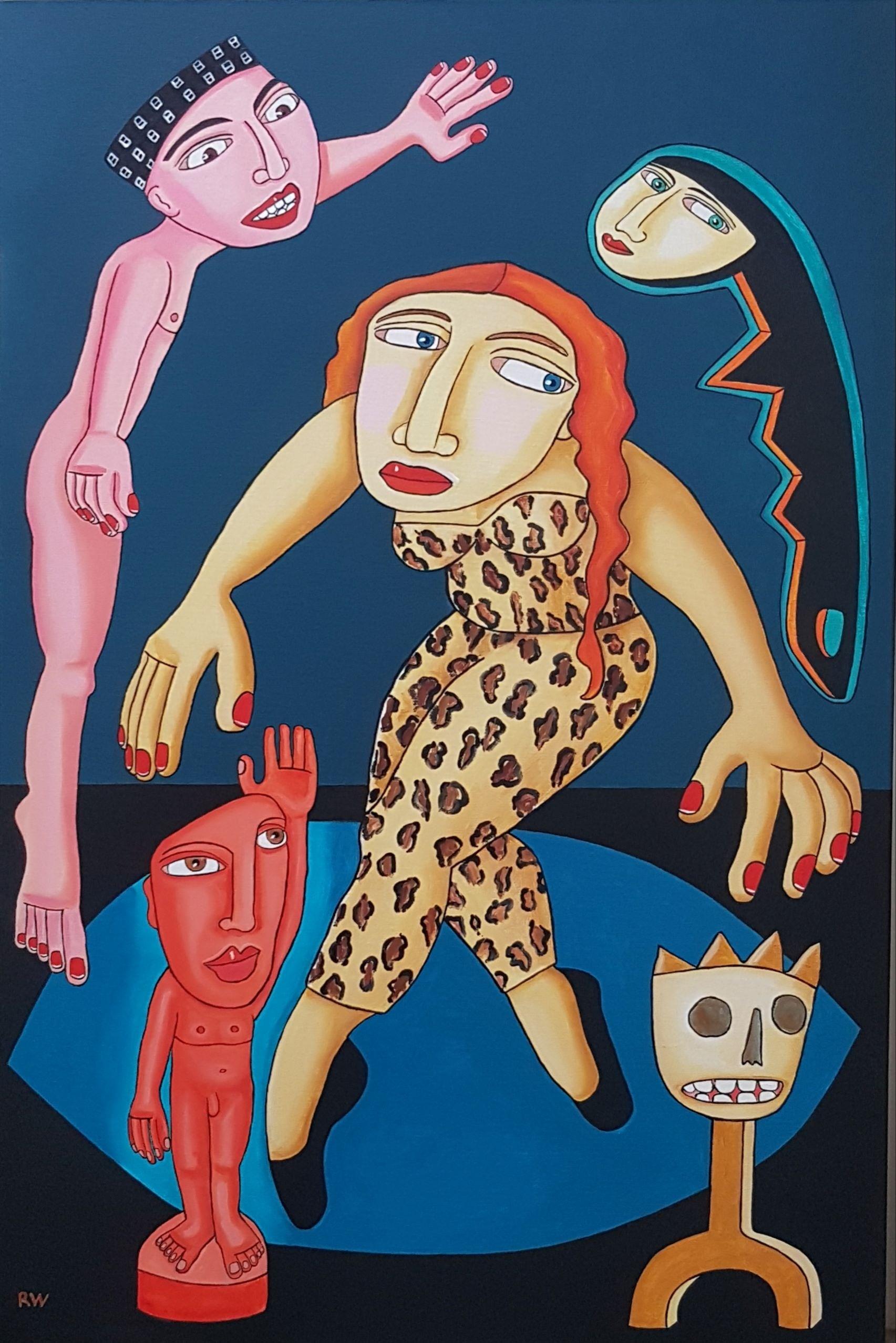

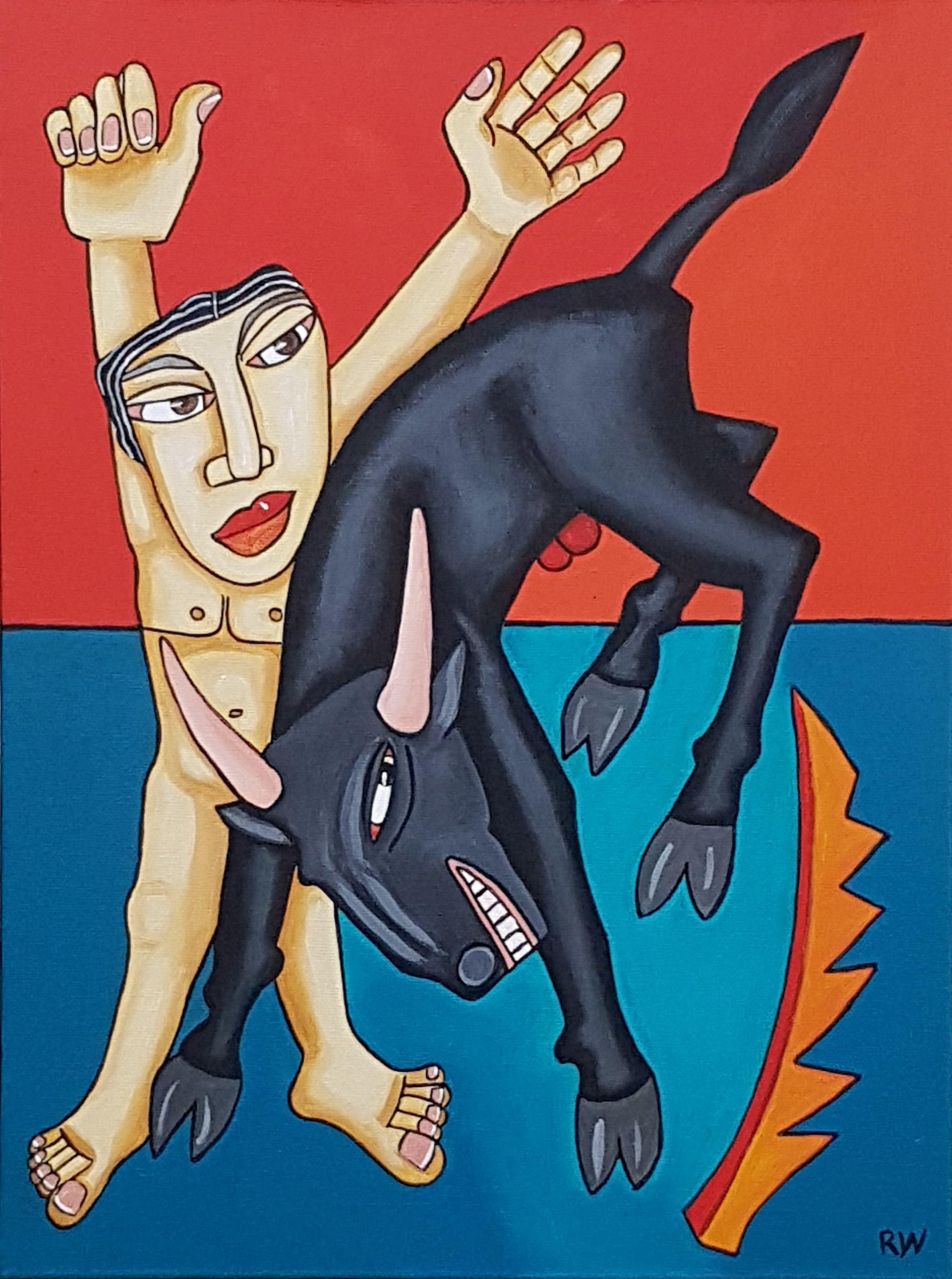 Balancing Act, Acrylic on canvas, 40 x 30 cm., Robyn Werkhoven 2023.
Balancing Act, Acrylic on canvas, 40 x 30 cm., Robyn Werkhoven 2023.
R A W I N G S


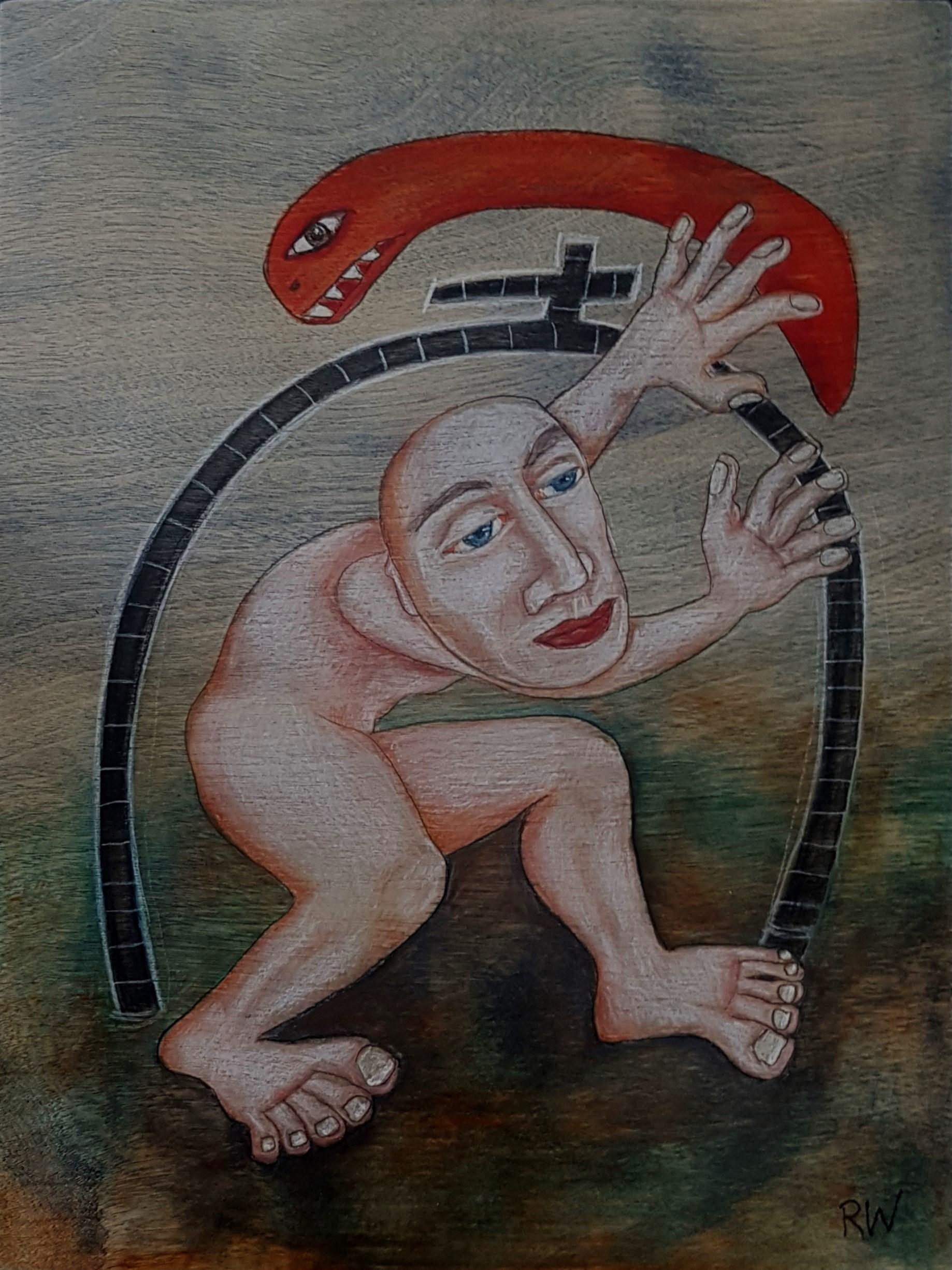


Artist and multi-instrumentalist musician Monique Werkhoven currently resides in Brisbane, Meanjin. Originally from Newcastle/Hunter valley, Awabakal Country.

Monique’s artistic style is pop surrealist, low brow and definitively outsider art.
Monique says “I am usually found drawing, doodling and painting. Spending time imagining, contemplating and inquisitively looking at nature, until bursts of creative energy come along.
The characters flow subconsciously from the hand and land on the chosen medium.
The works have a child-like playfulness, often exploding with bright colours and repetitive patterns, creating a fun and uplifting vibe. They are often a little cheeky.
The main reason for creating art is self-preservation, an outlet for expression. A place to find solace, to escape and lose yourself in. To make something that is uniquely yours in this world. Sharing a peek inside, outside with the viewer. “
- Monique Werkhoven © 2023
 Mickey J Baby!
H66 x W51 cm., Acrylic on canvas, Monique Werkhoven 2022.
Walking through life like an upside down melon head
Mickey J Baby!
H66 x W51 cm., Acrylic on canvas, Monique Werkhoven 2022.
Walking through life like an upside down melon head
Watermelon Juice, Watermelon juice
King Brown - Bulls eye

 H40 x W35 cm., Acrylic on canvas, Monique Werkhoven 2023.
H30 x W25 cm., Acrylic on canvas, Monique Werkhoven 2023.
H40 x W35 cm., Acrylic on canvas, Monique Werkhoven 2023.
H30 x W25 cm., Acrylic on canvas, Monique Werkhoven 2023.

Australian Sculptor & Jewellery Designer since 1989. Artist Barbara Nanshe lives and works in Newcastle NSW. Born 1964 in Tasmania Barbara has a successful jewellery and art business which values and practises sustainability principles.

Lead by her intuitive use of ethically sourced materials and her loyalty to the story and positive energy principles, Nanshe produces vast styles of adornment from simple to intricate. Barbara enjoys embellishing the stories with vintage and antique objects to tune the message and produce truly unique and meaningful pieces.
Nanshe has been accepted into Romanian Jewellery Week 2023 in Bucharest, to exhibit her recently made jewellery Collection.
This collection uses materials, that by their very presence, symbolises the impermanence and transformation of all life. The past often informs the future. All the materials used in this collection come from another life, another existence, from the past to the future in another form.
“The Past is in The Future”Page 180 : Ring Hand Fetish 2023. Recycled Sterling Silver Black Patina Recycled 9ct Gold Post 1750 One Use Clay Tobacco Pipe Part, Thames River London Posca Paint Citrine Size Z2. Barbara Nanshe.
Pendant Carried Forward 2023 Recycled Sterling Silver Black Patina Recycled 9ct Gold Post 1750 One Use Clay Tobacco Pipe Part, Thames River London Posca Paint Vintage Baltic Amber Citrine Synthetic & Linen Cord 9.5cm x 4.2cm. Barbara Nanshe.

Pendant Transported 2023 Recycled Sterling Silver Black Patina Recycled 9ct Gold Post 1750 One Use Clay Tobacco (opium) Pipe Part, Thames River London Posca Paint Ammonite Tasmanian Amber Citrine Gold Leaf Synthetic & Linen Cord 13 x 7cm. Barbara Nanshe.

Tasmanian & Baltic Amber, more than 52 million years old, is the epitome of transformation.
Having once been fluid inside a living tree, the Amber now carries ancient tiny forms to a new world where its fossilised, brittle form imparts a new cosmic light. Cephalopods died out 66 million years ago, as Ammonites, they represent the cyclic earth and sea.
Tasmanian Serpentine is formed by the mineralisation of volcanic deposits.
Alchemy changes the nature of silver & gold. That which is broken, when transformed with gold leaf or paint, honours flaws and imperfections as new life.
This collection changes all to adornment to honour connection and transformation with the symbols of earth; lotus, tree; light and moon.
Barbara has a deep connection to the forest and ocean having grown up in the wilds of Tasmania. The stories inherit in her jewellery naturally connect the wearer to higher purpose because at the heart of every piece is Nanshe’s crusade to inspire and nurture personal connection to the planet through adornment.
https://nanshejewellerystudio.com/

Pendant Folded Into Time & Light 2023 Recycled Sterling Silver Recycled 9ct Gold

Post 1750 One Use Clay Tobacco Pipe Part Thames River London Tasmanian Amber
Citrine Gold Leaf Synthetic & Linen Cord 12 x 5.5cm. Barbara Nanshe.
Earrings Time Lines I 2023 Recycled Sterling Silver Black Patina Recycled 9ct Gold

Post 1750 One Use Clay Tobacco Pipe Part, Thames River London Posca Paint
Vintage Baltic Amber Black Amber 10.5 x 3cm. Barbara Nanshe.
Earrings Time Lines II 2023 Recycled Sterling Silver Recycled 9ct Gold Post 1750 One Use Clay Tobacco Pipe Part, Thames River London Vintage Baltic Amber Black Amber Copal Amber Citrine Each 8.5 x 2.2cm. Barbara Nanshe.

Pendant Tree Light 2022 Recycled Sterling Silver Tasmanian Amber ChinchillaFossilized Wood QLD Enamel Coated Copper Synthetic & Linen Cord 7.5 x 6cm. Barbara Nanshe. All Rights Reserved on article and photographs Barbara Nanshe © 2023.

(inspired by Fiona Hooper’s painting, Sunset Drama)
Firesticks lick greenery black. Crackling leaves breathe white yellow and purple into an evening sky. A rainbow lorikeet opens its wings adrift upon a warm current of air. A platypus dreams in a tea brown creek safe in a womb-bag of water. Hardwood seeds burst open to wait for a darker soil mixed with ash and humus and moisture.
A nearby valley echoes a fire dance –didgeridoos commune with spirits who dwell within a timeless realm –their dark eyes spill tears into a smouldering cloud.
A still lake mirrors swirling figures while red flames leap from fern to shoreline where tribal tongues sing life into a hungry land.
- Reese North © 2023
The camp was quiet only the old ones and the watchers were wide eyed and listening.
The watchers stood silently on the cliffs looking out to sea. The moon was full and stars were fires in the timeless black.
The coals on the fire exploded the sea raged on the rocks and the watchers stood mute on the cliffs looking out to sea.
The dingoes slept fitfully evil gounges* tormented their dreams. Occasionally a growl a moan a bark would echo through the stillness.
The old ones quivered they sensed the birth of a new horizon without a sun. The moon crept higher its light was filled with bad dreams.
The Elders knew that the bourais* who slept had to be protected their dreams kept sacred as the dreams of bourais must if they are to see with the light of the sun and touch the dreams of the stars.
Two dingoes roused from their sleep they glared in rage.
The dust sprang to life between the two and they lunged at one another with claws and teeth bared.
They grappled in a tearing scream of hate! They cowered as the wind sighed in the trees and a tiredness overcame the watchers who stood mute on the cliffs looking out to sea.
The young warriors whispered in their sleep drew a breath and heaved a sigh as an old one waned tired –death jangled in his chest.
A howling of the people rose with the waning moon. The sun rose blood red and the watchers knew the first blood of their people had been drawn when a white sail burned on the horizon.
The Elders roamed quietly around the camp they placed an initiation tooth in the sacred bag of each newborn warrior. The Elders knew they could not sleep. They knew a battle was about to occur no spears or nulla nullas* would be called for only the power of their totems.
A sour smell fouled the air and the dingoes growled their omens.
A cruel wind growled in the hills and the air in the camp grew ugly. The old ones sat stifled by the presence of alien totems.
- Reese North © 2023.
I took this travel and street photo narrative series on a short trip to the Scottish capital. I was enthralled again by its mysterious magnetism. The characteristic grey tones of the buildings, the beautiful blossoms, and the wetness from the rain on the surface worked all together as inspiration for my photographs. Starting my walk in the castle, I went all the Royal Mile until the Holyrood Abbey and Palace, getting in the closes. I also visited the St. Giles Cathedral, and the Greyfriars Kirkyard (statue of Bobby outside) on the way. Once I got to the Holyrood Palace, I went up to Arthur’s seat to see the stunning views, misty and worthy. The next day, I walked amused by the pleasing and quiet path of Water of Leith, stopping by the Instagram famous Circus Lane Street, and the delicious market of Stockbridge, to The Shore (reflections spotlights), and Newhaven (little port and cute lighthouse), once there I came back all the way to be wondered by the absolutely magical Dean Village, its known cemetery, and the delightful Modern Art Gallery to finish my walking day. Finally, on the last day before going back to Tenerife, I visited the Princess Gardens (that fountain!), and saw the impressive views from Calton Hill. And I bought some music books and CDs at the record store nearby! Edinburgh is a joy, no matter the rain, it’s just so inspiring. Carpe Diem!
Biography:
Seigar is a passionate travel, street, social-documentary, conceptual, and pop visual artist based in Tenerife, Spain. He feels obsessed with the pop culture that he shows in his works. He has explored photography, video art, writing, and collage. He writes for some media. His main inspirations are traveling and people. His aim as an artist is to tell tales with his camera, creating a continuous storyline from his trips and encounters. He is a philologist and works as a secondary school teacher. He is a self-taught visual artist, though he has done a two years course in advanced photography and one in cinema and television. He has participated in several international exhibitions, festivals, and cultural events. His works have been featured in numerous publications worldwide. His last interests are documenting identity and spreading the message of the Latin phrase: Carpe Diem. Recently, he received the Rafael Ramos García International Photography Award. He shares art and culture in his blog: Pop Sonality.

Where am I as an artist? This is a question I like to ask myself every now and then. These days, I’m significantly influenced by ideas I need to expose about current issues. I’m into questions, and defending what I consider are valuable human rights we should not lose. I feel collage and video art are the art forms that can convey this concern. And I would like to start exploring installation too for these matters. I’m also into transmitting the message of the Latin phrase Carpe Diem. How? Showing my travel and street photo narrative! I have been to 41 countries, and I have a long wish list!
Visiting new places opens so many possibilities. And it enriches my views as a person and as an artist. The main lesson that I have learned during these trips is that there is no unique way, there are so many different lifestyles and options to live your life. However, at the same time, I have also realized we have more things connecting us than what makes us different. First, the best path to live life can be something for someone and a totally different one for another person. Every day I value more and more the local, the regional, and the differences between what I find new or exotic in these trips and what I’m used to or what I know back home. I feel the Western vision of happiness is a closed concept that we should reconsider. During my trips, I have also seen that even though we are different the most important things in life connect us. I have realized most human beings are beautiful souls with so many good things to share with the world, and in fact, this picture I got through experiences is quite far from the image I get from the media about the world and its citizens. It makes me question "Why?".
So this is where I am as a person and as an artist right now.
- SEIGAR © 2023
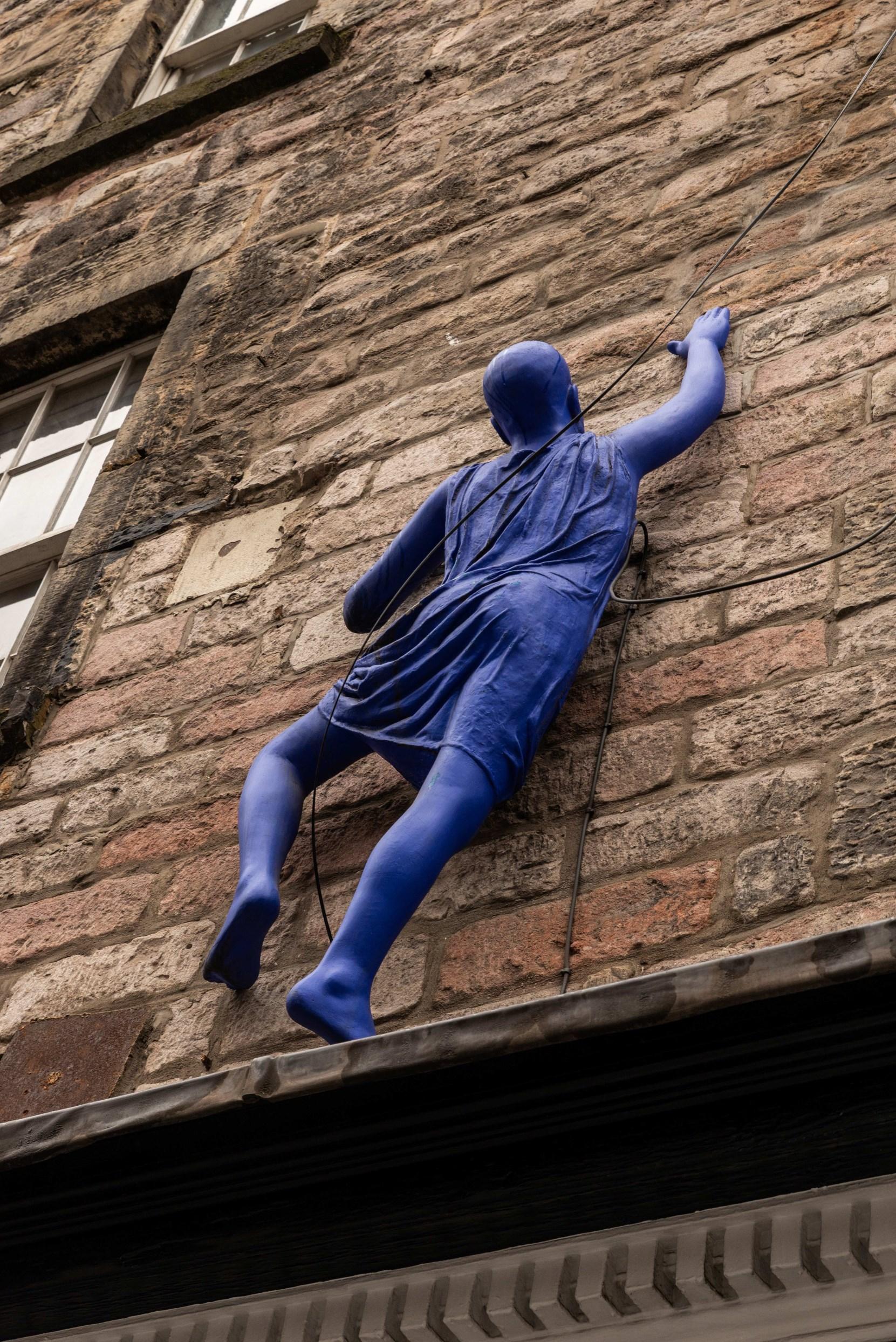
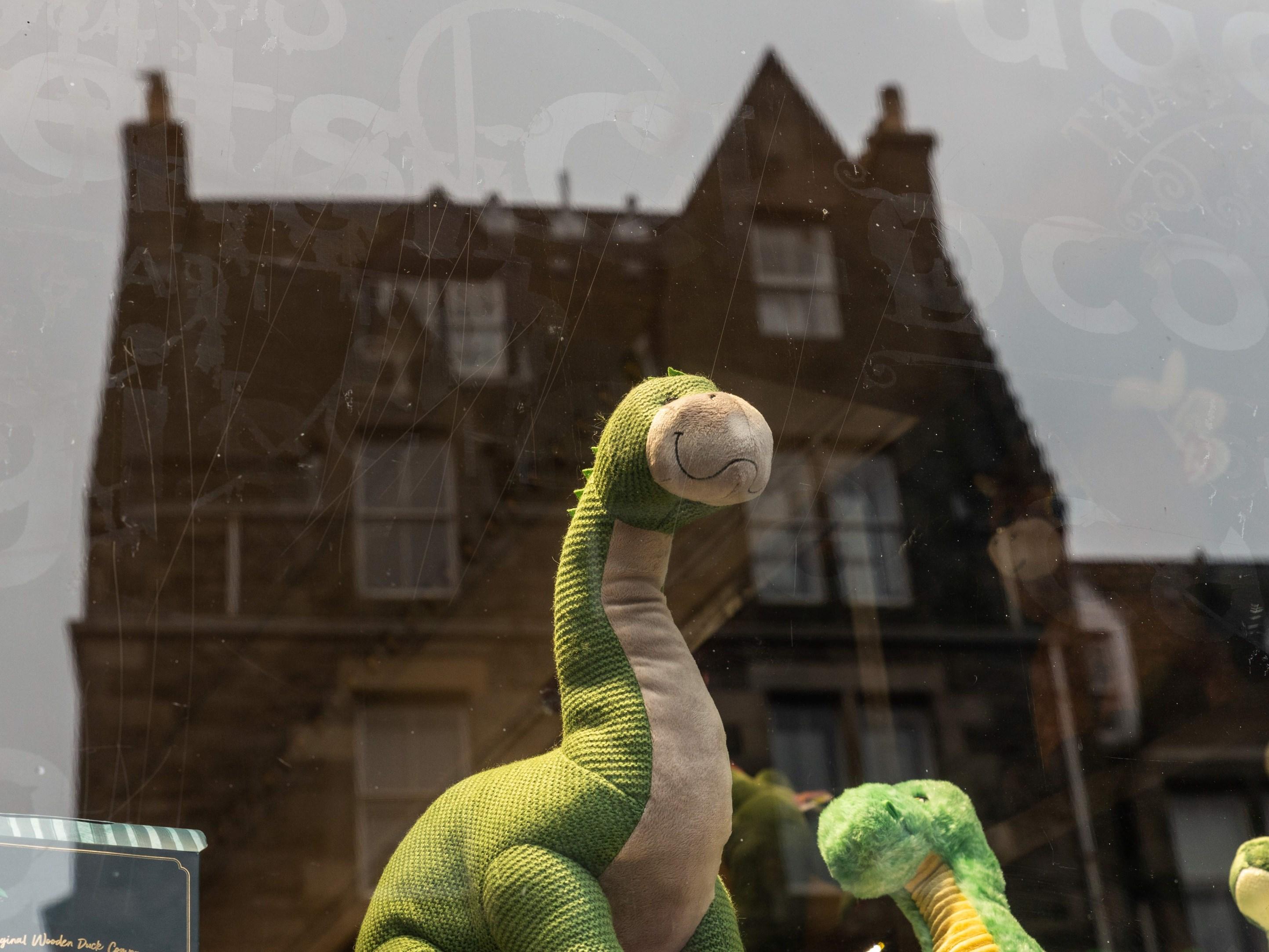
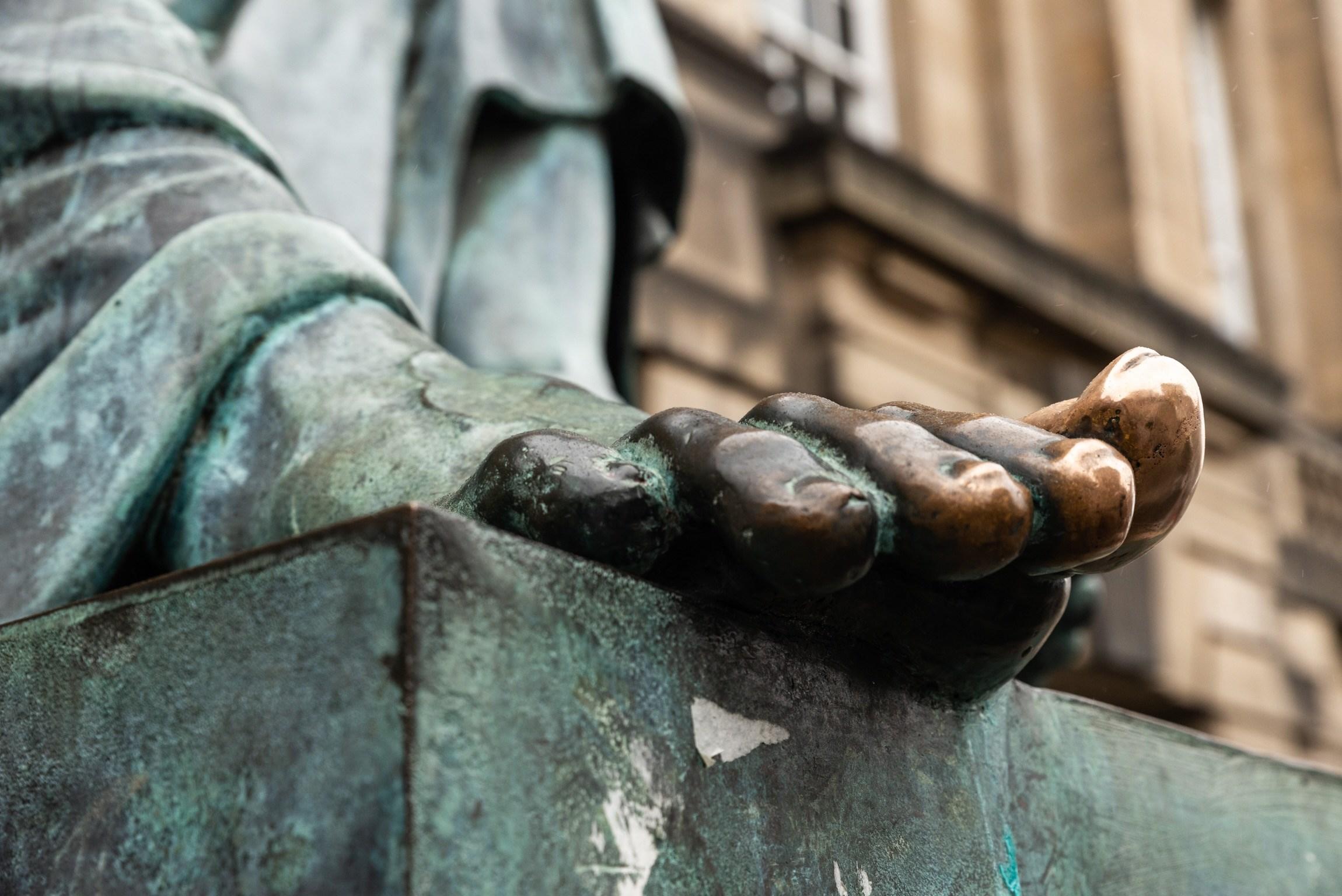
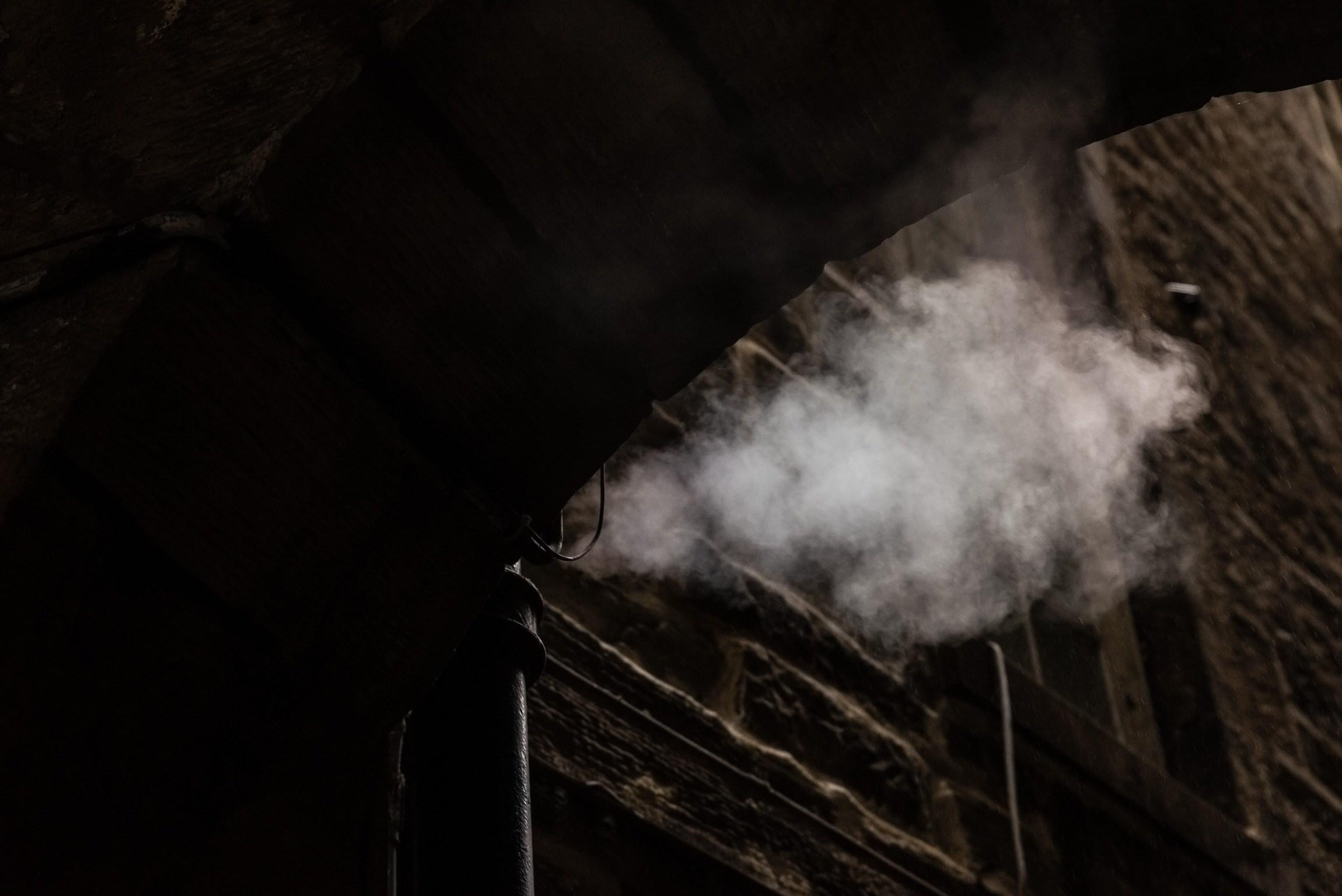


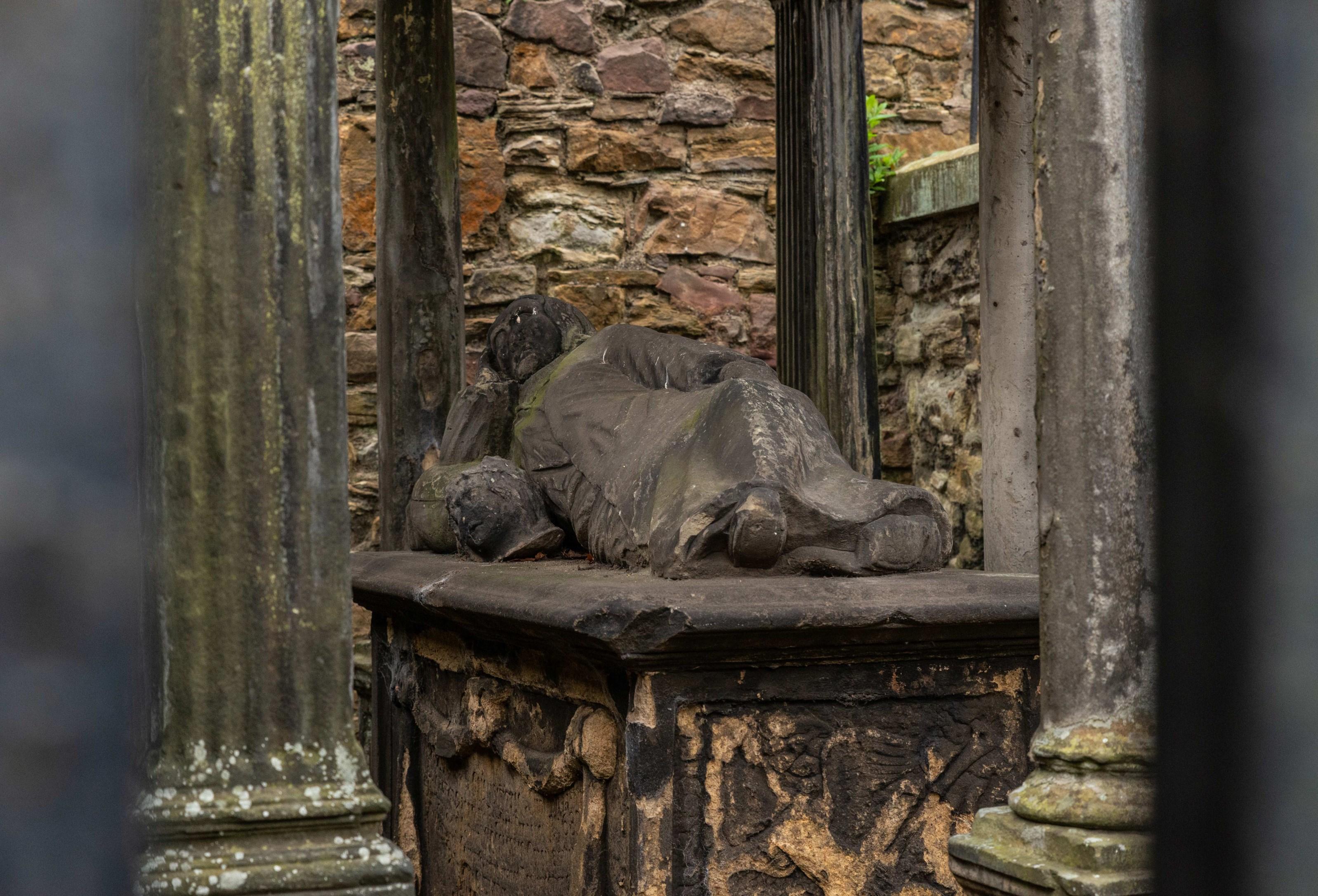
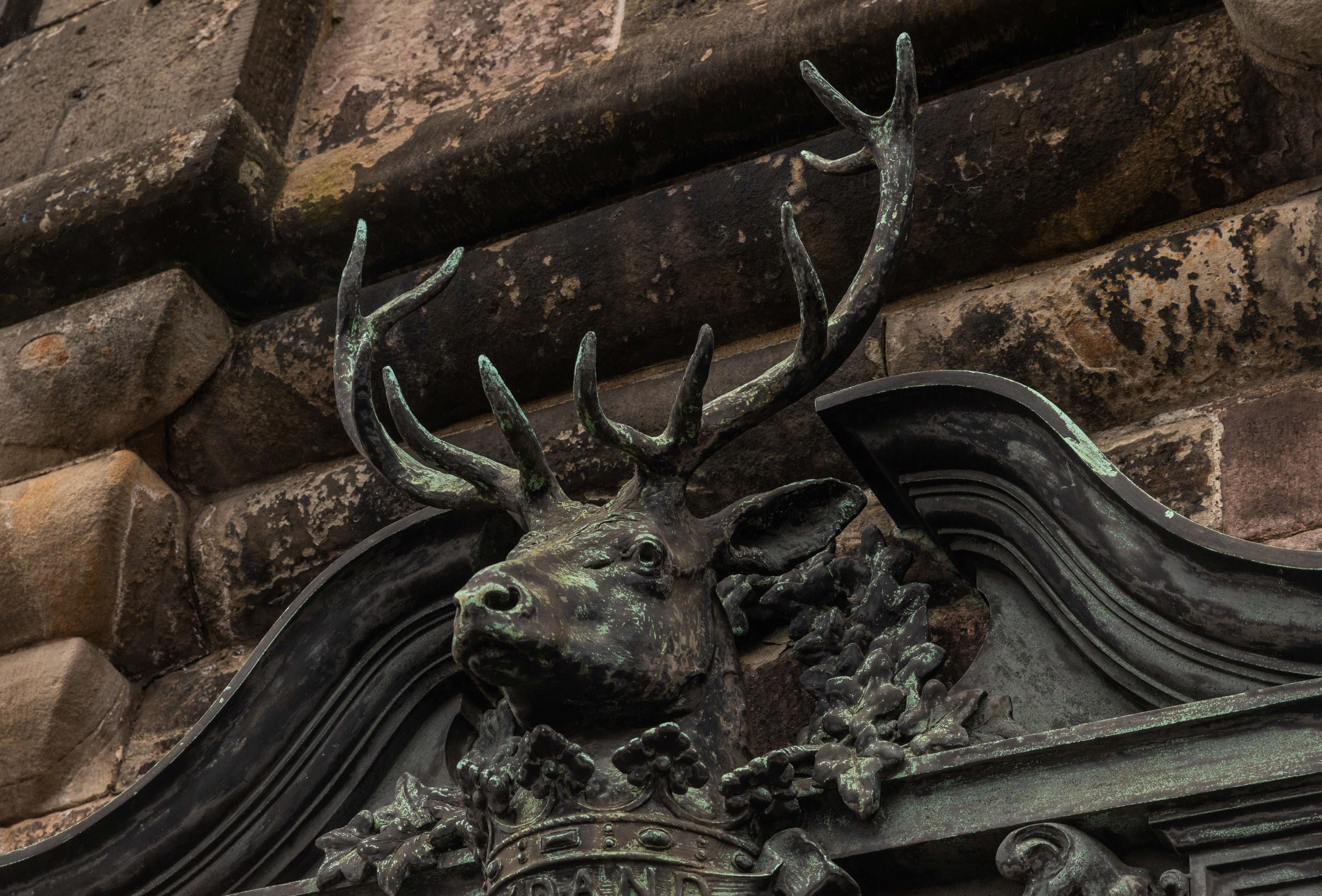
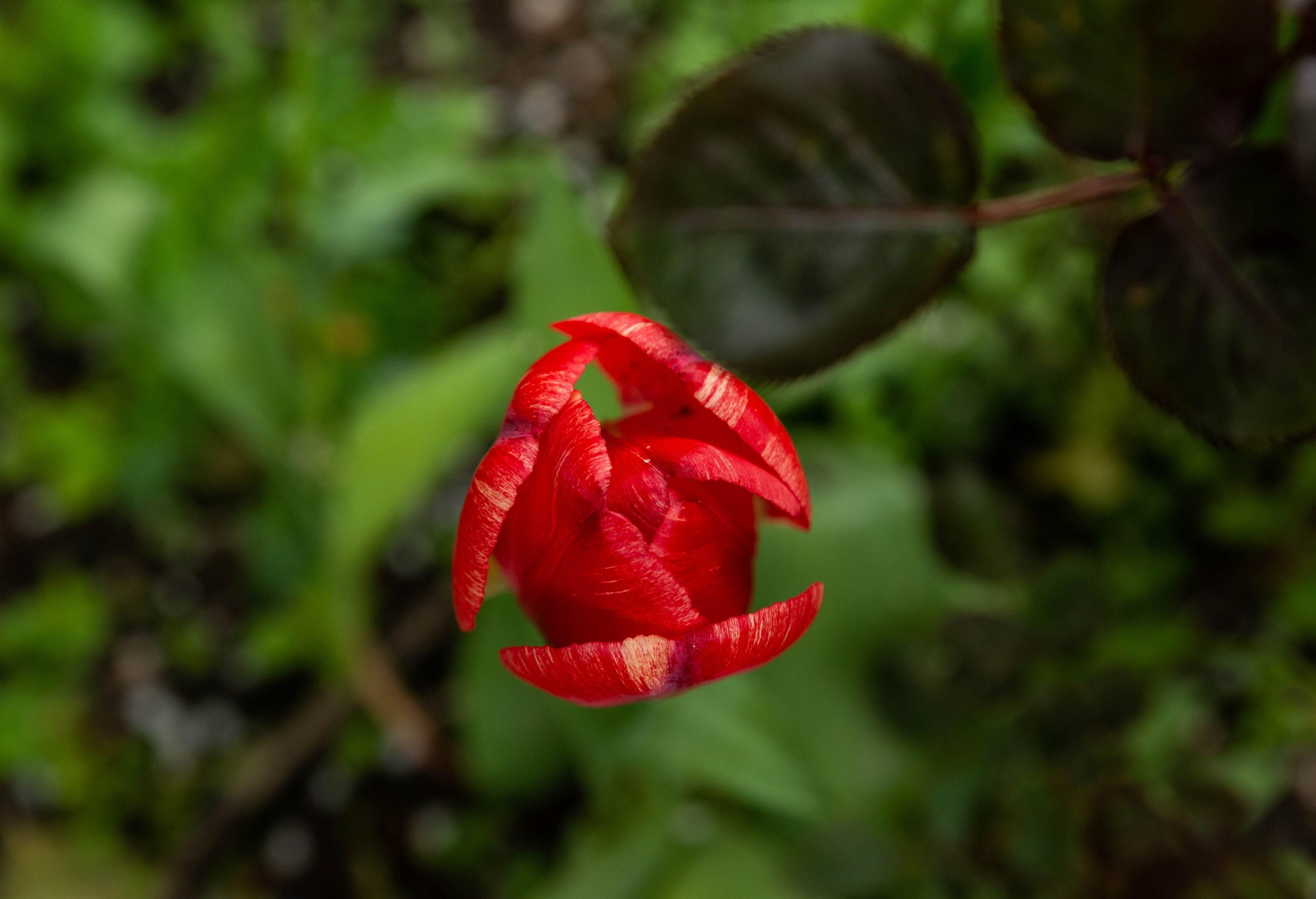
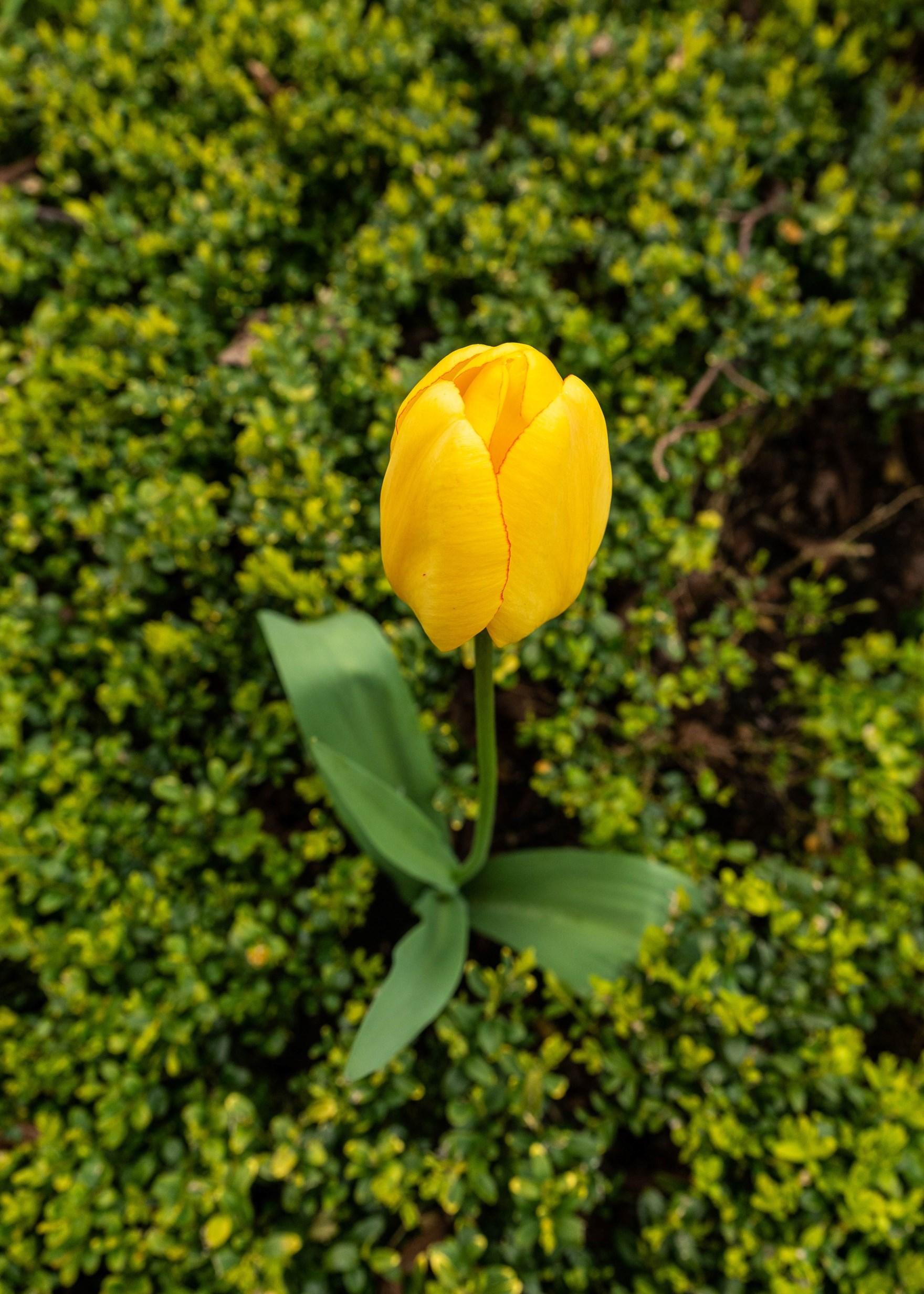

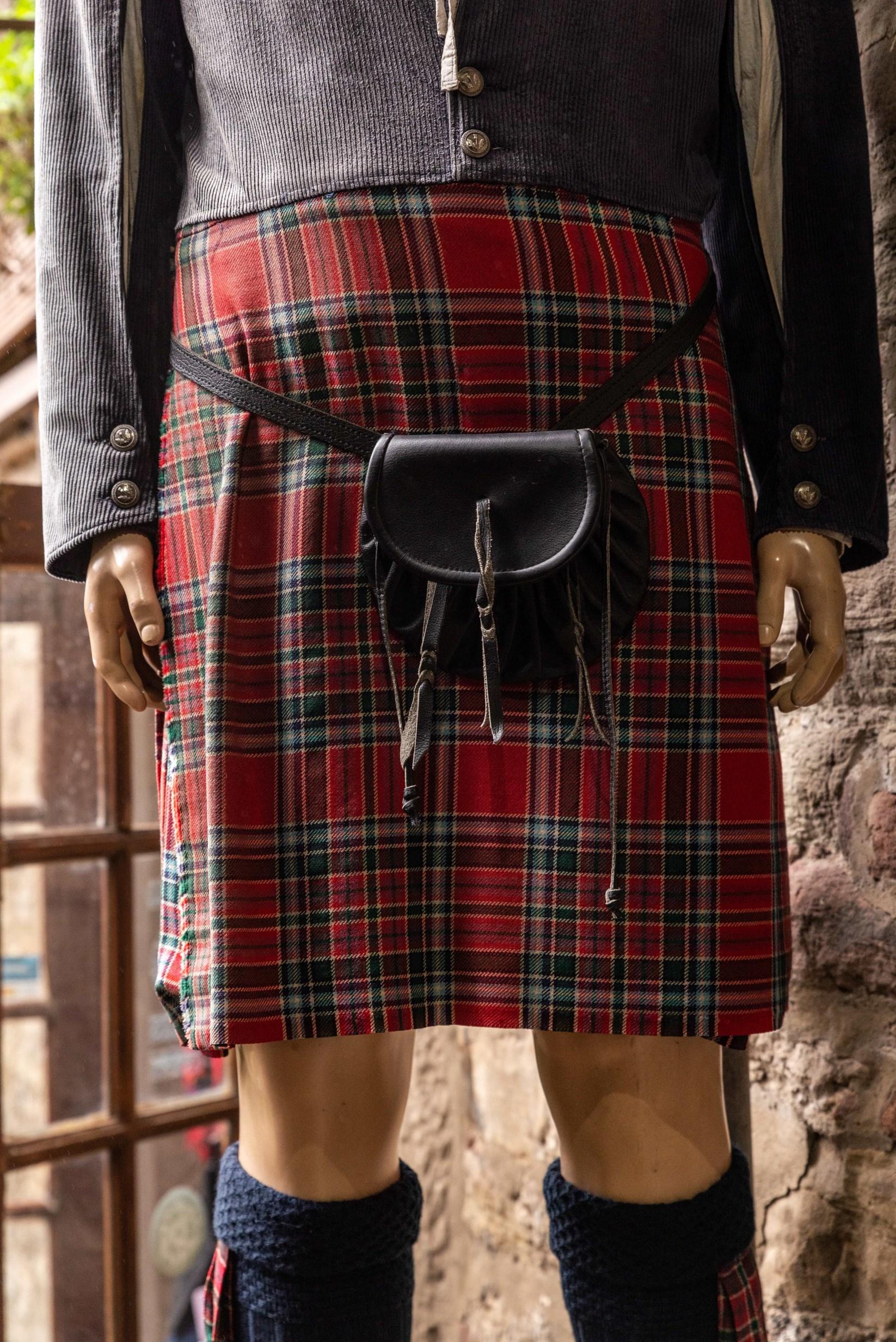



Webpage: seigar.wordpress.com
Instagram: instagram.com/jseigar
Galleries: flickr.com/photos/theblueheartbeat/albums
Blog: popsonality.blogspot.com
All Rights Reserved on article and photographs
SEIGAR © 2023.
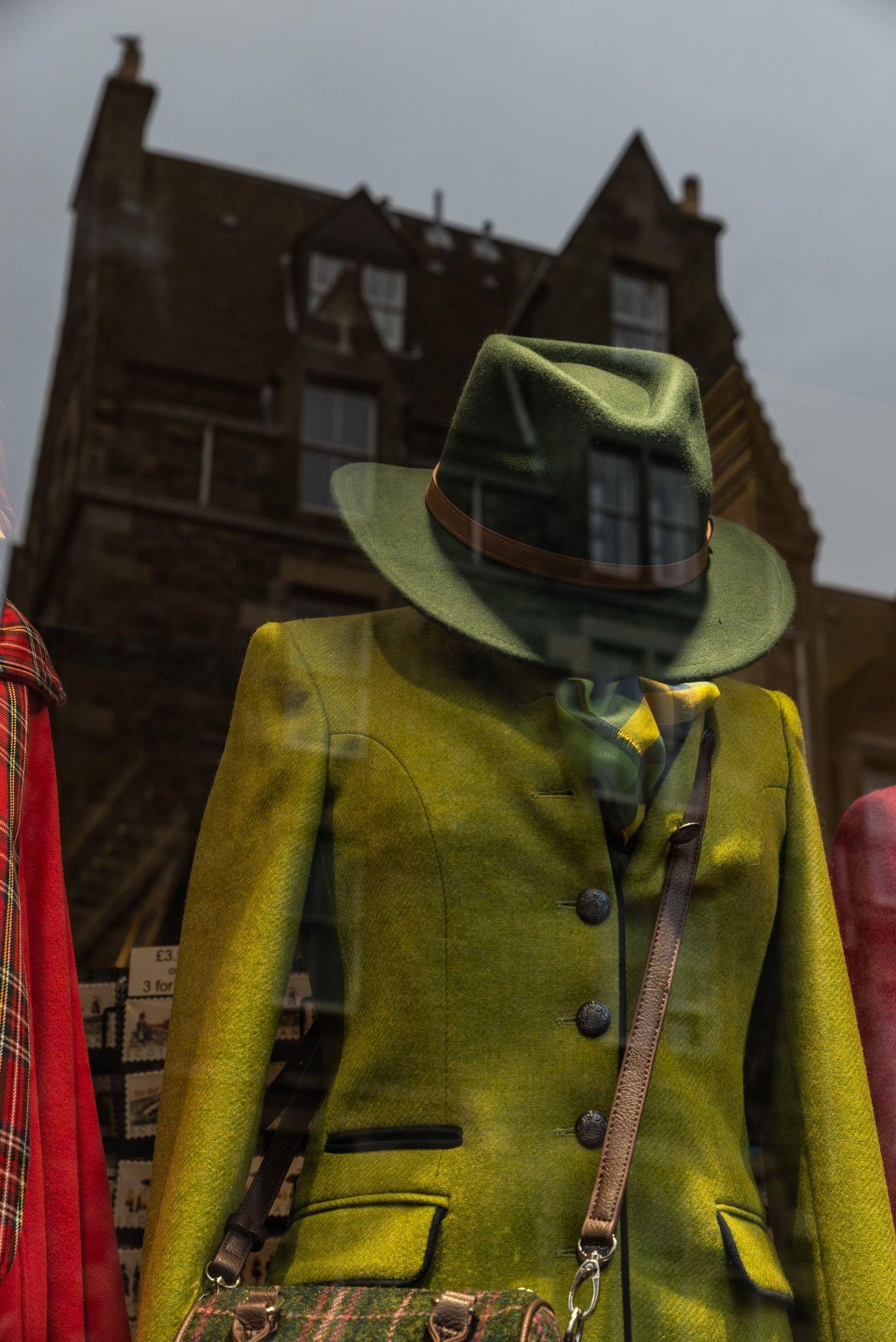
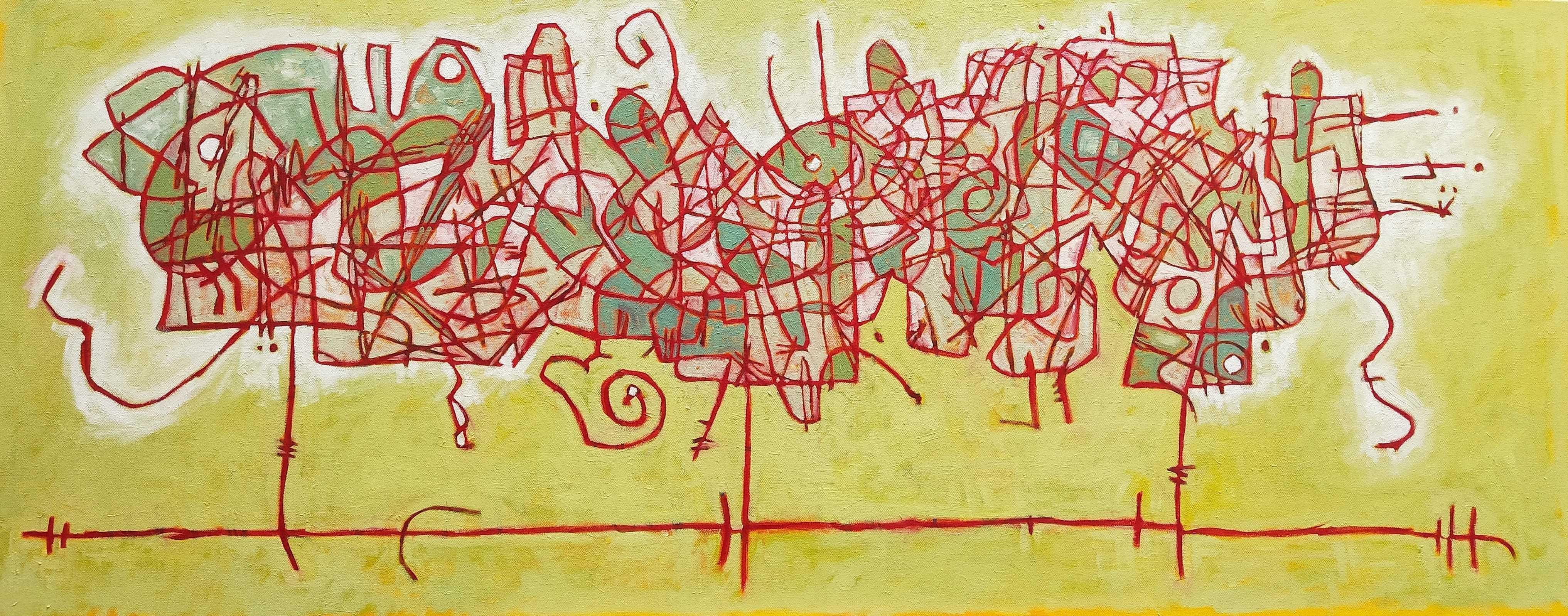
Margot Broug is an artist, therapist, poet and improvising InterPlayer, living and working in Newcastle NSW since 2009. Her studio of nearly five years is at the artists’ hub The Creator Incubator, Hamilton North, NSW.
Margot was born in The Netherlands and spent a lot of her childhood years travelling with her family and later lived in many European and Australian cities.
She is fascinated by life as a fundamentally playful and creative process, in which she participates. For her this means cultivating curiosity, love of beauty and embodied presence, to explore experiences and themes of consciousness in all areas of her life.
Margot runs monthly InterPlay classes in Hamilton. In her practice of InterPlay within the InterPlay community, she discovers emerging creativity in the embodied pursuit of enjoyment and fun in improvisation in connection with others. She loves to share the fun and invigorating space of Play with others, facilitating their reconnection to the PlayFul Self. She also runs a therapy business in Mayfield, practicing Body-Oriented Psychotherapy & Holistic Counselling. Margot also derives much joy from her volunteer role as a Primary Ethics teacher at her local primary school.
In 2022 Broug published in Anthology of Poems: Beyond Alienation Hatred and Terror: Compatriots with Love and Living-
Kind . In recent years Broug has exhibited in many group shows and her forthcoming second solo exhibition Growing Home 6-16th July at The Creator Incubator 15a /50 Clyde Street, Hamilton North, NSW.
Opening night 8th of July at 6pm.
My mind will want to pre-empt the next move and make up rules about where the paintings is going. I attempt to, instead, lean into my feeling experience, rather than allowing the restrictive and confused old thought patterns to structure my experience and work. This has allowed the old ways of relating to myself and the world, to dissolve. In my art practice, as in other aspects of my life, this makes me more present and appreciative of what is right in front of me. This process has also become evident for me in what I paint. Lately, the grid like structures have become lighter and more balanced in line. They appear less defining and run parallel with my letting go of needing to define things in my life. They come more from feeling than from mind, seeming to be more representative of a state than an idea or concept.
I also relate this too the internal identity structures I have been letting go of after leaving a long-term marriage over 4 years ago. Identities are definitions of self that we put on like clothes. And sometimes those clothes were chosen by us, a long time ago, or they have been given to us by our family, culture, or society. The difficulty of taking those identity clothes off is that we feel naked without them; exposed and unsafe.
In letting go of the identity and story I had about my life, I found a sense of self in my own presence. And where identities can be an inflexible and restrictive structure, sense of self is dynamic, organic, and fluctuating. And where I lived a number of defining and sometimes conflicting identities before, what I now experience is a sense of self created from my own more centred presence. This is home.

‘Growing Home’ is about letting go of externally derived identity, to move towards trusting my own lived experience, and allowing that to shape the home that is my life. I had ideas of course, of what I wanted to experience when I started living for and by myself. Initially I wrote down these visions I had for my own life. Until art took over from writing. For about three years I couldn’t put a word to paper. I can see now, looking at my paintings (and drawings) that my ideas were presenting themselves as organic grid structures and improvised line work. And in this exhibition, a number of the paintings show these grids are reaching down to earth, an inspiration reaching down to material reality.
When we think of something we want to create, our mind will generate a multi-dimensional mental image of it. We then go about the process of working to create this in material reality. In the process of doing so, we can come up against limits of what is possible. If we are making a sculpture, we might come up against materials not acting in the way that we need them to, to make it the same as out mental image. Or we might come up against the extent of our skills. Even so, for many artists this is also very much the challenge of making art; to grow in ability and skill. This concept doesn’t only relate to the process of making art, but also of course to general living. We have dreams for our lives of what we want to experience, do, have or how we want to live meaningfully.
There comes a time then, when we need to let go of the perfect mental image and play with what is actual, which is the interaction with the unknown. Play is an important word in my life. In Play I relate to reality as it presents itself to me.
‘Growing Home’ also refers to process of getting to know and appreciate myself as an artist. Having been a TCI (The Creator Incubator) Hatchling for 6 years has helped me accept and validate my own life-given individuality. I have been surrounded by the creative expression of the other wonderfully individualistic Hatchlings. Often, I have walked around in awe at the infinite breadth of diversity, beauty and also of effort, in the studios around mine. This diversity and beauty of expression is evident everywhere. Even in my studio, as I have come to realise…… If I but keep my heart and mind open to it. And like anywhere, in this community, there is also the sometimes very human and painful fact of what it takes to live one’s individuality. And during my residency here, when life was difficult at times, my ‘Growing Home’ also came about through the support of the TCI family. Even so, the time is ripe to leave the warm incubating lights of this place and move my art practice to the newly stoked fire of my own home.
 - Margot Broug © 2023.
- Margot Broug © 2023.



Website: www.margotbroug.com.au
InterPlay : www.interplayaus.com.au
All Rights Reserved on article and photographs
Margot Broug © 2023.
Page 216 : The untitled and eagerly defining lines of materiality
H92 x W60 cm. Oil on canvas, Margot Broug 2022.

Finalist in the 2023 Hunter Emerging Artist Prize.
Right : Detail - The untitled and eagerly defining lines of materiality
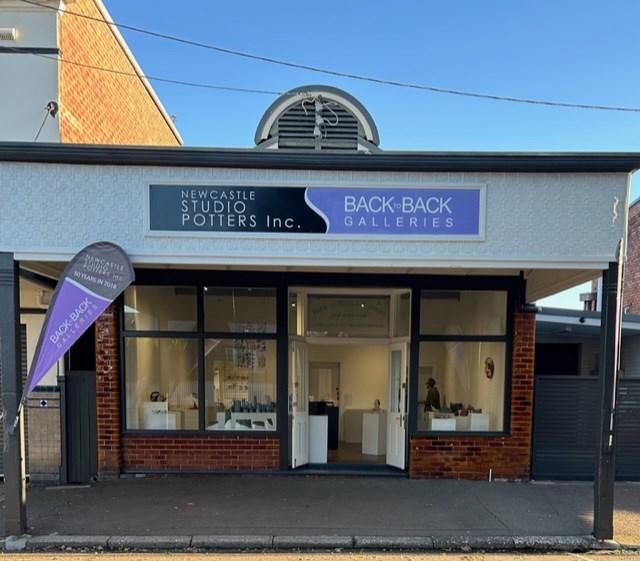
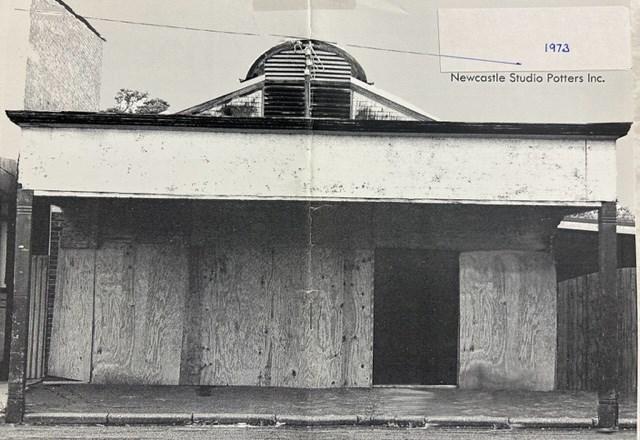
On 14 September 1968, the President of the Sydney Ceramic Study Group (Mrs Janet Mansfield) addressed a meeting at the home of Mrs Barbara Blaxland (now Pengelly). This was the beginning of the Newcastle Ceramic Group. The present name Newcastle Studio Potters Inc was introduced in 1983.
With the purchase of the butchery shop at Cooks Hill in 1973, the group began to renovate. After major fundraising the exhibition space was created and Back to Back Galleries opened on March 1, 1992.
It is with gratitude that the present membership looks back on the efforts of the founding members as this group continues to safeguard the legacy. This butchery shop at Cooks Hill still stands today.
The group, Newcastle Studio Potters Inc, held several events in 2018 to celebrate the 50th anniversary culminating with a formal dinner and recognition of the Life Members and all committee members who had served the group.
This year the group is celebrating 55 Years and an exhibition is planned with the theme of Emerald – a colour that will be included in each artwork.
Local artists are invited and encouraged to begin their professional journey at our gallery. While presenting exhibitions is various media, our focus remains on traditional and contemporary ceramics.
www.newcastlepotters.org
June 16 – July 2
CLAY MATTERS
2023 Diploma of Ceramics Graduates.
Newcastle Art School

July 28 - August 13
JOY
Janet Graham, Alice Neikirk
Catherine Kavanagh Di Gravio
August 18 - September 3
7 - 23 July
AT HOME...IN NATURE
Susie Oldfield & Phillipa Bird
SIX & TWO
Sharon Taylor, Sandra Burgess, Stephanie Berick
Jill Campbell, Clare Felton, Jackie Maundrell-Hall
57 Bull Street Cooks Hill NSW Hours: Fri Sat Sun 11am - 5pm


A R T S Z I N E
Arts Zine was established in 2013 by artists Eric and Robyn Werkhoven, now with a fast growing audience, nationally and internationally. Their extensive mailing list includes many galleries, art collectors and art lovers.





The Zine is free, with no advertising from sponsors. “It is just something we want to do for the Arts, which has been our lifelong passion.”
We have featured many national and international artists, photographers and writers including - Wendy Sharpe, George Gittoes, Matthew Couper, Kathrin Longhurst, Nigel Milsom, James Drinkwater and Kim Leutwyler, Blak Douglas and many more.
In 2017 it was selected by the NSW State Library to be preserved as a digital publication of lasting cultural value for long-term access by the Australi community.
















































The publication includes a collection of poems written over recent years, penetrating and profound observations on life. And a selection of Eric’s dynamic and prolific sculptures.
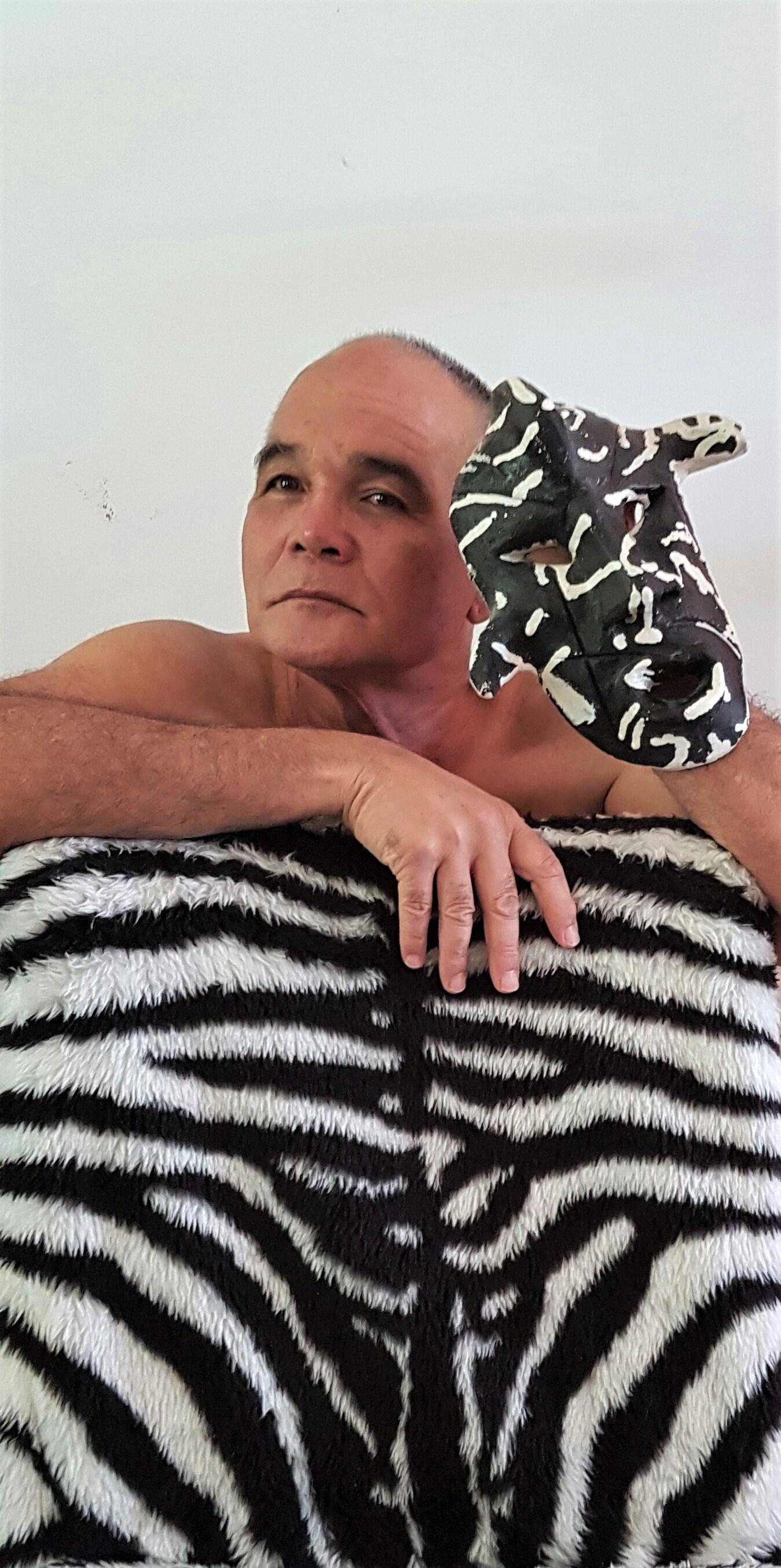
Enquiries contact:
E: werkhovenr@bigpond.com
Page 230 : Left - Front cover, The Fall, Autoclaved aerated cement / cement / lacquer, H32 x W46 x B38cm. Eric Werkhoven 2013. Right : Relief Carving The Battle, Autoclaved aerated cement Photograph by Robyn Werkhoven.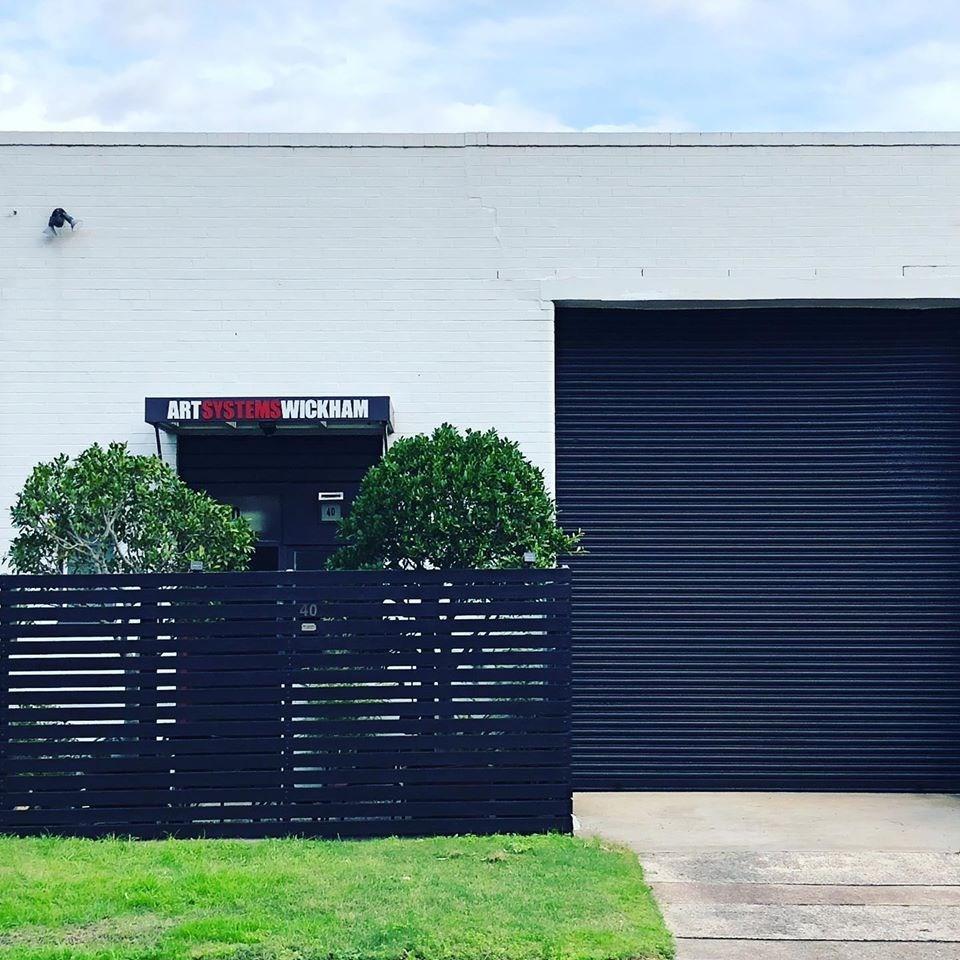




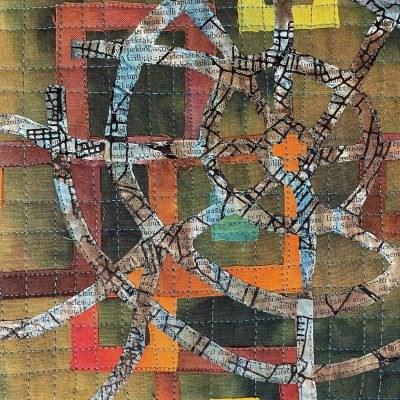

O7 June - 16 July
Down The Rabbit Hole Exhibition

17 July - 27 August
Rust and Stardust
Alysn Midgelow-Marsden
30 August - 01 October
Scraping by: Nicole De Mestre






24 JUNE - 16 JULY
Marlene Houston
Fleur Stevenson
Katrina Holden
22 JULY - 13 AUGUST
Barbara Nanshe
Susan Ryman

Memento mori - curated by Ahn Wells and Laura Wilson
19 AUGUST - 10 SEPTEMBER
Daniela Cristallo
Lezlie Tilley



Art and the Rhinoceros - There are over three hundred Rhino images in this book.
Whether in the ancient past or in the present the rhinos are always represented as huge, powerful and solitary animals. The book includes paintings, drawings, woodcuts, etchings, rock carvings and sculptures of the rhino all depicting the power of the animal.
These images of the rhino range from early civilisations such as in China, Roman Empire, Indus civilisation in Pakistan/ India area and from Southern Africa down to current day images of paintings and sculptures produced by modern day artists.
The text indicates where you may find these wonderful images as well as the websites of the artists concerned, the caves where the rhino images have been found and the places where posters use the rhino image.
There are very few of these magnificent wild animals left in the world, so unless they are protected and managed, artistic images will soon be the only viewing option.
Rhino Images – Art and the Rhinoceros, First Edition, 2017, is available for download at The Rhino Resource Centre web site.
Direct Link : http://www.rhinoresourcecenter.com/index.php?s=1&act=refs&CODE=ref_detail&id=1518479271
